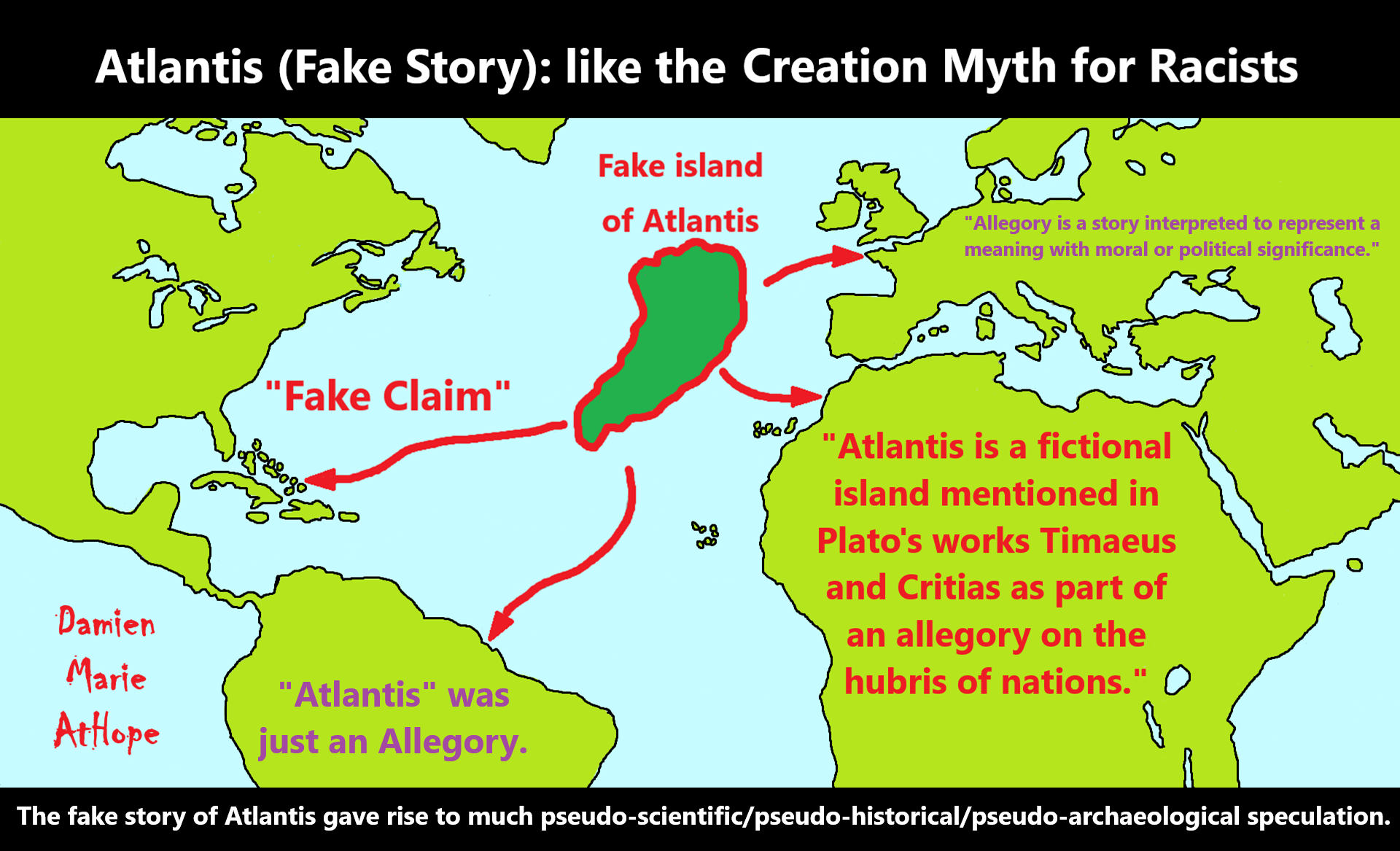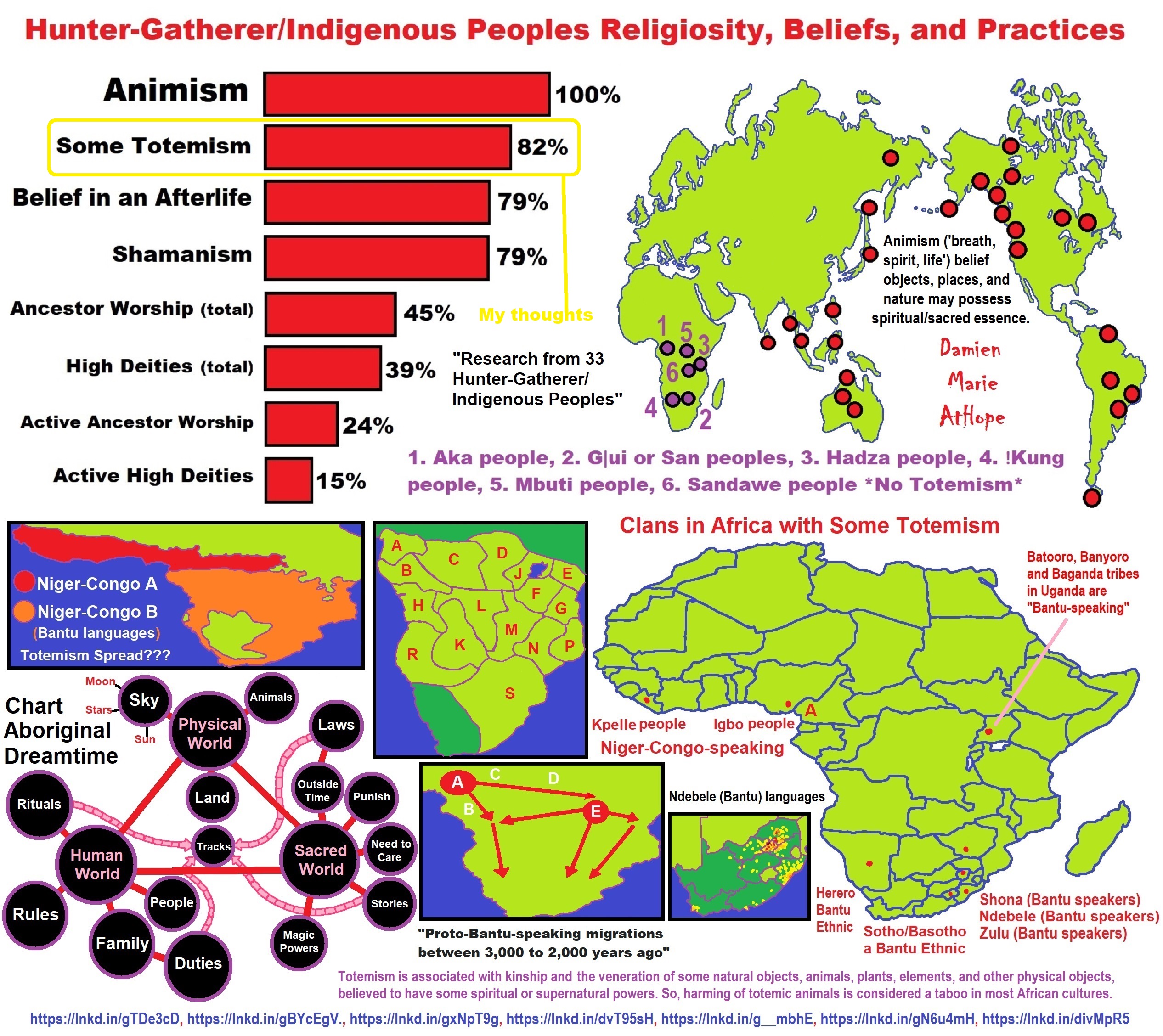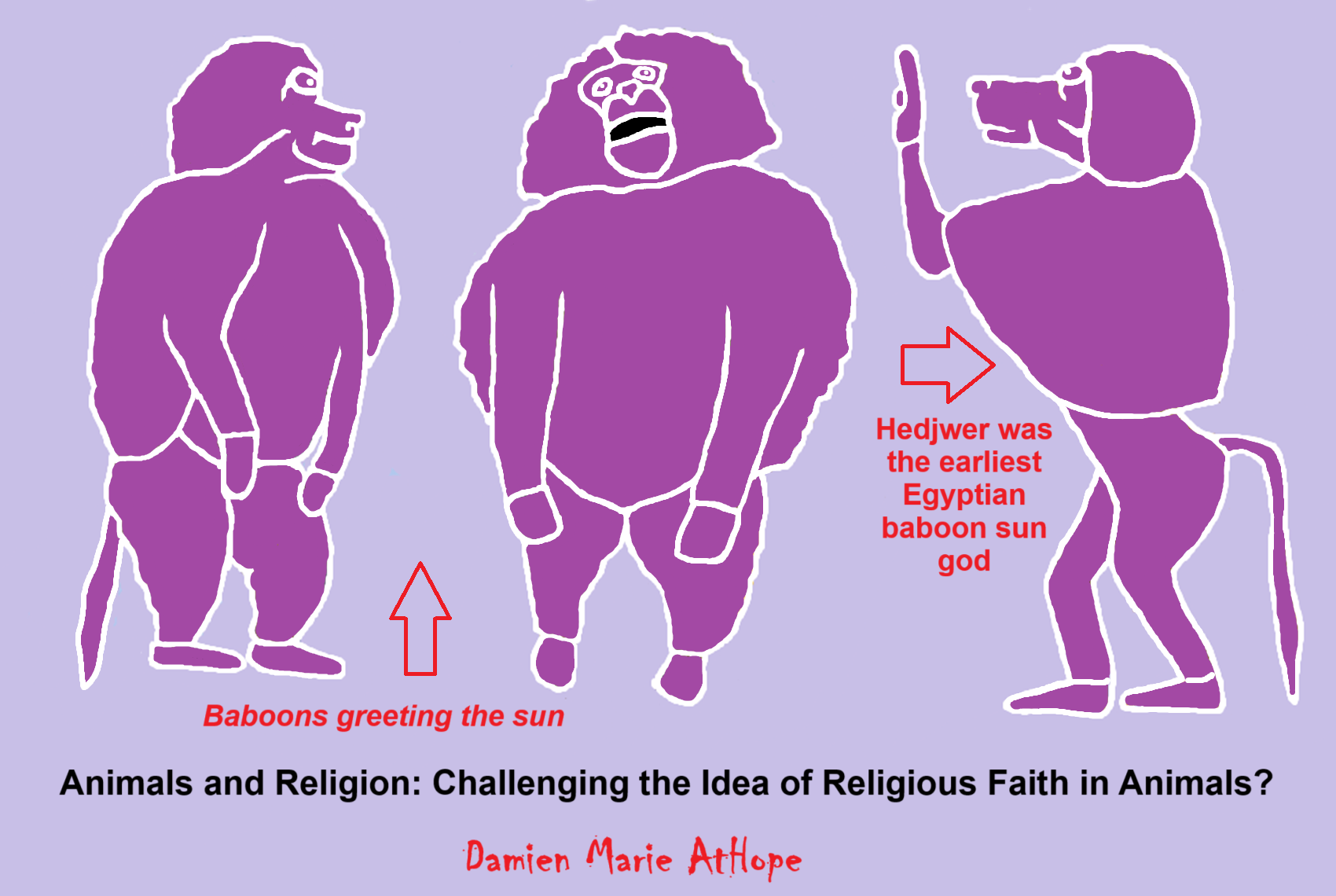
Baboons greeting the sun: Hedjwer, the ancient baboon sun god
Hedjwer was the earliest Egyptian baboon sun god, dating back to the early Dynastic period in Upper Egypt. Hedjwer was a solar deity and represented as a baboon, as these primates chatter and screech at sunrise and warm themselves in the early morning sun. The ancient Egyptians were wary of baboons as they exhibited many human characteristics, including strange chattering sounds. They believed that the baboons were singing to the sun god and that they were the first to pay proper religious observances. Hedjwer, the first baboon god, embodied royal ancestors, and the earliest pharaohs linked themselves to the glorious deeds of their forbears as indicated in their serekh, the hieroglyph used to convey the name of the pharaoh. The serekh of Narmer (founder of the First Dynasty) also represented Hedjwer. Baboons were often portrayed in art with their arms raised in worship of the sun, and are connected to Divine Consciousness. The baboon god was also depicted holding the Wadjet or “udjat” (the Eye of Horus, the All-seeing Eye, the Eye of Ra) and was one of the most potent symbols of ancient Egypt, symbolizing restoration, protection, and sacrifice.” ref
Religion, Ritual, and Spiritual
To me, there is a difference in the concepts of religion, ritual, and spiritual. I don’t believe in the term spiritual. I see spirituality as trying to make magical thinking about the world that expresses itself as only natural, and no supernatural. Ritual is a type of behavior; it can be for personal reasons, or social reasons, political or other identity reasons, and could be related to spiritual reasons, such as its claimed awe. As well as religion reasons. It is an error, then, to say that because some animals may do a ritual, it means it is evidence of animal religion.
Religious ideas or identity would need a high thinking ability and the ability to communicate ideas and identity with your religion. Animals can be intelligent, but compared to humans, they are at the level of children. And without a language, it is hard to spread or develop awe into religion. Well, it is true that it is common for children to express animistic thinking, and even if we grant this animistic attitude to animals with childlike intelligence, animism is not a religion; it is more like spiritism/spiritual thinking.
I also don’t believe animals, even ones as smart as kids, have animism; they seem not to believe in a magic-filled world, and instead demonstrate a very naturalism so extreme that when they see magic tricks, it is extremely shocking. Thus, they don’t have magical thinking the way humans do. Even if an animal were spiritual, that still doesn’t make it a religion. Even if they do one religious-like behavior, that one religious belief, even if we grant them that for the sake of argument, doesn’t constitute a religion.
Religion is a set of beliefs, it will have animism/spiritual, supernatural power/supernatural being, and rituals at least. Likewise, I see religion as an evolved cultural product that moved in cultural migrations. I am not simply biased, only thinking modern humans can have religion. I think it seems that Neanderthals exhibited religion thinking and behaviors. They are a closely related more ancient human and are also believed to have had language, which l think is important in developing culture into religion.
Burial/grave stashing started in the later homo but mainly developed in Neanderthals and Modern humans. Thus, not only do I not believe animals have religion, but likewise, no hominid until Neanderthals had religion, which in some way or another, Neanderthals passed pre-animism/animism with ritualistic behavior to us around 100,000 years ago. And we evolved religion from this.
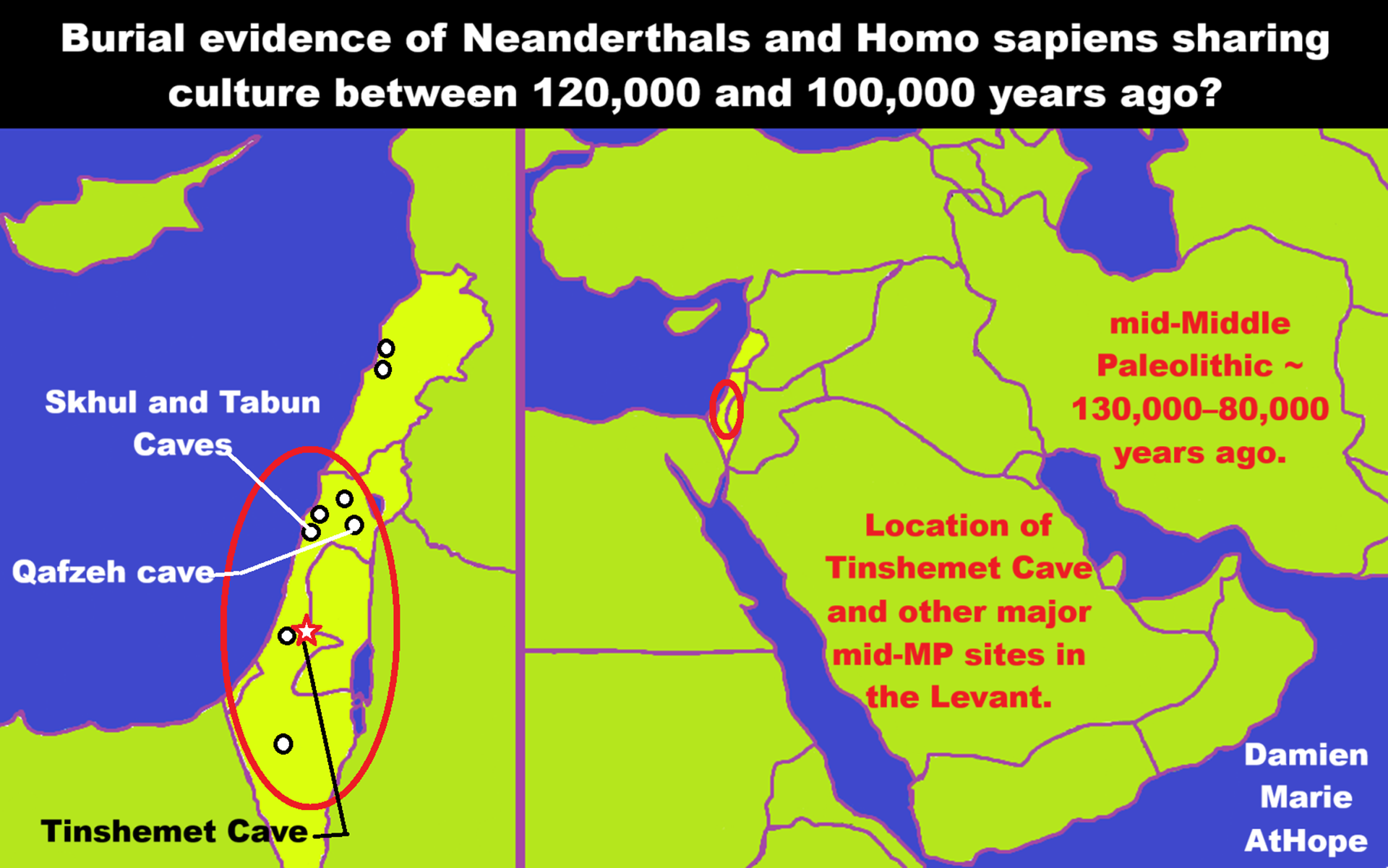
I have been guessing, from the available evidence, for years, that Neanderthals and Homo sapiens shared culture/burial/religion and that it likely happened between 120,000 and 100,000 years ago.
As seen in my 2016 blog post, Did Neanderthals teach us “Primal Religion (Pre-Animism/Animism? “)” 120,000 Years Ago?
Now new research states, “First burials: evidence of Neanderthals and Homo sapiens sharing culture 110,000 years ago.“
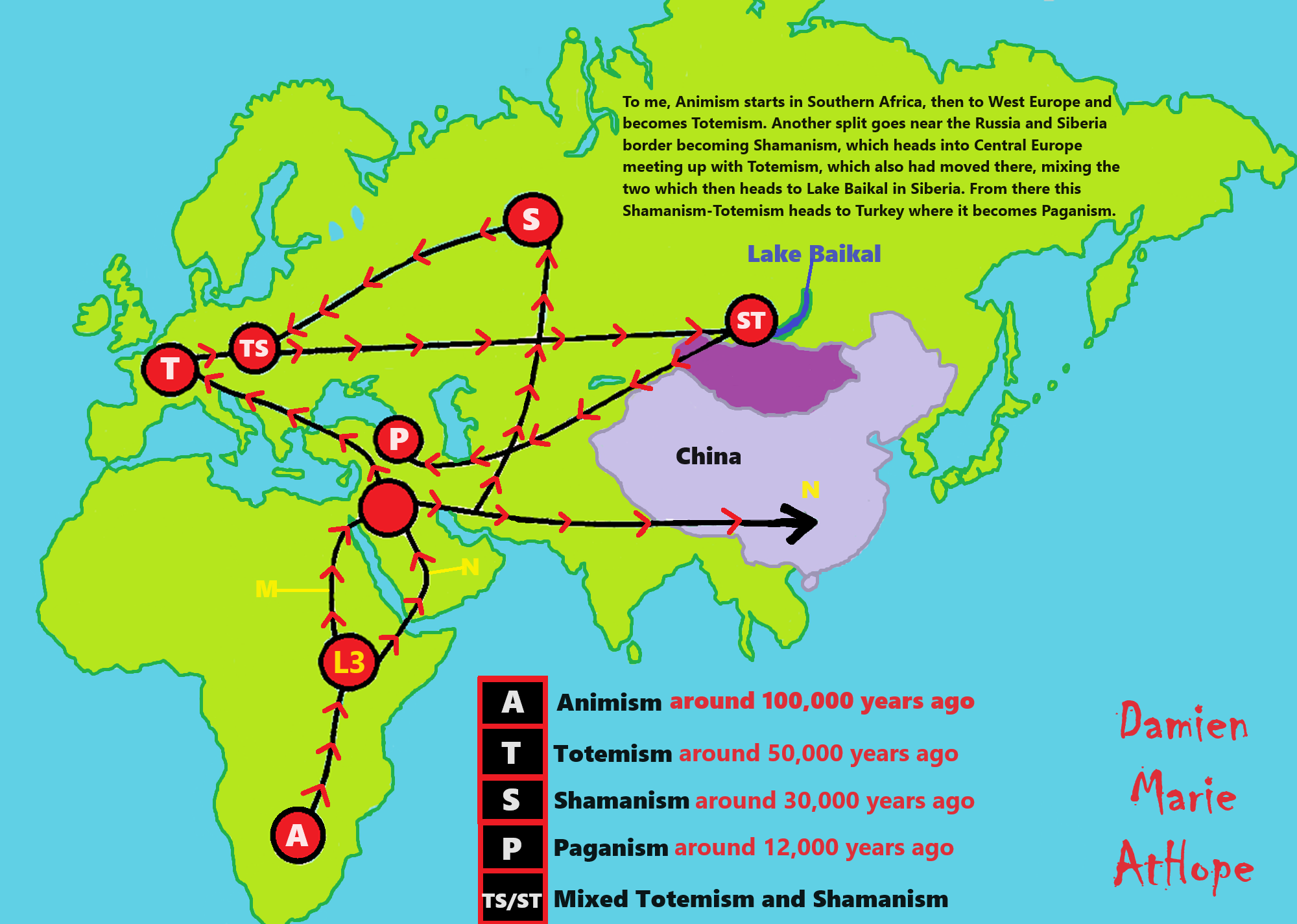
To me, Animism starts in Southern Africa, then to West Europe, and becomes Totemism. Another split goes near the Russia and Siberia border becoming Shamanism, which heads into Central Europe meeting up with Totemism, which also had moved there, mixing the two which then heads to Lake Baikal in Siberia. From there this Shamanism-Totemism heads to Turkey where it becomes Paganism.
Understanding Religion Evolution:
- Pre-Animism (at least 300,000 years ago)
- Animism (Africa: 100,000 years ago)
- Totemism (Europe: 50,000 years ago)
- Shamanism (Siberia: 30,000 years ago)
- Paganism (Turkey: 12,000 years ago)
- Progressed organized religion (Egypt: 5,000 years ago), (Egypt, the First Dynasty 5,150 years ago)
- CURRENT “World” RELIGIONS (after 4,000 years ago)
- Early Atheistic Doubting (at least by 2,600 years ago)
“An Archaeological/Anthropological Understanding of Religion Evolution”
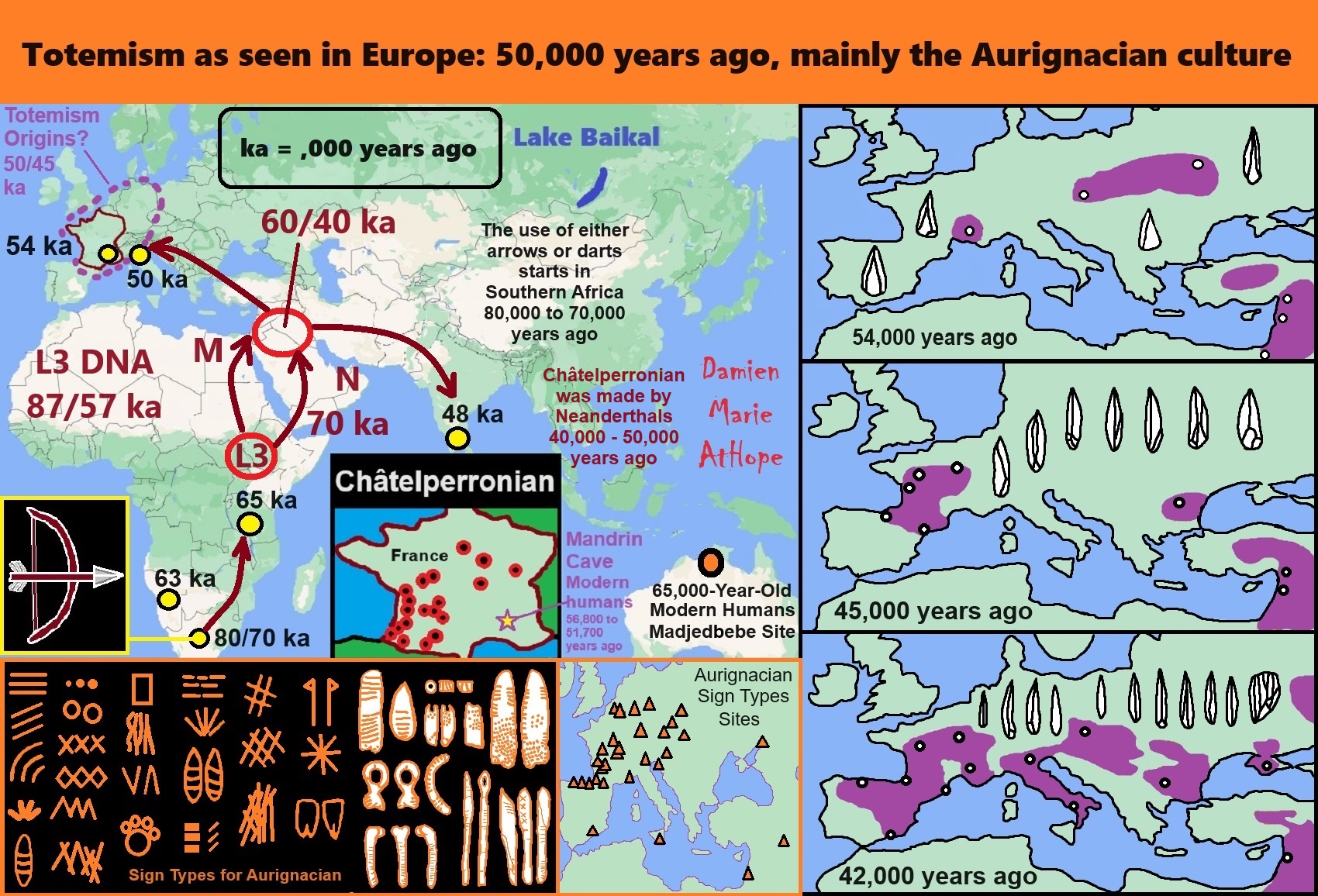
ref, ref, ref, ref, ref, ref, ref, ref, ref, ref, ref, ref, ref, ref, ref, ref, ref, ref, ref, ref, ref, ref, ref
This is my thoughts/speculations on the origins of Totemism
Totemism as seen in Europe: 50,000 years ago, mainly the Aurignacian culture
- Pre-Aurignacian “Châtelperronian” (Western Europe, mainly Spain and France, possible transitional/cultural diffusion between Neanderthals and humans around 50,000-40,000 years ago)
- Archaic–Aurignacian/Proto-Aurignacian (Europe around 46,000-35,000)
- Aurignacian “classical/early to late” (Europe and other areas around 38,000 – 26,000 years ago)
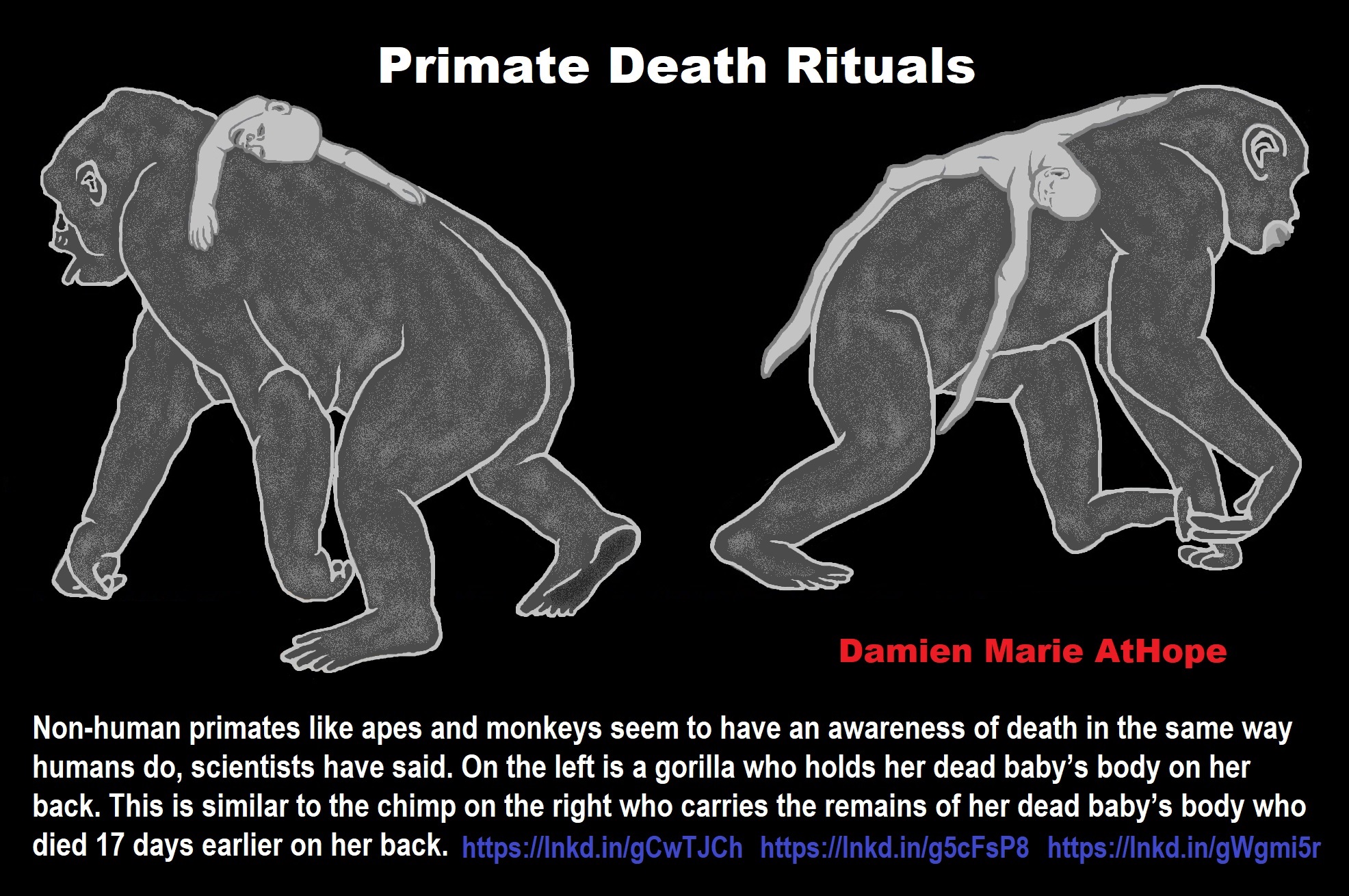
Non-human primates like apes and monkeys seem to have an awareness of death in the same way humans do, scientists have said. On the left is a gorilla who holds her dead baby’s body on her back. This is similar to the chimp on the right who carries the remains of her dead baby’s body who died 17 days earlier on her back. ref, ref, ref
“After analyzing over 200 years worth of research into how primates deal with death, they found common behaviors emerged—including carrying their dead, defending the deceased from threats and exhibiting a grief-like response.” ref
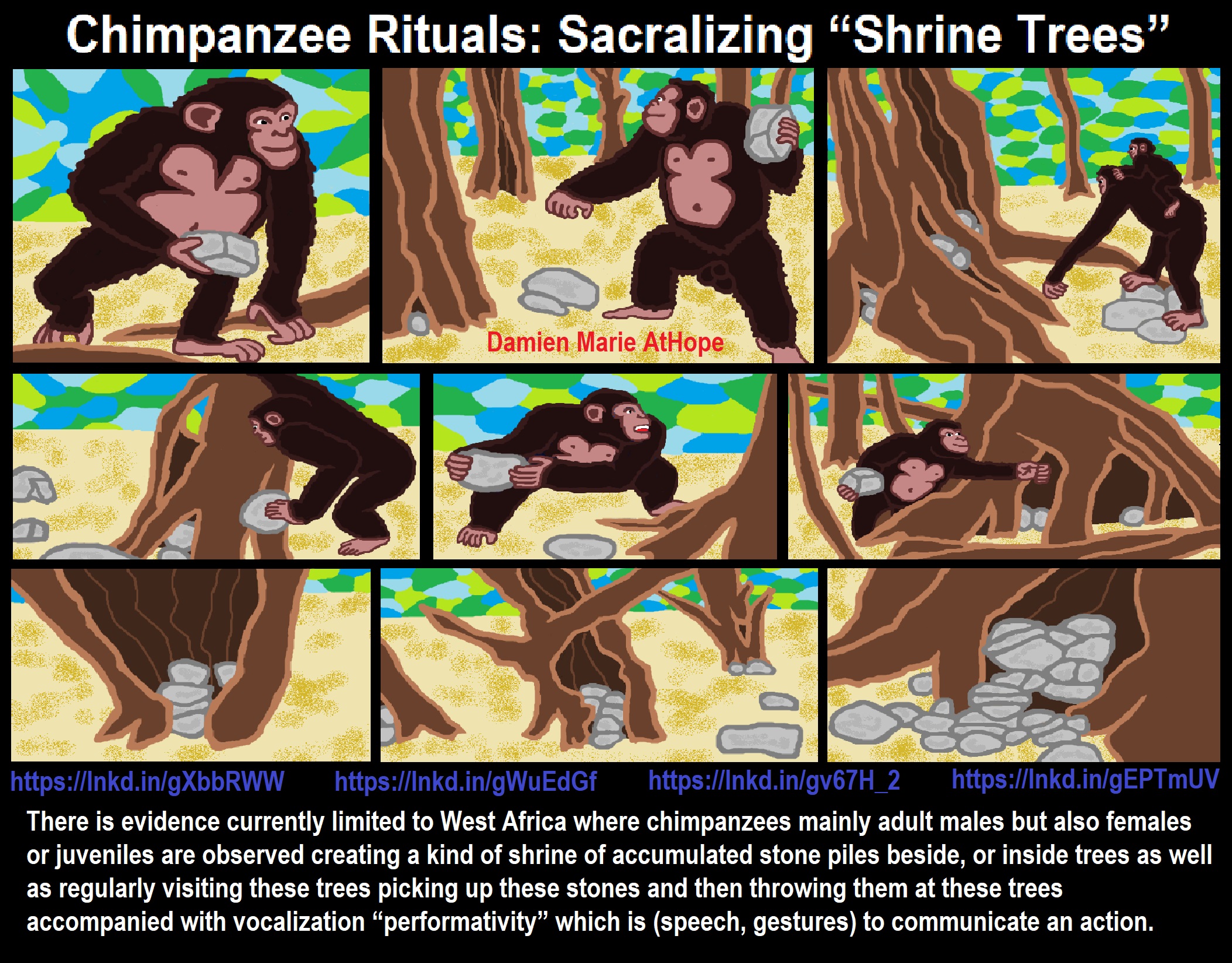
Chimpanzees Sacralizing Trees?
There is evidence currently limited to West Africa where chimpanzees mainly adult males but also females or juveniles are observed creating a kind of shrine of accumulated stone piles beside, or inside trees as well as regularly visiting these trees picking up these stones and then throwing them at these trees accompanied with vocalization “performativity” which is (speech, gestures) to communicate an action. Chimpanzees have been observed engaging in “social learning,” both teaching and learning such as tool use as well as communication signals: vocal and gestures. Such social learning is seen as playing an important and unique role in the development of human language, culture, and mythologizing. All together such things observed in these West Africa where chimpanzees could indicate some kind of what could be perceived as magical thinking or at least quasi-magical thinking in the sacralizing of trees as it does not seem connected to some utilitarian or food foraging practice of which rocks or tools would make sense. This at first may sound too complex for a nonhuman animal but what needs to be understood is that chimpanzees have been known to exhibit “metacognition,” or think about thinking. Also, chimpanzees have the greatest variation in tool-use behaviors of any animal, second only to humans, where humans seem to have magical thinking or irrational beliefs are hardwired in our brains at a very ancient level because they involve mentally-fabricated patterns of thinking. Moreover, such processing abilities are somewhat common among non-human primates if not lower mammals as well to some extent and can be seen as a part of evolutionary survival fitness and thus not uniquely human. It can be thought that different emotions evolved at different times with fear being ancient care for offspring relatively next later followed likely by extended social emotions, such as guilt and pride, evolved among social primates. Why this could be important is it is believed that emotions evolved to reinforce memories of patterns adding to survival and reproduction as well as responses to internal or external events and in such remapping facilitated by emotions could involve mentally-fabricated patterns of thinking which could superstitionize things in the world that do not truly limit it to the way it is possibly adding a kind of animism or the like involving some amount of magical thinking such as sacralizing of trees. Magical thinking such as beliefs that there are relationships between behaviors or sounds thought to have the ability to directly affect other events in the world. Whereas quasi-magical thinking is acting as if there is a false belief that action influences the outcome, even though they may not really actualize or intentionally hold such a belief. Now I doubt West African chimpanzees are fully mythologizing the trees to a human magical thinking extent but we can see some possibilities of what about them could be inspired by magical thinking. Magical thinking may lead to a type of causal reasoning or causal fallacy that looks for meaningful relationships of grouped phenomena (coincidence) between acts and events. Moreover, magical thinking when applied to trees is significant as believed sacred totems and natural sacred representations in many of the world’s oldest myths possibly because of using magical thinking when observing the growth and annual death and then a revival of their foliage, seeing them as symbolic representations of growth, death, and rebirth. As well as trees may be conceived as existing in three realms the underworld or death with the roots the world of the living the trunk existing in our world above the ground and its branches reaching to the heavens thus existing in the realm of the spirits, ancestors or gods.
References 1, 2, 3, 4, 5, 6, 7, 8, 9, 10, 11
Chimps Throw Rocks at Trees Because of the Sound It Makes, Not Because It’s a Sacred Ritual
“However, a team of scientists led by Ammie Kalan, from the Max Planck Institute for Evolutionary Anthropology, Germany, has now carried out experiments suggesting the chimps select which trees to throw rocks at based on their acoustic properties. The team believes the behavior relates to communication, rather than any ritualistic practice. “The behavior immediately caught our attention since the trees where the stones accumulate at the base or in the hollow grooves are sites that the chimpanzees repeatedly revisit to throw rocks at the trees, leaving behind a conspicuous visual signal in these chimpanzee territories. “Moreover, stone tool-use is generally rare in primates, and even more so for non-foraging related behaviors. The non-foraging tool-use, site fidelity, and potential communicative and social aspects to this behavior are what caught my attention.” ref
According to Dr Alex Fitzpatrick,
“The term “ritual” has a bit of a reputation among archaeologists. Well, less of a “reputation” and more of a “running joke”, if I’m being honest…one of the first things I learned as an undergraduate taking an “Intro to Archaeology” class was that “ritual” is what archaeologists write when they don’t know what’s happening at a site.” ref
“And, to be honest, that makes sense. How do we even define the word “ritual”? Let’s take a look at some examples:
Colin Renfrew (1985) identified the “Four Aspects of Ritual Practice” as:
- An attention-focused activity that can be seen in the physical record
- A liminal zone that can be correlated with the remaining material
- A focus on transcendence and symbol in the material record
- Archaeological evidence for participation or offerings” ref
“Peter Tompkins (2009), on the other hand, highlights the main elements used for “ritualization” to further define “ritual”:
- Temporality – Experiencing time differently
- Spatiality – Restricting space
- Fragmentation – Relationships between parts and whole
- Distance and Scale – Enlargement and minimization for emphasis
- Value and Substance – Setting “ritual” importance
- Food and Cuisine – Associated with and used to designate “ritual acts” ref
“More recently, Ronald Hutton (2013) adds that ritual, as well as religion, can be differentiated from other acts due to the need for imaginative processes, arguing that finding evidence of early ritual will correlate to the oldest instances of the development of an imagination and symbolic behavior.” ref
“To round these definitions off, Joanna Bruck (1999) provides her perceived definition of “ritual” in her critique of its use in archaeology, arguing that the discipline sees it as something “non-functional” and “impractical”, mutually exclusive from functionality. In some respects, there are some commonalities in these definitions – for most, ritual is something associated with more abstract, often spiritual concepts that can be differentiated in some sense from what we consider “normative”. Except…that’s a bit problematic as well. After all, what’s “normal” then? This has led to some archaeologists, such as Joanna Bruck (1999) to consider these dualities – “sacred”, “profane”…are these always separated?” ref
“This has been discussed specifically with regards to prehistoric rituals in Europe, where “ritual” and “domestic” contexts have been found intermingled at sites. Tompkins (2009) theorises that by drawing from the domestic sphere, rituals allowed prehistoric people to gain new insights and new experiences from their everyday life. Bruck (1999) further argues that perhaps the need to differentiate between “ritual” and “non-ritual” is simply born from the bias of Post-Enlightenment rationalism, and that we should accept that they can co-exist simultaneously in prehistoric life.” ref
“Unfortunately, we may never truly agree on what “ritual” is. Based on textual and ethnographic evidence, rituals in the past would most likely utilize tools and offerings that wouldn’t leave behind much of a trace within the archaeological record (Wait 1985), rendering the act as “archaeologically invisible” (Bruck 1999). Ultimately, we will never really have material evidence to base a definitive definition of ritual on – of course, it would be impossible to have one anyway, as ritual will be variable by culture!” ref
“So, as we return to modern day paganism, we find that many practitioners of alternative spiritualities will often say that “everything is ritual” (Sylvan 2016). Its a common phrase, promoting a popular concept among modern spiritual communities that one should infuse reverence for the divine into all aspects of everyday life. So perhaps future archaeologists will actually be able to call most things “ritual” and not be joking? Who knows. That’s the beauty of abstract concepts like “ritual” – they’re always changing with the times. And so will our interpretations of them.” ref
Archaeology of Religion and Ritual
“Religion may be defined as “a set of beliefs concerning the cause, nature, and purpose of the universe, especially when considered as the creation of a superhuman agency or agencies, usually involving devotional and ritual observances, and often containing a moral code governing the conduct of human affairs,” whereas ritual is “an established or prescribed procedure for a religious or other rite.” Archaeologists may study the material traces of religious ritual (for example, the ritual destruction of ceramic vessels during the Aztec New Fire ceremony) or the material correlates of religion as a totalized worldview (for example, Elizabeth Kyder-Reid’s study of the Southern Redemptorists’ reconfiguration of landscape and artifacts to reflect their ideals of community and poverty in material form).” ref
“As in religious studies and the Anthropology of religion, many archaeologists differentiate between “world religions,” and “traditional” or “indigenous religions.” “World religions” are defined by Bowie (2000: 26) as:
- Based on written scriptures.
- Has a notion of salvation, often from outside.
- Universal, or potentially universal.
- Can subsume or supplant primal religions.
- Often forms a separate sphere of activity.” ref
“while indigenous religions are defined as:
- Oral, or if literate, lacks written/formal scriptures and creeds.
- ‘This worldly’.
- Confined to a single language or ethnic group.
- Form basis from which world religions have developed.
- Religious and social life are inseparable.” ref
However, Timothy Insoll (2004) has argued that these categorizations arise from a much-critiqued neo-evolutionary perspective. Strict dichotomies of religious forms may also contribute to skewing research toward state religions, leaving household religious practice, and the relationships between these, under-investigated (a trend noted by Elson and Smith, 2001). Insoll (2004) argues that archaeologists may contribute to blurring the boundaries of world and indigenous religions. The archaeology of religion also incorporates related anthropological or religious concepts and terms such as magic, tradition, symbolism, and the sacred.” ref
“Theory within the archaeology of religion borrows heavily from the Anthropology of religion, which encompasses a broad range of perspectives. These include: Émile Durkheim‘s functionalist understanding of religion as serving to separate the sacred and the profane; Karl Marx‘s idea of religion as “the opium of the masses” or a false consciousness, Clifford Geertz‘s loose definition of religion as a “system of symbols” that orders the world, Victor Turner‘s work on ritual, including rites of passage and liminality, Max Weber‘s religious types and thoughts on the relationship between economics and religion; Claude Lévi-Strauss’ structuralist understandings of totemism and myth; and Mary Douglas’ idea of the division of “purity and danger.” ref
“Archaeological studies of religion increasingly recognize religion as an organizing principle in social life, rather than as a separate sphere of activity. They include religion as an axis of identity that structures social life and personal experience. Therefore, entire artifact assemblages (rather than specifically “religious” artifacts, such as rosary beads) can be interpreted according to the ways that they simultaneously create, display, and constrain notions of self according to religious ideas. For example, John Chenoweth (2009) interpreted ceramic assemblages and burials according to Quaker ideals of plainness and modesty.” ref
“Because social identity is both imposed and negotiated through social practice, including material practice, archaeologies of religion increasingly incorporate practice-based theory. Building upon Anthony Giddens’ idea of structuration and Pierre Bourdieu‘s ideas of both practice and cultural capital, theories of material practice posit that people use material goods to negotiate their places within social structures. Examples of the archaeological interpretation of religion and ritual as part of social negotiation, transformation or reinforcement include Chenoweth’s work on Quaker religious practice, Kyder-Reid’s work on the Southern Redemptorists, and Timothy Pauketat’s work on feasting in Cahokia (Pauketat et al., 2002).” ref
“Because archaeology studies human history through objects, buildings, bodies, and spaces, archaeologists must engage theories that connect anthropological and sociological theories of religion to material culture and landscapes. Theories of materiality and landscape serve to connect human activities, experiences, and behaviors to social practices, including religion. Theories of embodiment also serve to interpret human remains as they relate to religion and ritual.” ref
“The archaeology of religion makes use of the same material evidence as other branches of archaeology, but certain artifact classes are particularly emphasized in studying religion and ritual in the past:
- “Human remains and burial assemblages can offer many clues to religious and ritual activity. Human remains themselves are used in all branches of archaeology for information on sex, age, occupation, and disease. Methods of interment (including burial position, cremation, burial location, primary and secondary burials, etc.) contribute to understanding changing religious practice, as well as social difference within groups. Total burial contexts, i.e., the setting, artifacts, ecofacts, and human remains themselves, may provide evidence of religious beliefs about death and the afterworld.” ref
- “Religious buildings, such as temple complexes, kivas, and missions, are often used to examine communal religious and ritual activity. Part of archaeoastronomy is the investigation of how buildings are aligned to astral bodies and events, such as solstices, which often coincide with religious or ritual activities. Archaeological examinations of religious buildings can reveal unequal access to religious knowledge and ritual. Religious buildings frequently contain religious iconography that provides insight into the symbolic dimensions of religious life.” ref
- “Within landscape archaeology, sacred landscapes are an increasingly important focus of study. Landscapes are imbued with sacred meaning throughout the world; aboriginal Australian songlines, and the related belief that mythical events are marked on the landscape, are one example. Human modifications to landscapes, such as Kyder-Reid’s study of the Redemptorists’ modifications of their estate to emphasize communality, may point to the enactment of religious views.” ref
- “Religious iconography, symbols, ethnographic texts and ethnographic analogy are important tools that archaeologists use to compare with the material record to examine religions in the past. Though texts are not direct “windows to the past,” particularly for societies with few or no written records, they are valuable lines of evidence that may be contradicted or supported by the material record.” ref
- “Common artifact classes such as ceramics have been increasingly reinterpreted within a religious framework. According to the idea of religion as a form of social practice and a total worldview, any artifact may potentially be used to embody religious ideas and ideals in material form. Patterns of artifact and ecofact use within ritual contexts may expose preferences or sacred meanings of certain materials; the ritual use of pine among the ancient Maya is one example.” ref
Anthropology Of Religion
“Despite a keen and enduring interest in religion, there is no single, uniform anthropological theory of religion or a common methodology for the study of religious beliefs and rituals. Researchers in the area cannot agree as to exactly how “religion” should be defined or what the term religion should encompass. Efforts at defining religion—ranging from Tylor’s 1871 definition of religion as “the belief in spirit beings” to the more complex definitions offered by Clifford Geertz and Melford E. Spiro—have met with considerable resistance (Morris 1987, Klass 1995, Saler 1993). Nevertheless, Geertz’s definition by far has been the most influential anthropological definition of religion in the twentieth century.” ref
“Geertz (1973) defined religion as (1) a system of symbols which acts to (2) establish powerful, pervasive, and long-lasting moods and motivations in men [and women] by (3) formulating conceptions of a general order of existence and (4) clothing these conceptions with such an aura of factuality that (5) the moods and motivations seem uniquely realistic. Although his definition may be useful in elaborating what religion is like conceptually and what it does psychologically and socially, Geertz has been criticized for failing to explain specifically how a researcher might identify religion when encountered in the field. A major stumbling block to all definitions of religion, of course, is that religion is not a “thing” but an abstraction.” ref
“Other twentieth-century definitions of religion (e.g., Spiro, Jacob Pandian, E. E. Evans-Pritchard) follow Émile Durkheim (1912) in positing a rigid dichotomy between the so-called supernatural and natural, or sacred and profane orders. These alternative definitions have proved no more satisfactory than Geertz’s because distinctions between supernatural and natural are seldom obvious and may vary dramatically from individual to individual and from society to society.” ref
“In the later twentieth century, debate has arisen concerning the scope of the anthropology of religion. Do anthropologists of religion only study religions in tribal settings? Is it exclusively the study of non-Western religions? Is it to be limited to the study of religion among oppressed and marginalized people? The focus of anthropological study has shifted from the study of tribal to modern religions. A number of well-received studies have analyzed religion in developing societies, Europe, and the United States. Many of the leading contemporary exponents of anthropology of religion —Geertz, Spiro, Vincent Crapanzano, Victor Turner, James W. Fernandez, Sherry B. Ortner, Mary Douglas, James Boon, and Stanley J. Tambiah—have devoted the bulk of their attentions to local variants of major world religions (Hinduism, Islam, Buddhism, and Christianity) and/or the impact of world religions in developing countries (Java, Indonesia, Morocco, Sri Lanka, South Africa, Nepal, and Burma) instead of the religions of isolated tribal groups. Contemporary ethnographers concentrate on examining religious diversity in complex societies rather than providing further documentation for uniformity in tribal religions.” ref
“An unresolved issue facing the anthropology of religion is the nature and problem of religious belief itself. “Belief” is the central focus of Protestant Christianity but is clearly of less concern in tribal religions, in which questions of orthodoxy seldom arise. There has been protracted debate among scholars as to whether it is possible for a nonbeliever to make definitive pronouncements concerning the religious beliefs of others. Can a religion be understood fully only from the perspective of the believer? While a number of leading psychologists and sociologists of religion are themselves adherents to the faiths they study, the overwhelming majority of anthropologists are skeptics. Most anthropologists are materialists and reductionists. They would find themselves in strong agreement with Firth (1995:215), who contends that “there is truth in every religion. But it is a human not a divine truth.” Belief presents special problems for anthropologists because conversion is seldom an option for outsiders. Nevertheless, a number of anthropologists have insisted that religions can be grasped only from “within.” Ethnographers who conduct research among pentecostalists and fundamentalists are often themselves members of these groups, and many younger anthropologists who specialize in new religious movements such as neo- and core shamanism are themselves avid practitioners.” ref
“The hallmark of twentieth-century anthropology has been the advocacy of firsthand, participant observation and/or fieldwork. This has altered the character and scope of research on religion and forced anthropologists to become more modest in their goals and less sweeping in their generalizations. Contemporary anthropological assertions are more likely to concern the manifestation of a particular belief in a particular place and time rather than speculate on “religion” in the abstract. Researchers focus on a single aspect of a religion (a specific myth, a specific ritual, or an aspect of a ritual such as divination, sacrifice, spirit possession, and so on) but refuse to examine an entire religious complex. This has had both positive and negative consequences for the anthropological study of religion. Twentieth-century anthropologists of religion have been left with the choice of “saying more with less authority” or “saying less with more authority.” Most have chosen the latter path. This is a far cry from the imperious stance taken by Müller, Tylor, and Frazer, and cannot help but have far-reaching consequences for the anthropological study of religion in the next century.” ref
“Theories developed in other subfields of anthropology (linguistics, economics, kinship, ecology) have been applied—with varying degrees of success—to the anthropological study of religion. As a result, religions have been analyzed from a variety of perspectives: functional, psychological, ecological, structural, cross-cultural, cognitive, and symbolic. Of these new perspectives, variants of functionalism have been the most enduring, but cognitive and symbolic studies are likely to dominate in the next century.” ref
“A number of promising studies have focused on ritual and ritual forms. From this perspective, rituals are seen as the fundamental unit of religious expression and the building blocks for all religions. Earlier studies (Durkheim 1912, Radcliffe-Brown 1961) underscored the role of ritual in mirroring the defining central features of society and culture, worldviews, identities, political forms, and social arrangements. More recently, scholars have argued that ritual not only mirrors these defining features but challenges them as well. Greater attention has been given to so-called ritual inversions and to what Max Gluckman has termed “rituals of rebellion.” ref
“In the nineteenth century, scholars such as Lady Jane Harrison argued valiantly for the primacy of ritual over myth. All mythology, they argued, has its roots in ritual activity. The myth-ritual debate raged for more than 60 years until 1942, when Clyde Kluckhohn offered a satisfactory compromise by recounting multiple instances in which a myth clearly began as a ritual and other instances in which a ritual clearly began as a myth.” ref
“Anthropological studies of ritual distinguish between calendrical and crisis rituals and between individual and collective rites (Durkheim 1912, Radcliffe-Brown 1961). For Durkheim, rituals both reflect and support the moral framework underlying social arrangements. Radcliffe-Brown improved on Durkheim’s theory by attempting to explain why some rituals are chosen over others. Ultimately, Radcliffe-Brown suggested, rituals directly related to the collective and material well-being of a society are elevated to having spiritual, “ritual value” as well.” ref
“Perhaps the most influential study of the ritual process was provided by Arnold van Gennep in The Rites of Passage (1908), where he argued for the significance of rites of transition, which he categorized as an immutable tripartite sequence: separation, liminality, and reaggregation. Victor Turner’s The Ritual Process (1969) advanced van Gennep’s concept of “liminality” by advocating its applicability for the study of ritual in both tribal (Ndembu) and modern European societies. Roy A. Rappaport’s Pigs for the Ancestors (1968) skillfully demonstrated how rituals regulate environmental relations. Rappaport’s is the best known study linking religious ritual and ecology (Reynolds and Tanner 1995) .” ref
“Within the anthropological tradition, myth has been understood primarily as an encapsulation of sacred truth. Functional theorists such as Bronislaw Malinowski (1926) argued that myth promotes social cohesion and serves as a “charter” for human behavior. Myth, in short, legitimates human activities. Other theorists have treated mythology separately from religion. The twentieth-century study of mythology has received its greatest proponent in the seminal work of the French structural anthropologist Claude Lévi-Strauss, who finds in myth a key to the underlying structures of the human mind. Myth, for Lévi-Strauss, reveals how the mind functions.” ref
“Anthropologists have long noted that religions are highly dynamic, and the role of religion in fostering social change has been extensively explored. An interest in religious change is discernable in the evolutionary theories of Tylor and Frazer as well as the twentieth-century diffussionist studies of Leslie Spier and A. L. Kroeber. Anthony F. C. Wallace (1966) identified a five-stage progression to account for attitudinal and organizational changes that occur within religious movements: prophetic, utopian, messianic, millennial, or millenarian. Wallace is best known for his conception of “revitalization movements” and his application of this concept to the Plains Indian Ghost Dance and cargo cults in Melanesia.” ref
Cognitive, Biological, and Symbolic Approaches
“Much recent work in the anthropology of religion focuses on symbols and cognition, as exemplified in the writings of Geertz, Turner, Fernandez, Boon, Ortner, and Douglas. Still other approaches focus on biological and experiential models of religion (Laughlin et al. 1993). Cognitive and neurological sciences have produced great insights into the biology of behavior, and many of these insights have been extended to the study of religion. Organizations such as the Society for the Anthropology of Consciousness are devoted to the rigorous, scientific exploration of religious experience, including the religious use of hallucinogens, altered states of xconsciousness, shamanism, trance states, and the cross-cultural study of spirit possession. Naturalistic theories of religion have experienced a revival in the writings of Stewart E. Guthrie (1993) and Pascal Boyer (1994).” ref
“Other scholars (Morris 1987, Horton 1993, Klass 1995, Saler 1993, Pals 1995) have devoted attention to the reassessment of previous research. They have argued that contemporary anthropologists of religion are constrained by inadequate and outmoded categories and conceptions. Their frustration is eloquently expressed by Morton Klass (1995:xi), who laments that anthropologists of religion continue to embrace “theoretical perceptions and assumptions that have long since been jettisoned in most other areas of anthropological concern and activity.” Not all anthropologists would agree. Such critical assessments often fail to do justice to the tremendous amount that can be learned from the excellent textbooks of Lowie (1924), Norbeck (1974), Wallace (1966), Radin (1937), and de Waal Malefijt (1968) as well as more recent texts by Pandian (1991) and Child and Child (1993).” ref
“In conclusion, functional, cognitive, and symbolic approaches have dominated the anthropological study of religion in the late twentieth century as researchers have become increasingly concerned with the concept of meaning. Biological, neurological, and cognitive approaches undoubtedly will assume greater importance in the next century. Anthropology of religion is no longer confined to the study of religion in tribal societies. Since the late 1970s, a majority of anthropological studies have dealt with religion in the developed or developing world.” ref
“Religion includes such varied human constructs and experiences as social structures, sets of beliefs, a feeling of awe, and an aura of mystery. There should be a distinguishing between religion, spirituality, and worldview. And an ability to identify differences between deities and spirits. While different religious groups and practices sometimes extend beyond what can be covered by a simple definition, we can broadly define religion as a shared system of beliefs and practices regarding the interaction of natural and supernatural phenomena. And yet as soon as we ascribe a meaning to religion, we must distinguish some related concepts, such as spirituality and worldview. Religion typically regards the interaction of natural and supernatural phenomena. Put simply, a supernatural force is a figure or energy that does not follow natural law. In other words, it is nonempirical and cannot be measured or observed by normal means. Religious practices rely on contact and interaction with a wide range of supernatural forces of varying degrees of complexity and specificity. In many religious traditions, there are both supernatural deities, or gods who are named and have the ability to change human fortunes, and spirits, who are less powerful and not always identified by name. Spirit or spirits can be diffuse and perceived as a field of energy or an unnamed force.” ref
Ritual Explained?
“Rituals tend to have a common structure even though ritual and ritual performance can be quite variable.” ref
“A ritual is a sequence of activities involving gestures, words, actions, or revered objects. Rituals may be prescribed by the traditions of a community, including a religious community. Rituals are characterized, but not defined, by formalism, traditionalism, invariance, rule-governance, religious symbolism, and performance. Rituals are a feature of all known human societies. They include not only the worship rites and sacraments of organized religions and cults, but also rites of passage, atonement and purification rites, oaths of allegiance, dedication ceremonies, coronations and presidential inaugurations, marriages, funerals and more. Even common actions like hand-shaking and saying “hello” may be termed as rituals. Rituals appeal to tradition and are generally continued to repeat historical precedent, religious rite, mores, or ceremony accurately. Traditionalism varies from formalism in that the ritual may not be formal yet still makes an appeal to the historical trend. An example is the American Thanksgiving dinner, which may not be formal, yet is ostensibly based on an event from the early Puritan settlement of America.” ref
“The field of ritual studies has seen a number of conflicting definitions of the term. One given by Kyriakidis is that a ritual is an outsider’s or “etic” category for a set activity (or set of actions) that, to the outsider, seems irrational, non-contiguous, or illogical. The term can be used also by the insider or “emic” performer as an acknowledgement that this activity can be seen as such by the uninitiated onlooker. In psychology, the term ritual is sometimes used in a technical sense for a repetitive behavior systematically used by a person to neutralize or prevent anxiety; it can be a symptom of obsessive–compulsive disorder but obsessive-compulsive ritualistic behaviors are generally isolated activities. A rite of passage is a ritual event that marks a person’s transition from one status to another, including adoption, baptism, coming of age, graduation, inauguration, engagement, and marriage. Rites of passage may also include initiation into groups not tied to a formal stage of life such as a fraternity.” ref
“Ritual uses a limited and rigidly organized set of expressions which anthropologists call a “restricted code” (in opposition to a more open “elaborated code”). Maurice Bloch argues that ritual obliges participants to use this formal oratorical style, which is limited in intonation, syntax, vocabulary, loudness, and fixity of order. In adopting this style, ritual leaders’ speech becomes more style than content. Because this formal speech limits what can be said, it induces “acceptance, compliance, or at least forbearance with regard to any overt challenge”. Bloch argues that this form of ritual communication makes rebellion impossible and revolution the only feasible alternative. Ritual tends to support traditional forms of social hierarchy and authority, and maintains the assumptions on which the authority is based from challenge.” ref
“Activities appealing to supernatural beings are easily considered rituals, although the appeal may be quite indirect, expressing only a generalized belief in the existence of the sacred demanding a human response. National flags, for example, may be considered more than signs representing a country. The flag stands for larger symbols such as freedom, democracy, free enterprise or national superiority. Particular objects become sacral symbols through a process of consecration which effectively creates the sacred by setting it apart from the profane. Boy Scouts and the armed forces in any country teach the official ways of folding, saluting and raising the flag, thus emphasizing that the flag should never be treated as just a piece of cloth. The performance of ritual creates a theatrical-like frame around the activities, symbols and events that shape participant’s experience and cognitive ordering of the world, simplifying the chaos of life and imposing a more or less coherent system of categories of meaning onto it. As Barbara Myerhoff put it, “not only is seeing believing, doing is believing.” ref
Ritual Behavior in Animals
“The proposed “Animal faith” is the study of animal behaviors, that to some, suggests proto-religious faith. It is commonly believed that religion and faith are unique to humans, as worship, prayer, and belief in gods have not been observed in non-human animals. However, by using a “non-anthropocentric and non-anthropomorphic prototype definition” of religion, such as the one developed by James Harrod in his 2011 work “A Trans-Species Definition of Religion,” scientists can study animal religious practices and behaviors. Ritual behaviors are most commonly studied in chimpanzees, elephants, and dolphins, but such behaviors have also been observed in other animals, such as magpies, crows, and orcas.” ref
“Nancy R. Howell suggests that “chimpanzees and bonobos may have the precursors for culture and spirituality, such as connectedness, interdependence and sociality and a level of ‘symbolic capacity'”. Primatologist Jane Goodall goes further, noting that some chimpanzees may “dance” at the onset of heavy rain or when they come across a waterfall. She speculates that “their ‘elemental’ displays are precursors of religious ritual”. While grief is common to many animals, funeral rituals are not. However, they are well documented in African elephants.” ref
“Ronald K. Siegel writes that: “one cannot ignore the elaborate burying behaviour of elephants as a similar sign of ritualistic or even religious behaviour in that species. When encountering dead animals, elephants will often bury them with mud, earth and leaves. Animals known to have been buried by elephants include rhinos, buffalos, cows, calves, and even humans, in addition to elephants themselves. Elephants have [been] observed burying their dead with large quantities of food, fruit, flowers and colourful foliage.” ref
“Both wild and captive chimpanzees engage in ritualized behaviors at the death of a group member. These behaviors begin with group or individual silence, which may last for hours and followed by behaviors such as distinctive vocalizations; grooming the carcass; solemn visitation and gazing at the carcass by group members; displays; and lamentation-like whimpers or hoo-calls of distress.” ref
“Attention to the dead is not unique to elephants or chimpanzees. Dolphins have been known to stay with recently deceased members of their pod for several days, preventing divers from getting close. However, the reasons for this remain obscure. While scientists can observe their actions, the thought processes that motivate them are beyond current study. Tahlequah (a.k.a. J35), a female orca, carried the carcass of her newborn infant for 17 days. Whether this was a “tour of grief” or merely instinct is debated. Crows and other corvids also seem to participate in funeral-like ritualistic behavior, including gathering around and holding vigils over the carcass.” ref
“The ritual lives of animals are of interest to paleoanthropologists, as they provide a convenient insight into how religious belief systems may have developed in our ancestors. “The skeletal remains of European early modern humans, (first early modern humans (Homo sapiens) to settle in Europe, possibly from as early as 56,800 years ago produced Upper Palaeolithic cultures, the first major one being the Aurignacian after around 45,000 years ago, which was succeeded by the Gravettian by 30,000 years ago) are found buried in the fetal position in line with the primitive myth that such a position facilitates rebirth. The study of allied behaviors in non-human animals provides an opportunity to understand their nature and function in humans.” Indeed, some have seen superficial similarities between the funeral rituals of African elephants and the burial rituals of Neanderthals.” ref, ref
“Evolutionary psychologist Matt Rossano has theorized that religion evolved in three stages: In the pre-Upper Palaeolithic, religion was characterized by ecstatic rituals used to facilitate social bonding. Later, shamanic healing rituals developed in the Upper Palaeolithic. Finally, religious expressions developed over time to include cave art, ritual artefacts, ancestor worship and the development of myth and moral structures. If this is true, then the behavior of chimpanzees witnessed by Goodall may be interpreted as similar to pre-Upper Paleolithic Human religion. However, De Waal notes that bonobos show no evidence of ritual behavior yet are extremely peaceful and demonstrate moral agency. This casts doubt on the co-development of morality and proto-religion.” ref
“Although my dog may stare at me like I’m a deity, there’s no evidence to suggest that non-human animals have religion. They don’t worship, pray or believe in gods of any kind, but they do perform ritualistic behaviors, prompting some to speculate that animals could have a spiritual side. Elephants, famously, ‘mourn’ their dead. Family members visit the bodies of deceased relatives, and smell and touch them. There are claims that magpies have been seen placing ‘wreaths’ of grass next to dead individuals. In 2018, a ‘grieving’ orca carried her dead calf through the icy waters of the Salish Sea for more than two weeks before finally letting it go.” ref
“Putting aside the use of anthropomorphic terms such as ‘mourning’ and ‘grief’, these and other incidents still hint that some animals at least have an awareness of death and the capacity to ritualize their dead. Rituals have been perceived in other areas, too. Jane Goodall witnessed chimpanzees dancing at waterfalls, and pondered whether the animals are experiencing feelings of awe or wonder. Other scientists have watched elephants waving branches at the waxing Moon, prompting some to wonder if the Moon holds symbolic significance for them. It’s a tough call. On the one hand, why shouldn’t intelligent, socially complex animals feel awe in response to the natural world or the night sky? Maybe ritualistic behavior does hint at a level of spirituality. On the other hand, maybe chimps just like having a boogie, and elephants just like waving sticks. Until we can read their minds, we should keep ours open.” ref
Can Animals have Spiritual Experiences?
According to Ask Dr. Universe, Joe Campbell said, “If they just have the behavior and aren’t capable of meta-level thought, then there’s no chance you should classify their behavior as religious. But it does seem like there are members of the animal kingdom like chimpanzees, elephants and dolphins that seem to be capable of self-conscious awareness. So, the answer could well be yes—at least for some members of the animal kingdom. We know humans have self-conscious awareness because we can talk about it. It’s more difficult to figure out if other animals do, too. The most famous chimpanzee expert in the world—Jane Goodall—says she’s sure chimpanzees feel awe and simply don’t have language to describe it. Other scientists caution that, since we can’t talk to non-human animals, we shouldn’t assume their thoughts and feelings line up with human thoughts and feelings—even if their behaviors look similar. Some scientists like neurophilosophers think understanding the brain is key to answering these deep questions.” ref
“Recent research in neuroscience may shed light on this age-old question by suggesting that many animals are capable of religious experiences, including near-death encounters and profound feelings of awe and oneness. According to these studies, the root of spiritual experiences in humans and animals is a structure shared by both – the limbic brain. Neurological investigation into human spiritual experiences has made rapid progress in recent years. Researchers have linked profound spiritual phenomena with the deeper, more ancient areas of the brain that evolved before the cerebral cortex, which governs higher cognitive functions. In particular, the limbic system, which rests beneath the cortex and is in charge of most emotional responses, is strongly linked to religious experience, especially mystical feelings of oneness and mystery.” ref
“Being the product of pre-human – and even pre-hominid – evolution, the limbic system is shared with other animals, including dogs, cats, and most other animals kept as pets or on farms. Two prominent professors, neurologist Kevin Nelson (University of Kentucky) and ecologist Marc Bekoff (University of Colorado – Boulder), have recently caused a stir by suggesting that the presence of the limbic system in animals implies that they, too, are capable of religious experiences. They might be struck with sudden overwhelming impressions of oneness and mystical unity, for example, or with joy, wonderment, and dislocation in time.” ref
“Meanwhile, new research in primatology strongly indicates that chimpanzees are more aware of, and deeply affected by, death than was previously thought. The balance of evidence, then, seems to be slowly swinging towards a commonality of spiritual experience among humans and animals. If chimpanzees mourn the deaths of their family members and dogs have the ability to experience mystical oneness, perhaps the core of religious phenomena is something deeper than mere cultural contrivances. Perhaps, then, the most important question raised by the research into animal spirituality becomes: when a dog has a spiritual experience, does it know it’s having a spiritual experience? While we might not ever be able to ask Spot this question directly, we can at least rest assured that the line between humans and animals is thinner than we ever supposed.” ref
“Belief, whether religious or nonreligious, is associated with greater signal in the ventromedial prefrontal cortex (vMPFC), a brain region important for self-representation, emotional associations, reward, and goal-driven behavior. However, religious belief, compared with nonreligious belief, registers a greater signal in the precuneus, anterior insula, ventral striatum, anterior cingulate cortex, and posterior medial cortex-areas associated with governance of emotion, self-representation, and cognitive conflict. In contrast, nonreligious belief registers more signal in the left hemisphere memory networks.” ref
Animism (a kind of spiritism, similar to: Espiritismo, a Latin American and Caribbean belief that evolved and less evolved spirits can affect health, luck and other aspects of human life, ref; Piaget (1929) originally noted that children demonstrate animistic thinking, they are likely to think that nonliving things, are conscious and alive, studies also have indicated that animism decreases with age. However, it does not completely disappear in adulthood, ref) may be common in children but it is a superstitious/magical thinking about the world and things in it, is not by itself a religion. To me, to make animism thinking into an “animistic religion” is beyond the “thinking” and adds rituals as well supernatural power/being worship.
“In animism (as a religious persuasion), rituals are performed to maintain relationships between humans and spirits. Indigenous peoples often perform these rituals to appease the spirits and request their assistance during activities such as hunting and healing. Animism can also entail relationships being established with non-corporeal spirit entities. And some animists believe that interaction with plants and fungi persons can result in the communication of things unknown or even otherwise unknowable. Likewise, various animistic cultures also comprehend stones as persons. Discussing ethnographic work conducted among the Ojibwe, Harvey noted that their society generally conceived of stones as being inanimate.” ref
“Video: ANIMALS REACTING TO MAGIC!“
But is Atlantis real?
No. Atlantis (an allegory: “fake story” interpreted to reveal a hidden meaning) can’t be found any more than one can locate the Jolly Green Giant that is said to watch over frozen vegetables. Lol
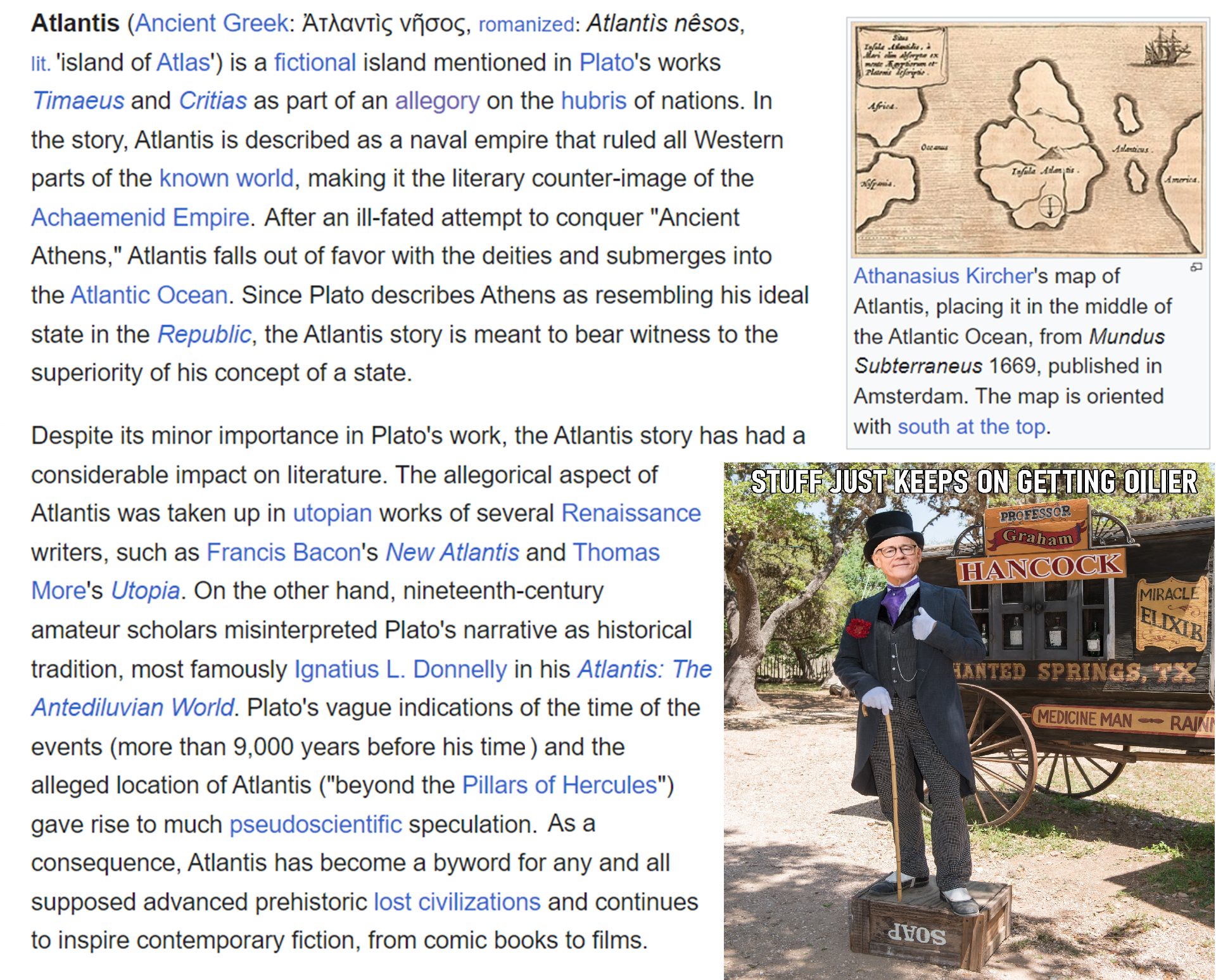

May Reason Set You Free
There are a lot of truly great things said by anarchists in history, and also some deeply vile things, too, from not supporting Women’s rights to Anti-Semitism. There are those who also reject those supporting women’s rights as well as fight anti-Semitism. This is why I push reason as my only master, not anarchist thinking, though anarchism, to me, should see all humans everywhere as equal in dignity and rights.
We—Cory and Damien—are following the greatness that can be found in anarchist thinking.
As an Anarchist Educator, Damien strives to teach the plain truth. Damien does not support violence as my method to change. Rather, I choose education that builds Enlightenment and Empowerment. I champion Dignity and Equality. We rise by helping each other. What is the price of a tear? What is the cost of a smile? How can we see clearly when others pay the cost of our indifference and fear? We should help people in need. Why is that so hard for some people? Rich Ghouls must End. Damien wants “billionaires” to stop being a thing. Tax then into equality. To Damien, there is no debate, Capitalism is unethical. Moreover, as an Anarchist Educator, Damien knows violence is not the way to inspire lasting positive change. But we are not limited to violence, we have education, one of the most lasting and powerful ways to improve the world. We empower the world by championing Truth and its supporters.
Anarchism and Education
“Various alternatives to education and their problems have been proposed by anarchists which have gone from alternative education systems and environments, self-education, advocacy of youth and children rights, and freethought activism.” ref
“Historical accounts of anarchist educational experiments to explore how their pedagogical practices, organization, and content constituted a radical alternative to mainstream forms of educational provision in different historical periods.” ref
“The Ferrer school was an early 20th century libertarian school inspired by the anarchist pedagogy of Francisco Ferrer. He was a proponent of rationalist, secular education that emphasized reason, dignity, self-reliance, and scientific observation. The Ferrer movement’s philosophy had two distinct tendencies: non-didactic freedom from dogma and the more didactic fostering of counter-hegemonic beliefs. Towards non-didactic freedom from dogma, and fulfilled the child-centered tradition.” ref

Teach Real History: all our lives depend on it.
Damien sees lies about history as crimes against humanity. And we all must help humanity by addressing “any and all” who make harmful lies about history.
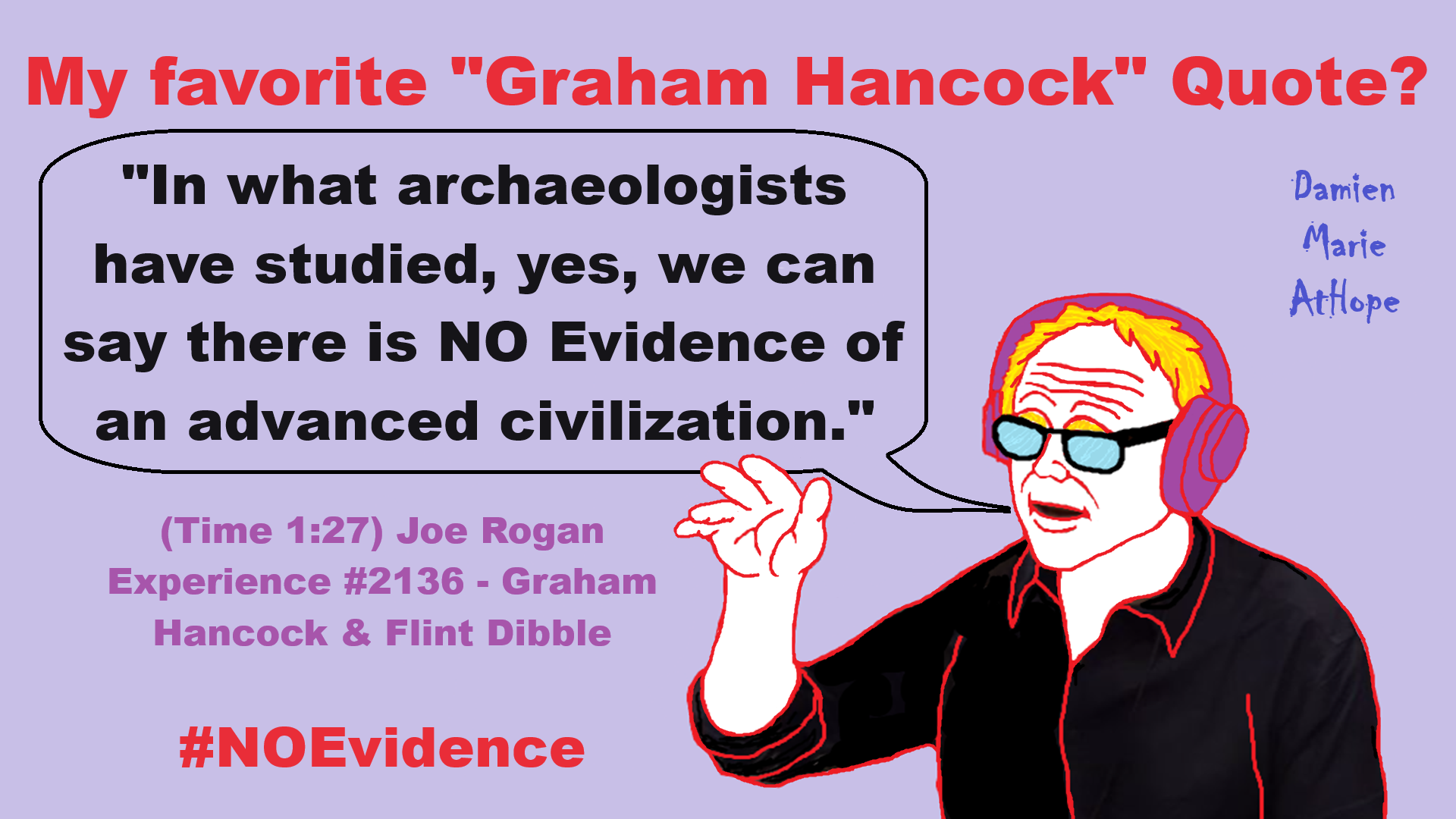
My favorite “Graham Hancock” Quote?
“In what archaeologists have studied, yes, we can say there is NO Evidence of an advanced civilization.” – (Time 1:27) Joe Rogan Experience #2136 – Graham Hancock & Flint Dibble

People don’t commonly teach religious history, even that of their own claimed religion. No, rather they teach a limited “pro their religion” history of their religion from a religious perspective favorable to the religion of choice.
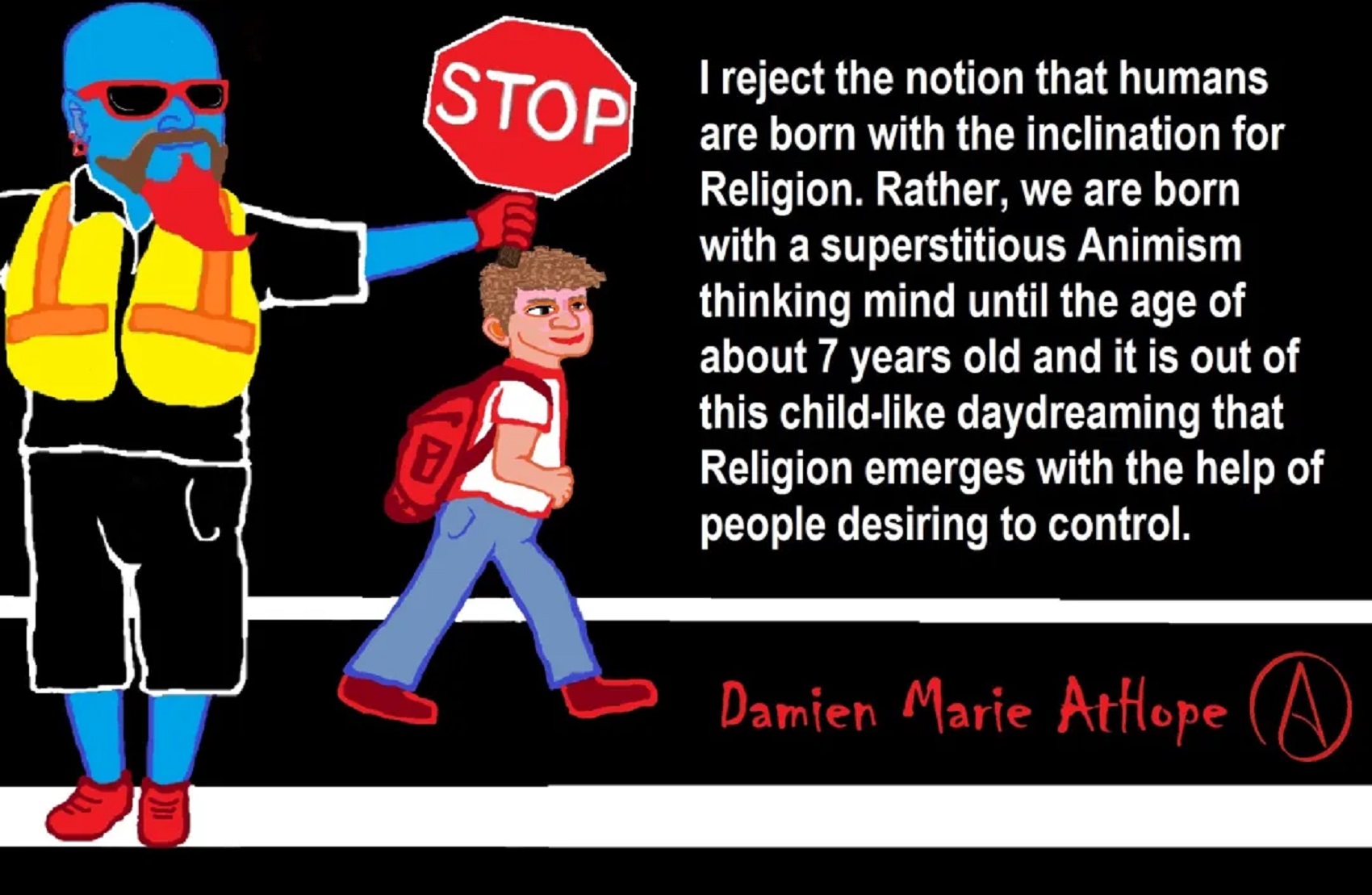
Do you truly think “Religious Belief” is only a matter of some personal choice?
Do you not see how coercive one’s world of choice is limited to the obvious hereditary belief, in most religious choices available to the child of religious parents or caregivers? Religion is more commonly like a family, culture, society, etc. available belief that limits the belief choices of the child and that is when “Religious Belief” is not only a matter of some personal choice and when it becomes hereditary faith, not because of the quality of its alleged facts or proposed truths but because everyone else important to the child believes similarly so they do as well simply mimicking authority beliefs handed to them. Because children are raised in religion rather than being presented all possible choices but rather one limited dogmatic brand of “Religious Belief” where children only have a choice of following the belief as instructed, and then personally claim the faith hereditary belief seen in the confirming to the belief they have held themselves all their lives. This is obvious in statements asked and answered by children claiming a faith they barely understand but they do understand that their family believes “this or that” faith, so they feel obligated to believe it too. While I do agree that “Religious Belief” should only be a matter of some personal choice, it rarely is… End Hereditary Religion!

Animism: Respecting the Living World by Graham Harvey
“How have human cultures engaged with and thought about animals, plants, rocks, clouds, and other elements in their natural surroundings? Do animals and other natural objects have a spirit or soul? What is their relationship to humans? In this new study, Graham Harvey explores current and past animistic beliefs and practices of Native Americans, Maori, Aboriginal Australians, and eco-pagans. He considers the varieties of animism found in these cultures as well as their shared desire to live respectfully within larger natural communities. Drawing on his extensive casework, Harvey also considers the linguistic, performative, ecological, and activist implications of these different animisms.” ref
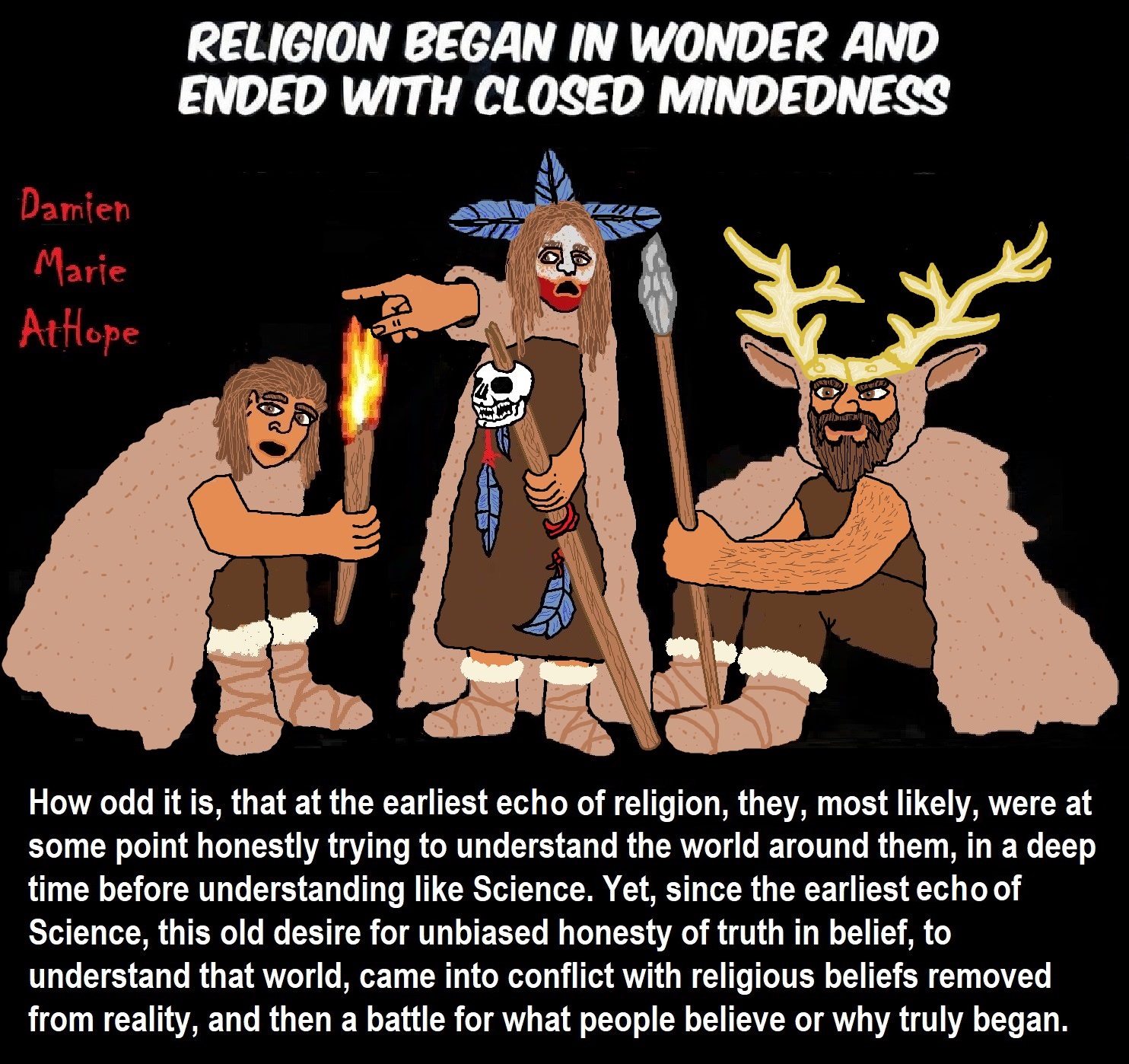
We are like believing machines we vacuum up ideas, like Velcro sticks to almost everything. We accumulate beliefs that we allow to negatively influence our lives, often without realizing it. Our willingness must be to alter skewed beliefs that impend our balance or reason, which allows us to achieve new positive thinking and accurate outcomes.
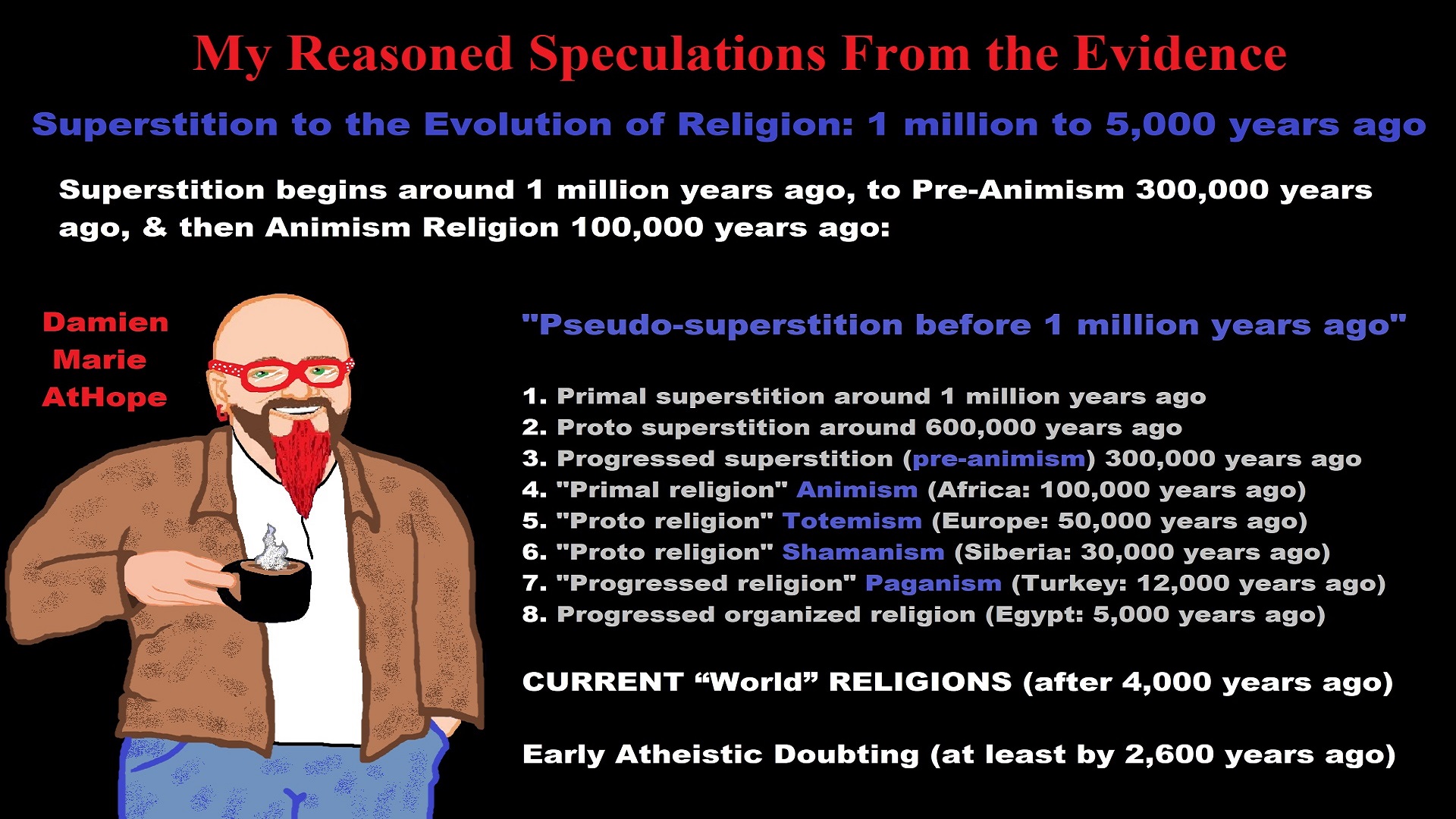
My thoughts on Religion Evolution with external links for more info:
- (Pre-Animism Africa mainly, but also Europe, and Asia at least 300,000 years ago), (Pre-Animism – Oxford Dictionaries)
- (Animism Africa around 100,000 years ago), (Animism – Britannica.com)
- (Totemism Europe around 50,000 years ago), (Totemism – Anthropology)
- (Shamanism Siberia around 30,000 years ago), (Shamanism – Britannica.com)
- (Paganism Turkey around 12,000 years ago), (Paganism – BBC Religion)
- (Progressed Organized Religion “Institutional Religion” Egypt around 5,000 years ago), (Ancient Egyptian Religion – Britannica.com)
- (CURRENT “World” RELIGIONS after 4,000 years ago) (Origin of Major Religions – Sacred Texts)
- (Early Atheistic Doubting at least by 2,600 years ago) (History of Atheism – Wikipedia)
“Religion is an Evolved Product” and Yes, Religion is Like Fear Given Wings…
Atheists talk about gods and religions for the same reason doctors talk about cancer, they are looking for a cure, or a firefighter talks about fires because they burn people and they care to stop them. We atheists too often feel a need to help the victims of mental slavery, held in the bondage that is the false beliefs of gods and the conspiracy theories of reality found in religions.
Understanding Religion Evolution:
- Pre-Animism (at least 300,000 years ago)
- Animism (Africa: 100,000 years ago)
- Totemism (Europe: 50,000 years ago)
- Shamanism (Siberia: 30,000 years ago)
- Paganism (Turkey: 12,000 years ago)
- Progressed organized religion (Egypt: 5,000 years ago), (Egypt, the First Dynasty 5,150 years ago)
- CURRENT “World” RELIGIONS (after 4,000 years ago)
- Early Atheistic Doubting (at least by 2,600 years ago)
“An Archaeological/Anthropological Understanding of Religion Evolution”
It seems ancient peoples had to survived amazing threats in a “dangerous universe (by superstition perceived as good and evil),” and human “immorality or imperfection of the soul” which was thought to affect the still living, leading to ancestor worship. This ancestor worship presumably led to the belief in supernatural beings, and then some of these were turned into the belief in gods. This feeble myth called gods were just a human conceived “made from nothing into something over and over, changing, again and again, taking on more as they evolve, all the while they are thought to be special,” but it is just supernatural animistic spirit-belief perceived as sacred.
Quick Evolution of Religion?
Pre-Animism (at least 300,000 years ago) pre-religion is a beginning that evolves into later Animism. So, Religion as we think of it, to me, all starts in a general way with Animism (Africa: 100,000 years ago) (theoretical belief in supernatural powers/spirits), then this is physically expressed in or with Totemism (Europe: 50,000 years ago) (theoretical belief in mythical relationship with powers/spirits through a totem item), which then enlists a full-time specific person to do this worship and believed interacting Shamanism (Siberia/Russia: 30,000 years ago) (theoretical belief in access and influence with spirits through ritual), and then there is the further employment of myths and gods added to all the above giving you Paganism (Turkey: 12,000 years ago) (often a lot more nature-based than most current top world religions, thus hinting to their close link to more ancient religious thinking it stems from). My hypothesis is expressed with an explanation of the building of a theatrical house (modern religions development). Progressed organized religion (Egypt: 5,000 years ago) with CURRENT “World” RELIGIONS (after 4,000 years ago).
Historically, in large city-state societies (such as Egypt or Iraq) starting around 5,000 years ago culminated to make religion something kind of new, a sociocultural-governmental-religious monarchy, where all or at least many of the people of such large city-state societies seem familiar with and committed to the existence of “religion” as the integrated life identity package of control dynamics with a fixed closed magical doctrine, but this juggernaut integrated religion identity package of Dogmatic-Propaganda certainly did not exist or if developed to an extent it was highly limited in most smaller prehistoric societies as they seem to lack most of the strong control dynamics with a fixed closed magical doctrine (magical beliefs could be at times be added or removed). Many people just want to see developed religious dynamics everywhere even if it is not. Instead, all that is found is largely fragments until the domestication of religion.
Religions, as we think of them today, are a new fad, even if they go back to around 6,000 years in the timeline of human existence, this amounts to almost nothing when seen in the long slow evolution of religion at least around 70,000 years ago with one of the oldest ritual worship. Stone Snake of South Africa: “first human worship” 70,000 years ago. This message of how religion and gods among them are clearly a man-made thing that was developed slowly as it was invented and then implemented peace by peace discrediting them all. Which seems to be a simple point some are just not grasping how devastating to any claims of truth when we can see the lie clearly in the archeological sites.
I wish people fought as hard for the actual values as they fight for the group/clan names political or otherwise they think support values. Every amount spent on war is theft to children in need of food or the homeless kept from shelter.
Here are several of my blog posts on history:
- To Find Truth You Must First Look
- (Magdalenian/Iberomaurusian) Connections to the First Paganists of the early Neolithic Near East Dating from around 17,000 to 12,000 Years Ago
- Natufians: an Ancient People at the Origins of Agriculture and Sedentary Life
- Possible Clan Leader/Special “MALE” Ancestor Totem Poles At Least 13,500 years ago?
- Jewish People with DNA at least 13,200 years old, Judaism, and the Origins of Some of its Ideas
- Baltic Reindeer Hunters: Swiderian, Lyngby, Ahrensburgian, and Krasnosillya cultures 12,020 to 11,020 years ago are evidence of powerful migratory waves during the last 13,000 years and a genetic link to Saami and the Finno-Ugric peoples.
- The Rise of Inequality: patriarchy and state hierarchy inequality
- Fertile Crescent 12,500 – 9,500 Years Ago: fertility and death cult belief system?
- 12,400 – 11,700 Years Ago – Kortik Tepe (Turkey) Pre/early-Agriculture Cultic Ritualism
- Ritualistic Bird Symbolism at Gobekli Tepe and its “Ancestor Cult”
- Male-Homosexual (female-like) / Trans-woman (female) Seated Figurine from Gobekli Tepe
- Could a 12,000-year-old Bull Geoglyph at Göbekli Tepe relate to older Bull and Female Art 25,000 years ago and Later Goddess and the Bull cults like Catal Huyuk?
- Sedentism and the Creation of goddesses around 12,000 years ago as well as male gods after 7,000 years ago.
- Alcohol, where Agriculture and Religion Become one? Such as Gobekli Tepe’s Ritualistic use of Grain as Food and Ritual Drink
- Neolithic Ritual Sites with T-Pillars and other Cultic Pillars
- Paganism: Goddesses around 12,000 years ago then Male Gods after 7,000 years ago
- First Patriarchy: Split of Women’s Status around 12,000 years ago & First Hierarchy: fall of Women’s Status around 5,000 years ago.
- Natufians: an Ancient People at the Origins of Agriculture and Sedentary Life
- J DNA and the Spread of Agricultural Religion (paganism)
- Paganism: an approximately 12,000-year-old belief system
- Paganism 12,000 years old: related to “Anarchism and Socialism” (Pre-Capitalism)
- Shaman burial in Israel 12,000 years ago and the Shamanism Phenomena
- Need to Mythicized: gods and goddesses
- 12,000 – 7,000 Years Ago – Paleo-Indian Culture (The Americas)
- 12,000 – 2,000 Years Ago – Indigenous-Scandinavians (Nordic)
- Norse did not wear helmets with horns?
- Pre-Pottery Neolithic Skull Cult around 11,500 to 8,400 Years Ago?
- 10,400 – 10,100 Years Ago, in Turkey the Nevail Cori Religious Settlement
- 9,000-6,500 Years Old Submerged Pre-Pottery/Pottery Neolithic Ritual Settlements off Israel’s Coast
- Catal Huyuk “first religious designed city” around 9,500 to 7,700 years ago (Turkey)
- Cultic Hunting at Catal Huyuk “first religious designed city”
- Special Items and Art as well as Special Elite Burials at Catal Huyuk
- New Rituals and Violence with the appearance of Pottery and People?
- Haplogroup N and its related Uralic Languages and Cultures
- Ainu people, Sámi people, Native Americans, the Ancient North Eurasians, and Paganistic-Shamanism with Totemism
- Ideas, Technology and People from Turkey, Europe, to China and Back again 9,000 to 5,000 years ago?
- First Pottery of Europe and the Related Cultures
- 9,000 years old Neolithic Artifacts Judean Desert and Hills Israel
- 9,000-7,000 years-old Sex and Death Rituals: Cult Sites in Israel, Jordan, and the Sinai
- 9,000-8500 year old Horned Female shaman Bad Dürrenberg Germany
- Neolithic Jewelry and the Spread of Farming in Europe Emerging out of West Turkey
- 8,600-year-old Tortoise Shells in Neolithic graves in central China have Early Writing and Shamanism
- Swing of the Mace: the rise of Elite, Forced Authority, and Inequality begin to Emerge 8,500 years ago?
- Migrations and Changing Europeans Beginning around 8,000 Years Ago
- My “Steppe-Anatolian-Kurgan hypothesis” 8,000/7,000 years ago
- Around 8,000-year-old Shared Idea of the Mistress of Animals, “Ritual” Motif
- Pre-Columbian Red-Paint (red ochre) Maritime Archaic Culture 8,000-3,000 years ago
- 7,522-6,522 years ago Linear Pottery culture which I think relates to Arcane Capitalism’s origins
- Arcane Capitalism: Primitive socialism, Primitive capital, Private ownership, Means of production, Market capitalism, Class discrimination, and Petite bourgeoisie (smaller capitalists)
- 7,500-4,750 years old Ritualistic Cucuteni-Trypillian culture of Moldova, Romania, and Ukraine
- Roots of a changing early society 7,200-6,700 years ago Jordan and Israel
- Agriculture religion (Paganism) with farming reached Britain between about 7,000 to 6,500 or so years ago and seemingly expressed in things like Western Europe’s Long Barrows
- My Thoughts on Possible Migrations of “R” DNA and Proto-Indo-European?
- “Millet” Spreading from China 7,022 years ago to Europe and related Language may have Spread with it leading to Proto-Indo-European
- Proto-Indo-European (PIE), ancestor of Indo-European languages: DNA, Society, Language, and Mythology
- The Dnieper–Donets culture and Asian varieties of Millet from China to the Black Sea region of Europe by 7,022 years ago
- Kurgan 6,000 years ago/dolmens 7,000 years ago: funeral, ritual, and other?
- 7,020 to 6,020-year-old Proto-Indo-European Homeland of Urheimat or proposed home of their Language and Religion
- Ancient Megaliths: Kurgan, Ziggurat, Pyramid, Menhir, Trilithon, Dolman, Kromlech, and Kromlech of Trilithons
- The Mytheme of Ancient North Eurasian Sacred-Dog belief and similar motifs are found in Indo-European, Native American, and Siberian comparative mythology
- Elite Power Accumulation: Ancient Trade, Tokens, Writing, Wealth, Merchants, and Priest-Kings
- Sacred Mounds, Mountains, Kurgans, and Pyramids may hold deep connections?
- Between 7,000-5,000 Years ago, rise of unequal hierarchy elite, leading to a “birth of the State” or worship of power, strong new sexism, oppression of non-elites, and the fall of Women’s equal status
- Paganism 7,000-5,000 years old: related to “Anarchism and Socialism” (Capitalism) (World War 0) Elite & their slaves
- Hell and Underworld mythologies starting maybe as far back as 7,000 to 5,000 years ago with the Proto-Indo-Europeans?
- The First Expression of the Male God around 7,000 years ago?
- White (light complexion skin) Bigotry and Sexism started 7,000 years ago?
- Around 7,000-year-old Shared Idea of the Divine Bird (Tutelary and/or Trickster spirit/deity), “Ritual” Motif
- Nekhbet an Ancient Egyptian Vulture Goddess and Tutelary Deity
- 6,720 to 4,920 years old Ritualistic Hongshan Culture of Inner Mongolia with 5,000-year-old Pyramid Mounds and Temples
- First proto-king in the Balkans, Varna culture around 6,500 years ago?
- 6,500–5,800 years ago in Israel Late Chalcolithic (Copper Age) Period in the Southern Levant Seems to Express Northern Levant Migrations, Cultural and Religious Transfer
- KING OF BEASTS: Master of Animals “Ritual” Motif, around 6,000 years old or older…
- Around 6000-year-old Shared Idea of the Solid Wheel & the Spoked Wheel-Shaped Ritual Motif
- “The Ghassulian Star,” a mysterious 6,000-year-old mural from Jordan; a Proto-Star of Ishtar, Star of Inanna or Star of Venus?
- Religious/Ritual Ideas, including goddesses and gods as well as ritual mounds or pyramids from Northeastern Asia at least 6,000 years old, seemingly filtering to Iran, Iraq, the Mediterranean, Europe, Egypt, and the Americas?
- Maykop (5,720–5,020 years ago) Caucasus region Bronze Age culture-related to Copper Age farmers from the south, influenced by the Ubaid period and Leyla-Tepe culture, as well as influencing the Kura-Araxes culture
- 5-600-year-old Tomb, Mummy, and First Bearded Male Figurine in a Grave
- Kura-Araxes Cultural 5,520 to 4,470 years old DNA traces to the Canaanites, Arabs, and Jews
- Minoan/Cretan (Keftiu) Civilization and Religion around 5,520 to 3,120 years ago
- Evolution Of Science at least by 5,500 years ago
- 5,500 Years old birth of the State, the rise of Hierarchy, and the fall of Women’s status
- “Jiroft culture” 5,100 – 4,200 years ago and the History of Iran
- Stonehenge: Paganistic Burial and Astrological Ritual Complex, England (5,100-3,600 years ago)
- Around 5,000-year-old Shared Idea of the “Tree of Life” Ritual Motif
- Complex rituals for elite, seen from China to Egypt, at least by 5,000 years ago
- Around 5,000 years ago: “Birth of the State” where Religion gets Military Power and Influence
- The Center of the World “Axis Mundi” and/or “Sacred Mountains” Mythology Could Relate to the Altai Mountains, Heart of the Steppe
- Progressed organized religion starts, an approximately 5,000-year-old belief system
- China’s Civilization between 5,000-3,000 years ago, was a time of war and class struggle, violent transition from free clans to a Slave or Elite society
- Origin of Logics is Naturalistic Observation at least by around 5,000 years ago.
- Paganism 5,000 years old: progressed organized religion and the state: related to “Anarchism and Socialism” (Kings and the Rise of the State)
- Ziggurats (multi-platform temples: 4,900 years old) to Pyramids (multi-platform tombs: 4,700 years old)
- Did a 4,520–4,420-year-old Volcano In Turkey Inspire the Bible God?
- Finland’s Horned Shaman and Pre-Horned-God at least 4,500 years ago?
- 4,000-year-Old Dolmens in Israel: A Connected Dolmen Religious Phenomenon?
- Creation myths: From chaos, Ex nihilo, Earth-diver, Emergence, World egg, and World parent
- Bronze Age “Ritual” connections of the Bell Beaker culture with the Corded Ware/Single Grave culture, which were related to the Yamnaya culture and Proto-Indo-European Languages/Religions
- Low Gods (Earth/ Tutelary deity), High Gods (Sky/Supreme deity), and Moralistic Gods (Deity enforcement/divine order)
- The exchange of people, ideas, and material-culture including, to me, the new god (Sky Father) and goddess (Earth Mother) religion between the Cucuteni-Trypillians and others which is then spread far and wide
- Koryaks: Indigenous People of the Russian Far East and Big Raven myths also found in Tlingit, Haida, Tsimshian, and other Indigenous People of North America
- 42 Principles Of Maat (Egyptian Goddess of the justice) around 4,400 years ago, 2000 Years Before Ten Commandments
- “Happy Easter” Well Happy Eostre/Ishter
- 4,320-3,820 years old “Shimao” (North China) site with Totemistic-Shamanistic Paganism and a Stepped Pyramid
- 4,250 to 3,400 Year old Stonehenge from Russia: Arkaim?
- 4,100-year-old beaker with medicinal & flowering plants in a grave of a woman in Scotland
- Early European Farmer ancestry, Kelif el Boroud people with the Cardial Ware culture, and the Bell Beaker culture Paganists too, spread into North Africa, then to the Canary Islands off West Africa
- Flood Accounts: Gilgamesh epic (4,100 years ago) Noah in Genesis (2,600 years ago)
- Paganism 4,000 years old: related to “Anarchism and Socialism” (First Moralistic gods, then the Origin time of Monotheism)
- When was the beginning: TIMELINE OF CURRENT RELIGIONS, which start around 4,000 years ago.
- Early Religions Thought to Express Proto-Monotheistic Systems around 4,000 years ago
- Kultepe? An archaeological site with a 4,000 years old women’s rights document.
- Single God Religions (Monotheism) = “Man-o-theism” started around 4,000 years ago with the Great Sky Spirit/God Tiān (天)?
- Confucianism’s Tiān (Shangdi god 4,000 years old): Supernaturalism, Pantheism or Theism?
- Yes, Your Male God is Ridiculous
- Mythology, a Lunar Deity is a Goddess or God of the Moon
- Sacred Land, Hills, and Mountains: Sami Mythology (Paganistic Shamanism)
- Horse Worship/Sacrifice: mythical union of Ruling Elite/Kingship and the Horse
- The Amorite/Amurru people’s God Amurru “Lord of the Steppe”, relates to the Origins of the Bible God?
- Bronze Age Exotic Trade Routes Spread Quite Far as well as Spread Religious Ideas with Them
- Sami and the Northern Indigenous Peoples Landscape, Language, and its Connection to Religion
- Prototype of Ancient Analemmatic Sundials around 3,900-3,150 years ago and a Possible Solar Connection to gods?
- Judaism is around 3,450 or 3,250 years old. (“Paleo-Hebrew” 3,000 years ago and Torah 2,500 years ago)
- The Weakening of Ancient Trade and the Strengthening of Religions around 3000 years ago?
- Are you aware that there are religions that worship women gods, explain now religion tears women down?
- Animistic, Totemistic, and Paganistic Superstition Origins of bible god and the bible’s Religion.
- Myths and Folklore: “Trickster gods and goddesses”
- Jews, Judaism, and the Origins of Some of its Ideas
- An Old Branch of Religion Still Giving Fruit: Sacred Trees
- Dating the BIBLE: naming names and telling times (written less than 3,000 years ago, provable to 2,200 years ago)
- Did a Volcano Inspire the bible god?
- Dené–Yeniseian language, Old Copper Complex, and Pre-Columbian Mound Builders?
- No “dinosaurs and humans didn’t exist together just because some think they are in the bible itself”
- Sacred Shit and Sacred Animals?
- Everyone Killed in the Bible Flood? “Nephilim” (giants)?
- Hey, Damien dude, I have a question for you regarding “the bible” Exodus.
- Archaeology Disproves the Bible
- Bible Battle, Just More, Bible Babble
- The Jericho Conquest lie?
- Canaanites and Israelites?
- Accurate Account on how did Christianity Began?
- Let’s talk about Christianity.
- So the 10 commandments isn’t anything to go by either right?
- Misinformed christian
- Debunking Jesus?
- Paulism vs Jesus
- Ok, you seem confused so let’s talk about Buddhism.
- Unacknowledged Buddhism: Gods, Savior, Demons, Rebirth, Heavens, Hells, and Terrorism
- His Foolishness The Dalai Lama
- Yin and Yang is sexist with an ORIGIN around 2,300 years ago?
- I Believe Archaeology, not Myths & Why Not, as the Religious Myths Already Violate Reason!
- Archaeological, Scientific, & Philosophic evidence shows the god myth is man-made nonsense.
- Aquatic Ape Theory/Hypothesis? As Always, Just Pseudoscience.
- Ancient Aliens Conspiracy Theorists are Pseudohistorians
- The Pseudohistoric and Pseudoscientific claims about “Bakoni Ruins” of South Africa
- Why do people think Religion is much more than supernaturalism and superstitionism?
- Religion is an Evolved Product
- Was the Value of Ancient Women Different?
- 1000 to 1100 CE, human sacrifice Cahokia Mounds a pre-Columbian Native American site
- Feminist atheists as far back as the 1800s?
- Promoting Religion as Real is Mentally Harmful to a Flourishing Humanity
- Screw All Religions and Their Toxic lies, they are all fraud
- Forget Religions’ Unfounded Myths, I Have Substantiated “Archaeology Facts.”
- Religion Dispersal throughout the World
- I Hate Religion Just as I Hate all Pseudoscience
- Exposing Scientology, Eckankar, Wicca and Other Nonsense?
- Main deity or religious belief systems
- Quit Trying to Invent Your God From the Scraps of Science.
- Archaeological, Scientific, & Philosophic evidence shows the god myth is man-made nonsense.
- Ancient Alien Conspiracy Theorists: Misunderstanding, Rhetoric, Misinformation, Fabrications, and Lies
- Misinformation, Distortion, and Pseudoscience in Talking with a Christian Creationist
- Judging the Lack of Goodness in Gods, Even the Norse God Odin
- Challenging the Belief in God-like Aliens and Gods in General
- A Challenge to Christian use of Torture Devices?
- Yes, Hinduism is a Religion
- Trump is One of the Most Reactionary Forces of Far-right Christian Extremism
- Was the Bull Head a Symbol of God? Yes!
- Primate Death Rituals
- Christian – “God and Christianity are objectively true”
- Australopithecus afarensis Death Ritual?
- You Claim Global Warming is a Hoax?
- Doubter of Science and Defamer of Atheists?
- I think that sounds like the Bible?
- History of the Antifa (“anti-fascist”) Movements
- Indianapolis Anti-Blasphemy Laws #Free Soheil Rally
- Damien, you repeat the golden rule in so many forms then you say religion is dogmatic?
- Science is a Trustable Methodology whereas Faith is not Trustable at all!
- Was I ever a believer, before I was an atheist?
- Atheists rise in reason
- Mistrust of science?
- Open to Talking About the Definition of ‘God’? But first, we address Faith.
- ‘United Monarchy’ full of splendor and power – Saul, David, and Solomon? Most likely not.
- Is there EXODUS ARCHAEOLOGY? The short answer is “no.”
- Lacking Proof of Bigfoots, Unicorns, and Gods is Just a Lack of Research?
- Religion and Politics: Faith Beliefs vs. Rational Thinking
- Hammer of Truth that lying pig RELIGION: challenged by an archaeologist
- “The Hammer of Truth” -ontology question- What do You Mean by That?
- Navigation of a bad argument: Ad Hominem vs. Attack
- Why is it Often Claimed that Gods have a Gender?
- Why are basically all monotheistic religions ones that have a male god?
- Shifting through the Claims in support of Faith
- Dear Mr. AtHope, The 20th Century is an Indictment of Secularism and a Failed Atheist Century
- An Understanding of the Worldwide Statistics and Dynamics of Terrorist Incidents and Suicide Attacks
- Intoxication and Evolution? Addressing and Assessing the “Stoned Ape” or “Drunken Monkey” Theories as Catalysts in Human Evolution
- Sacred Menstrual cloth? Inanna’s knot, Isis knot, and maybe Ma’at’s feather?
- Damien, why don’t the Hebrews accept the bible stories?
- Dealing with a Troll and Arguing Over Word Meaning
- Knowledge without Belief? Justified beliefs or disbeliefs worthy of Knowledge?
- Afrocentrism and African Religions
- Crecganford @crecganford offers history & stories of the people, places, gods, & culture
- Empiricism-Denier?
I am not an academic. I am a revolutionary that teaches in public, in places like social media, and in the streets. I am not a leader by some title given but from my commanding leadership style of simply to start teaching everywhere to everyone, all manner of positive education.
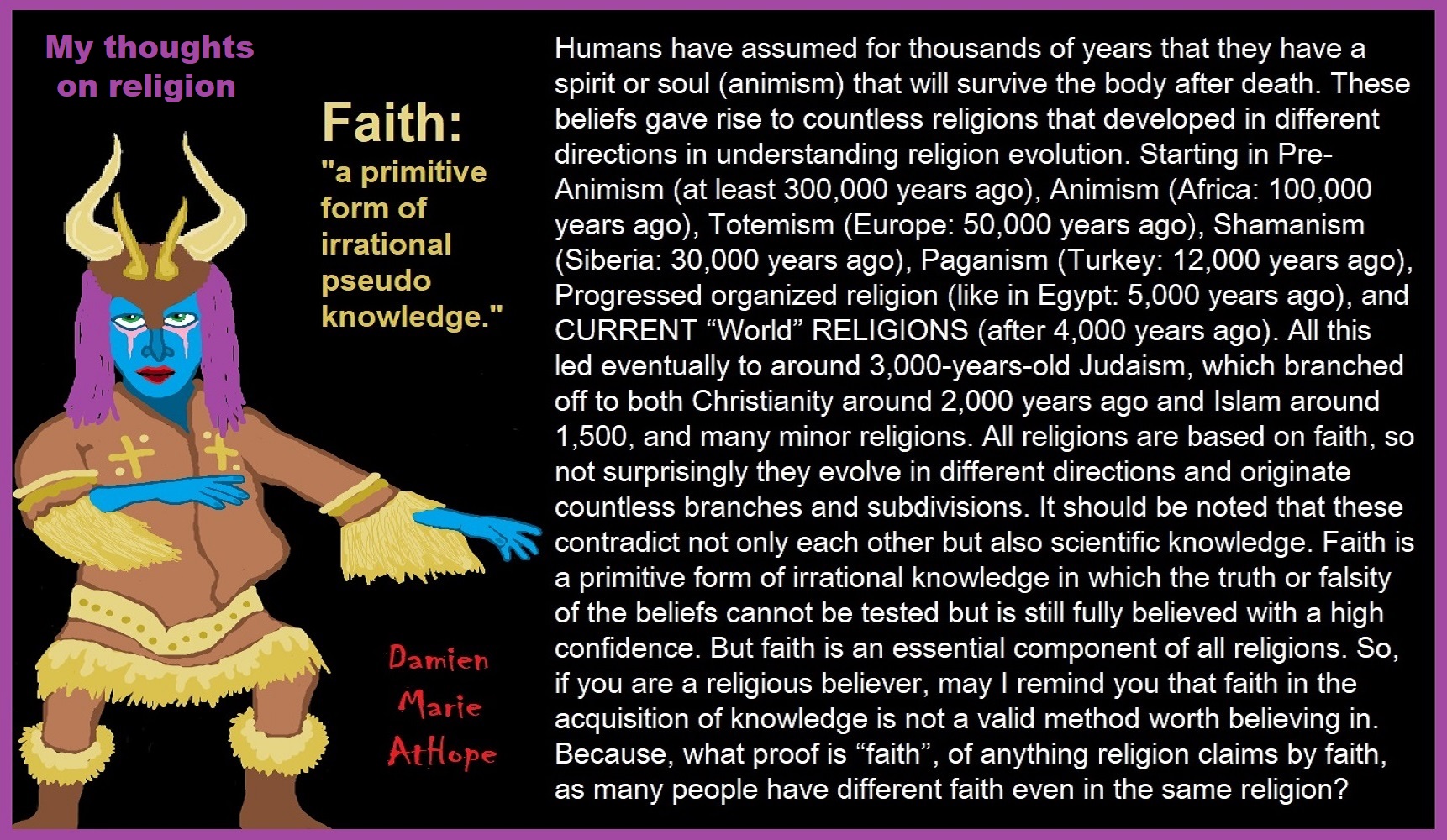
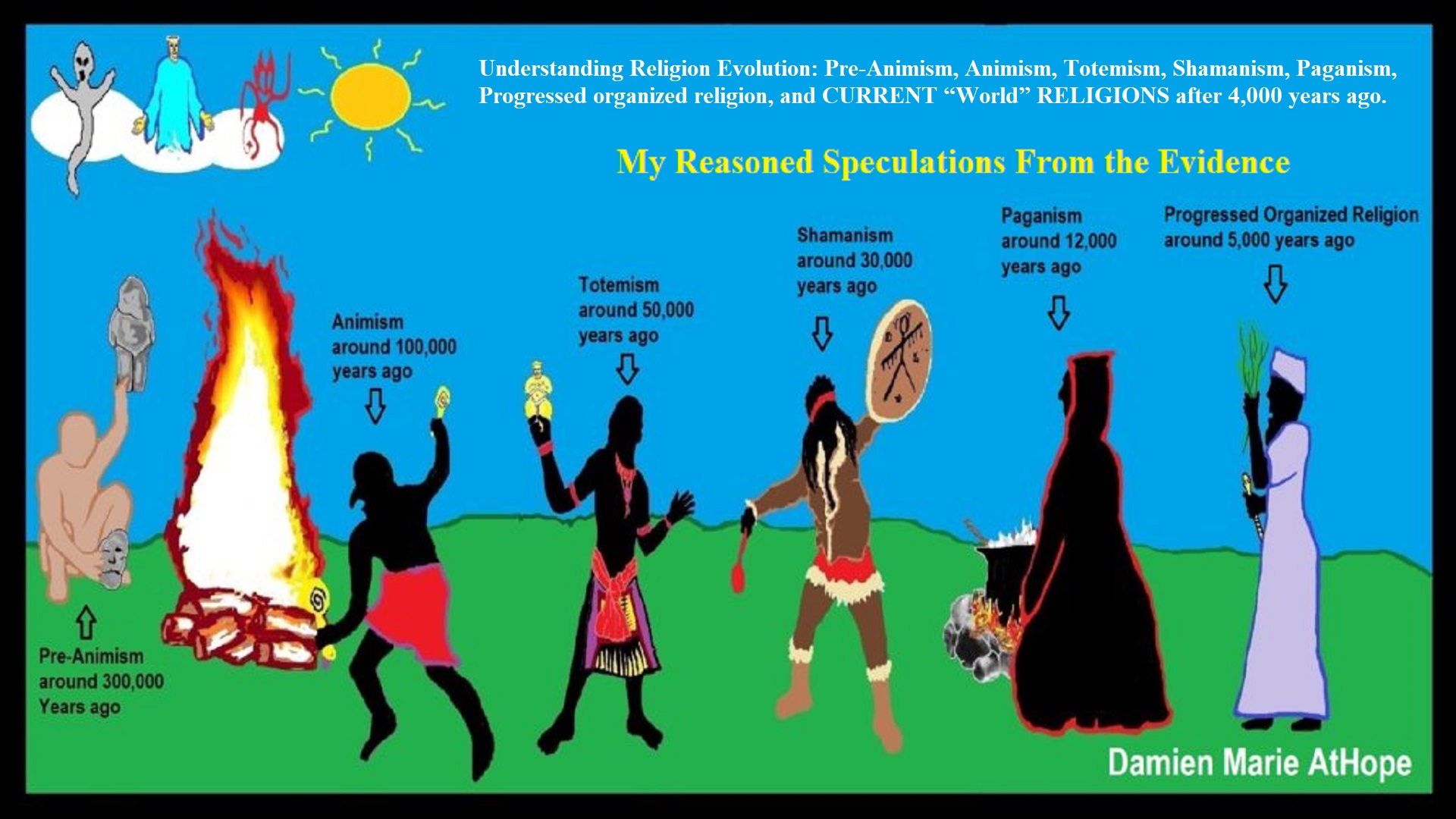

To me, Animism starts in Southern Africa, then to West Europe, and becomes Totemism. Another split goes near the Russia and Siberia border becoming Shamanism, which heads into Central Europe meeting up with Totemism, which also had moved there, mixing the two which then heads to Lake Baikal in Siberia. From there this Shamanism-Totemism heads to Turkey where it becomes Paganism.
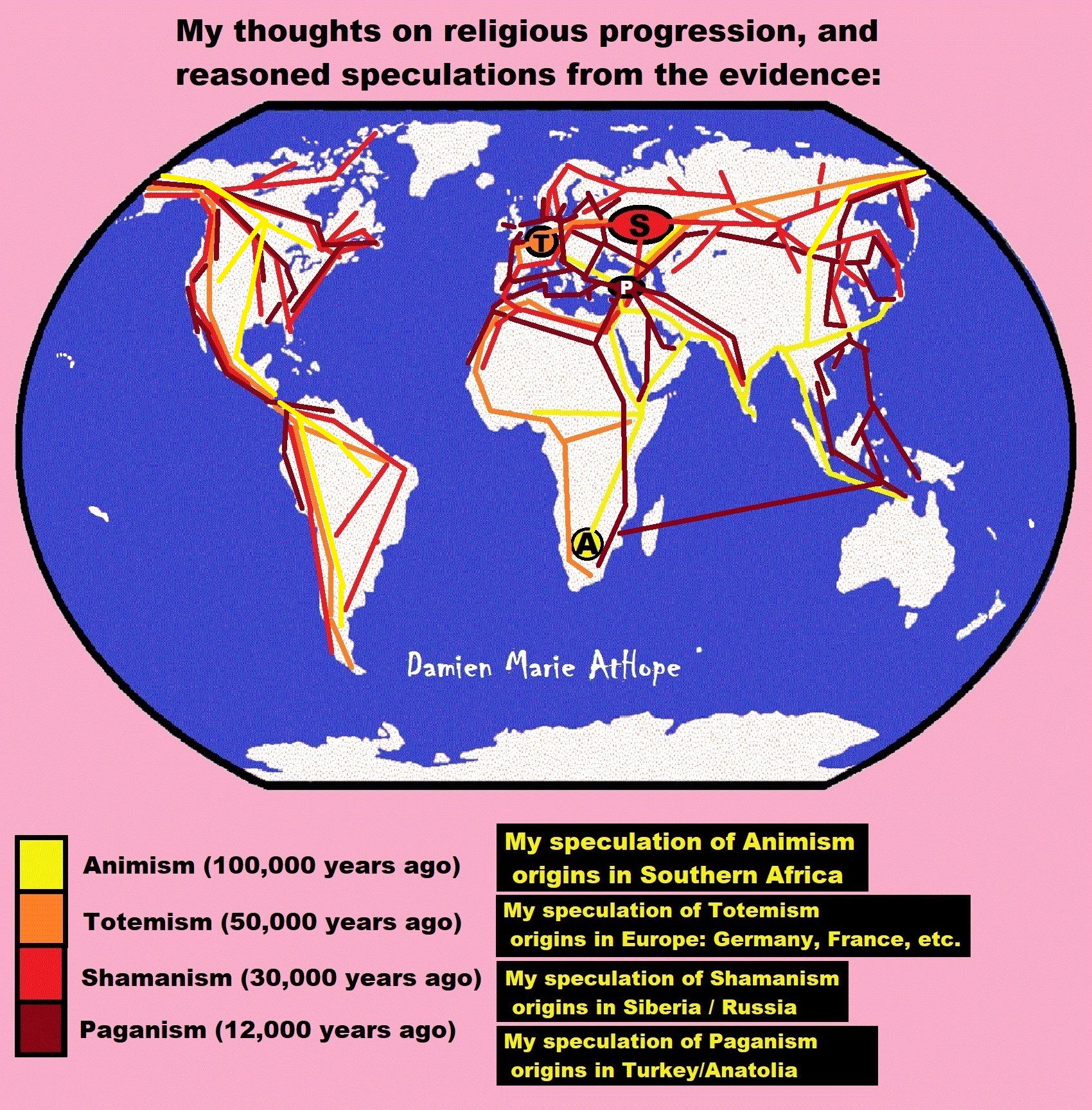
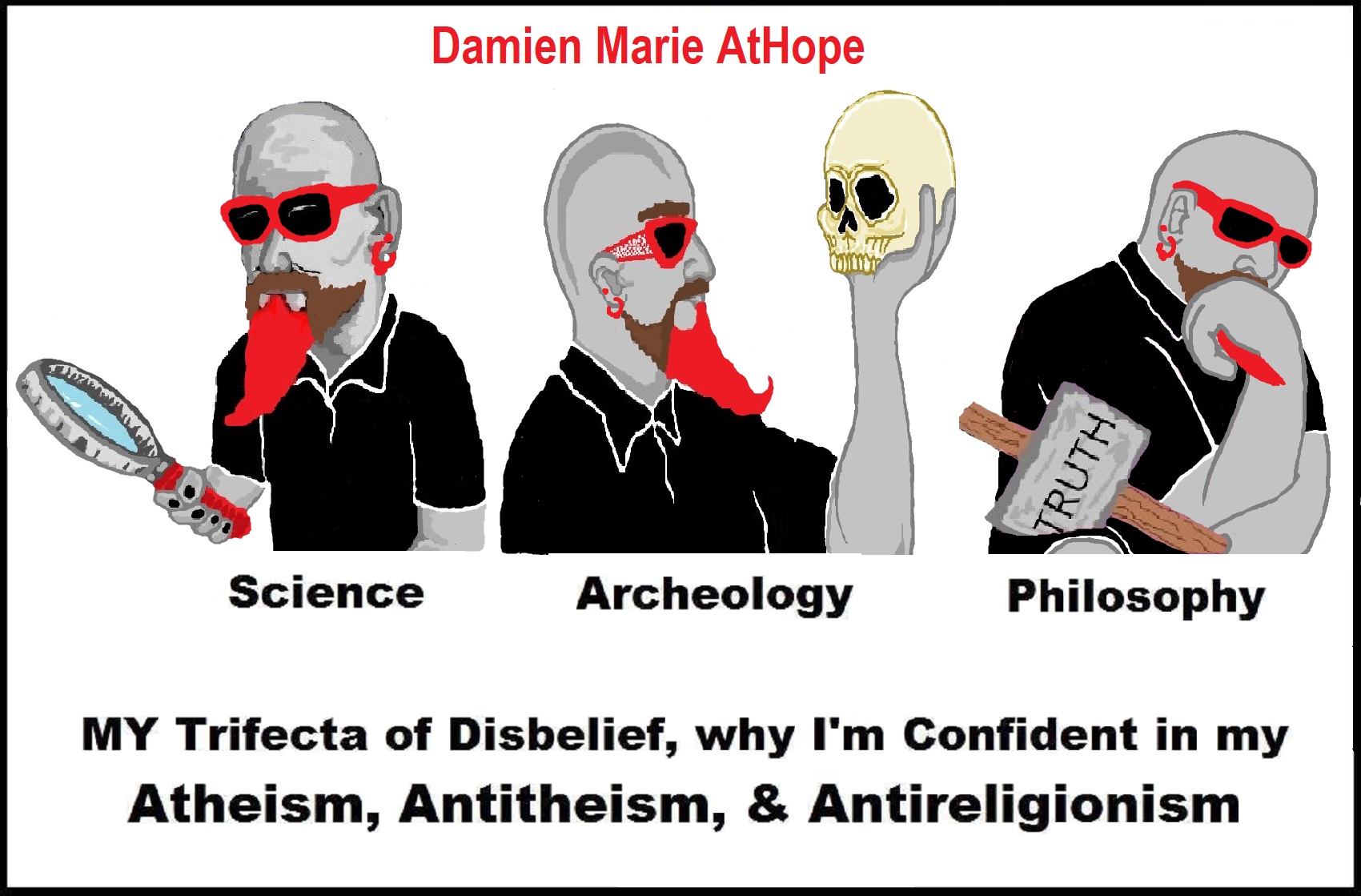
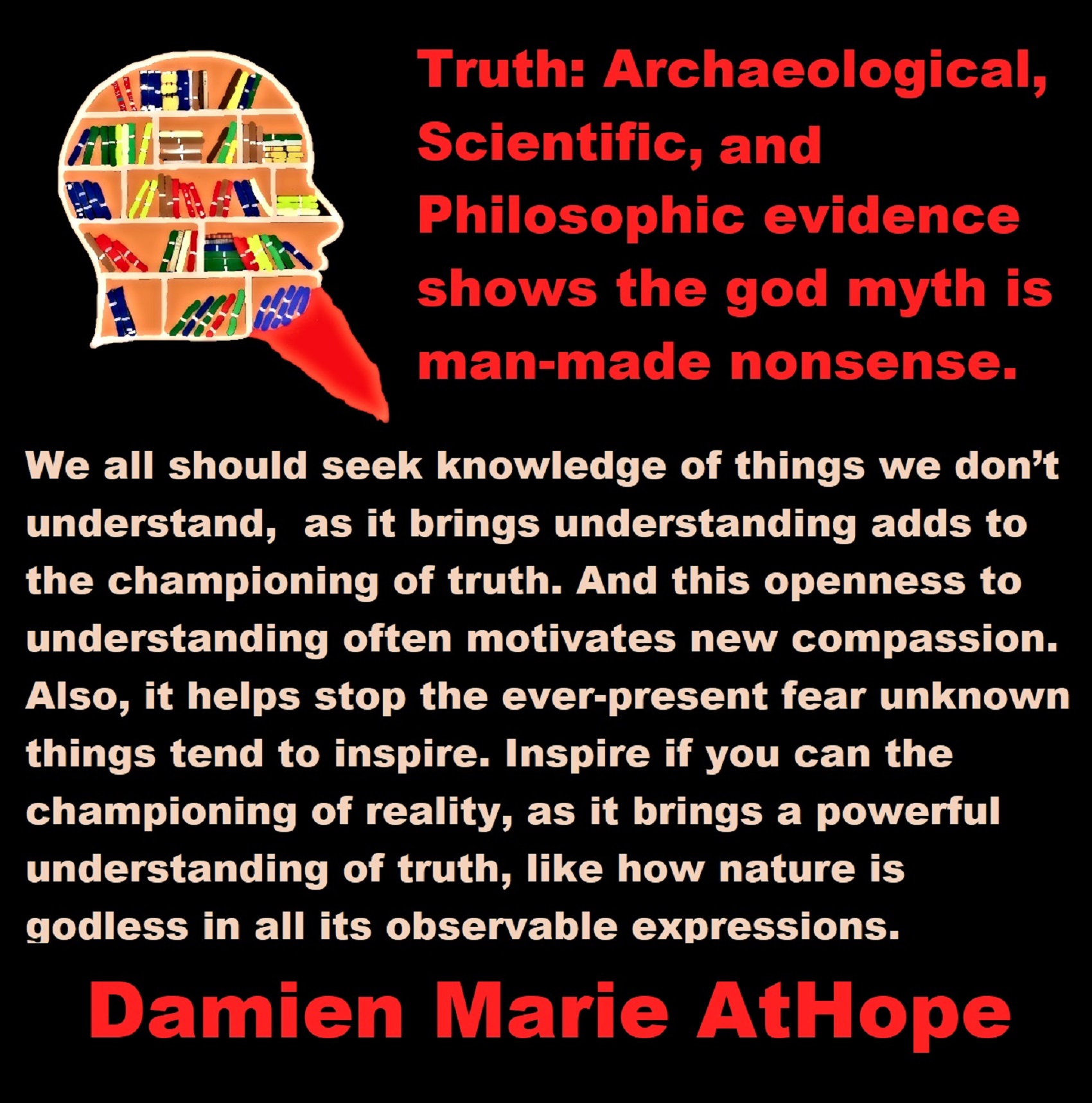
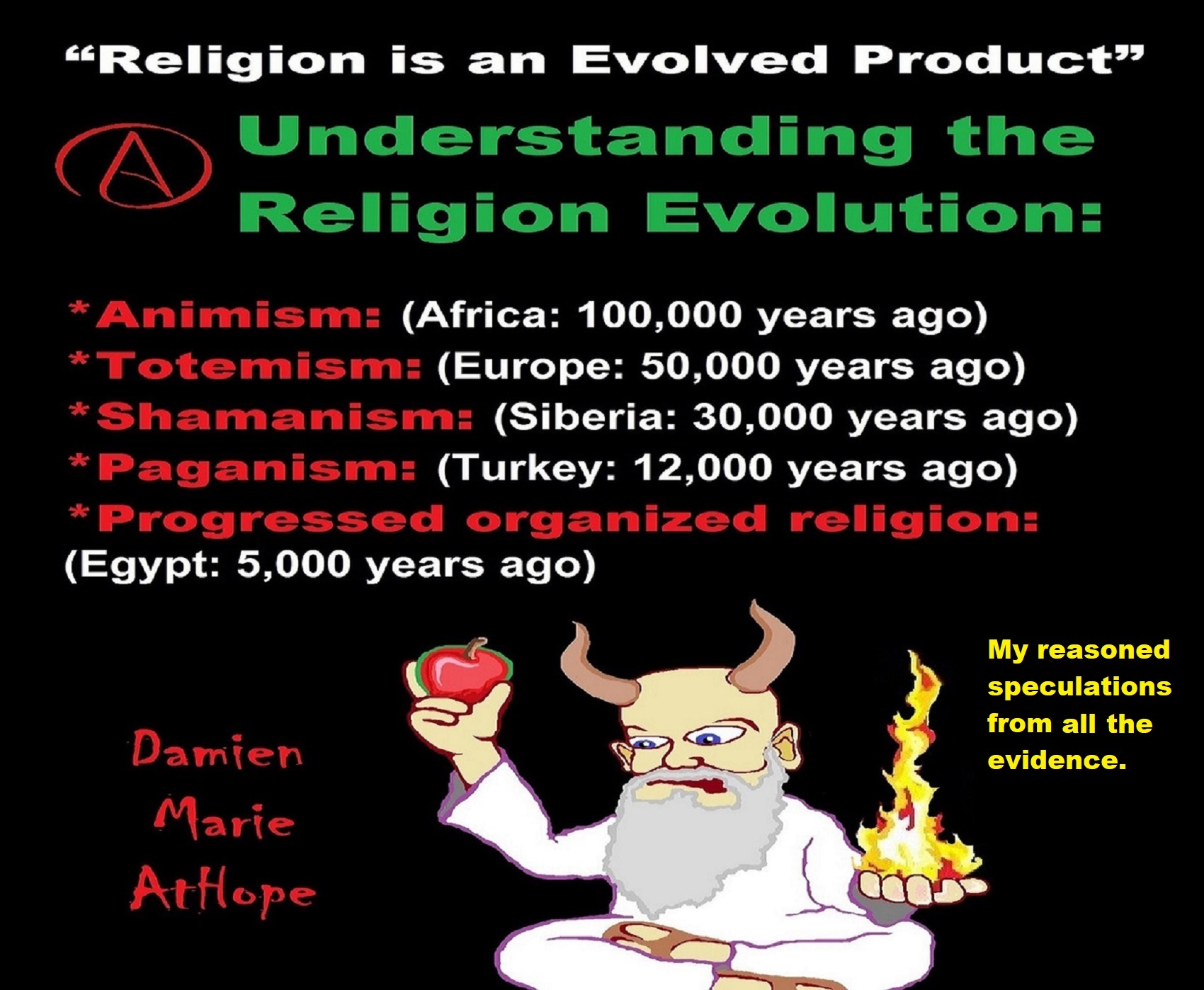
Not all “Religions” or “Religious Persuasions” have a god(s) but
All can be said to believe in some imaginary beings or imaginary things like spirits, afterlives, etc.
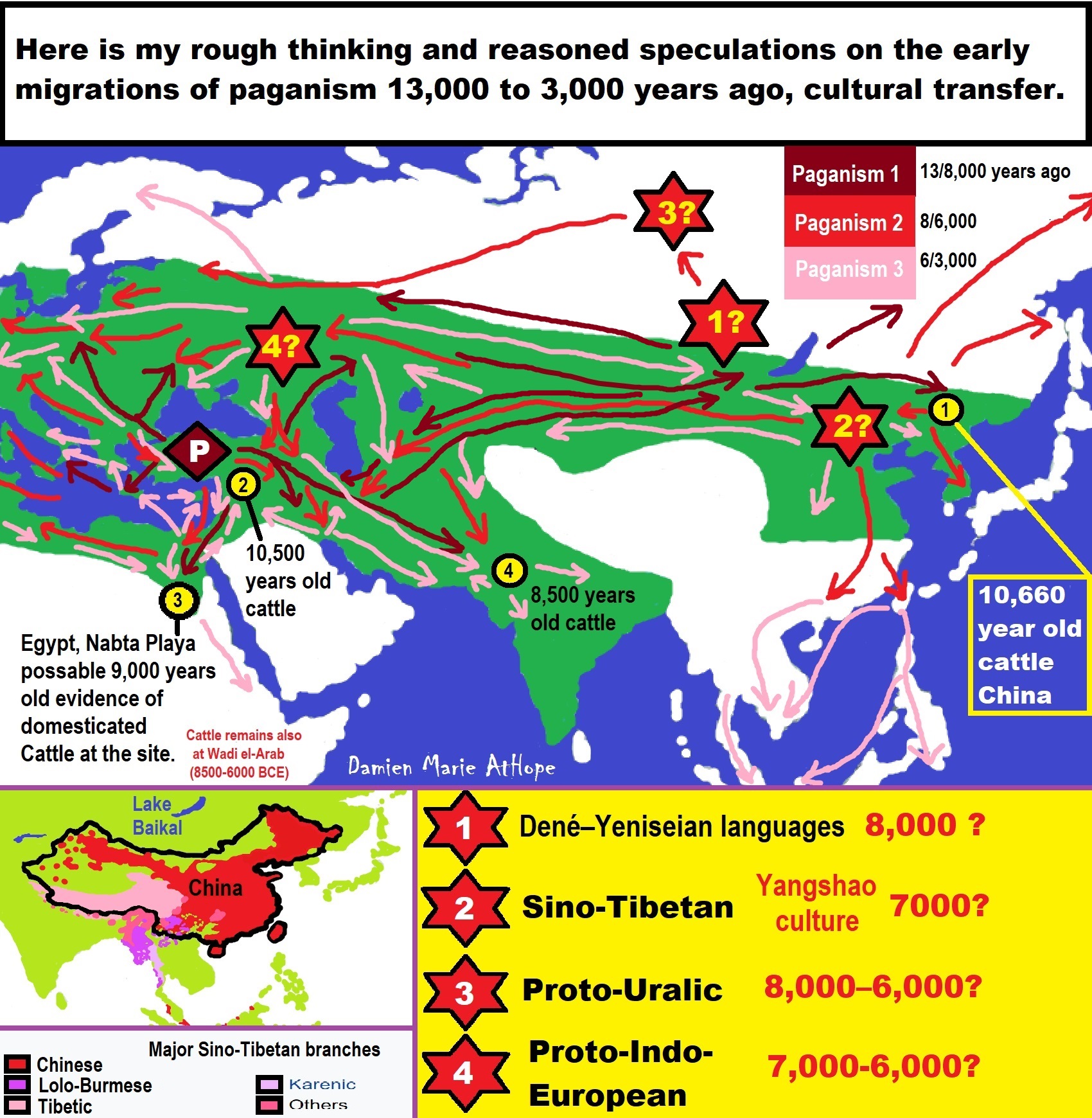
Paganism 12,000-4,000 years old
12,000-7,000 years old: related to (Pre-Capitalism)
7,000-5,000 years old: related to (Capitalism) (World War 0) Elite and their slaves!
5,000 years old: related to (Kings and the Rise of the State)
4,000 years old: related to (First Moralistic gods, then the Origin time of Monotheism)
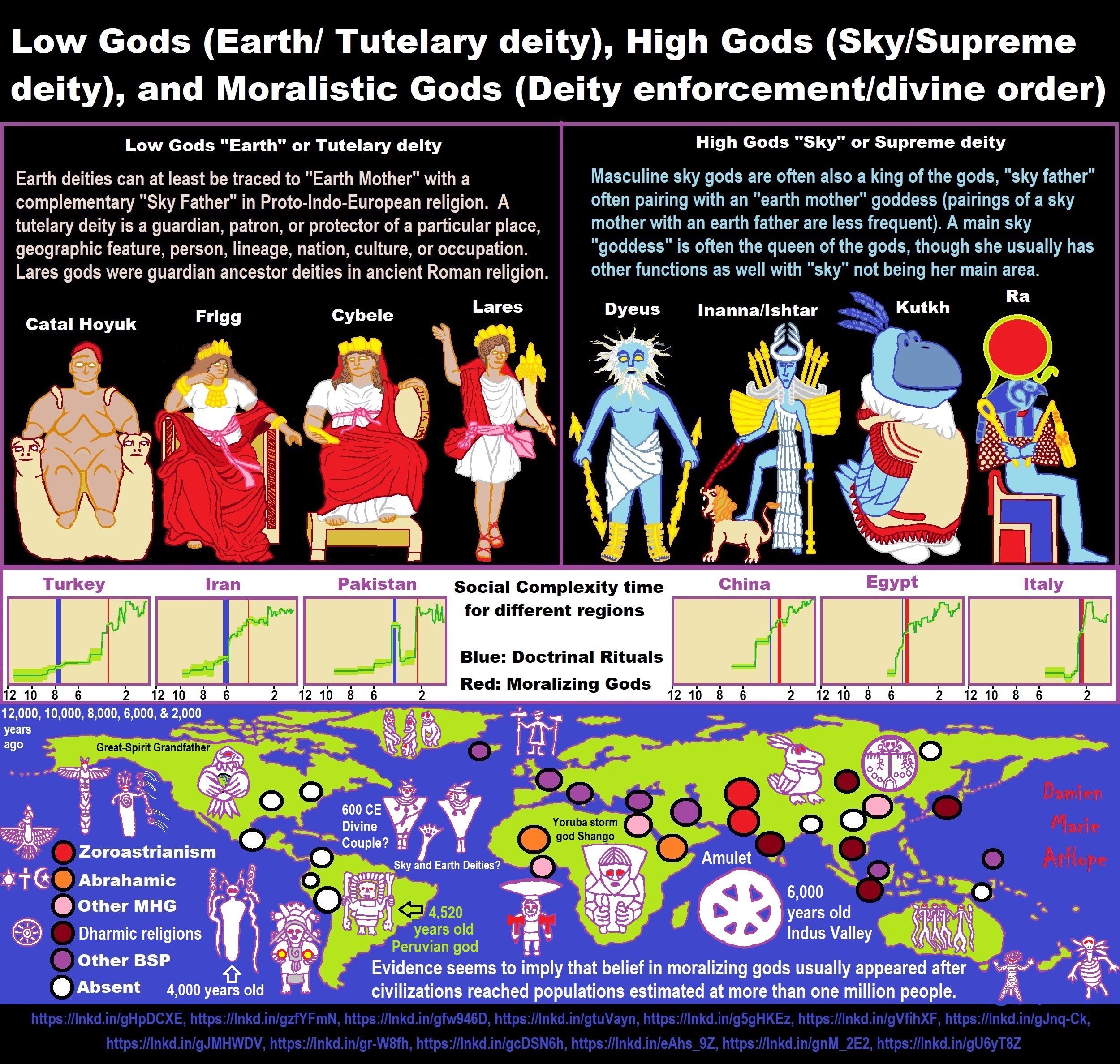
ref, ref, ref, ref, ref, ref, ref, ref, ref, ref, ref, ref, ref, ref, ref, ref, ref, ref, ref, ref, ref
Low Gods “Earth” or Tutelary deity and High Gods “Sky” or Supreme deity
“An Earth goddess is a deification of the Earth. Earth goddesses are often associated with the “chthonic” deities of the underworld. Ki and Ninhursag are Mesopotamian earth goddesses. In Greek mythology, the Earth is personified as Gaia, corresponding to Roman Terra, Indic Prithvi/Bhūmi, etc. traced to an “Earth Mother” complementary to the “Sky Father” in Proto-Indo-European religion. Egyptian mythology exceptionally has a sky goddess and an Earth god.” ref
“A mother goddess is a goddess who represents or is a personification of nature, motherhood, fertility, creation, destruction or who embodies the bounty of the Earth. When equated with the Earth or the natural world, such goddesses are sometimes referred to as Mother Earth or as the Earth Mother. In some religious traditions or movements, Heavenly Mother (also referred to as Mother in Heaven or Sky Mother) is the wife or feminine counterpart of the Sky father or God the Father.” ref
“Any masculine sky god is often also king of the gods, taking the position of patriarch within a pantheon. Such king gods are collectively categorized as “sky father” deities, with a polarity between sky and earth often being expressed by pairing a “sky father” god with an “earth mother” goddess (pairings of a sky mother with an earth father are less frequent). A main sky goddess is often the queen of the gods and may be an air/sky goddess in her own right, though she usually has other functions as well with “sky” not being her main. In antiquity, several sky goddesses in ancient Egypt, Mesopotamia, and the Near East were called Queen of Heaven. Neopagans often apply it with impunity to sky goddesses from other regions who were never associated with the term historically. The sky often has important religious significance. Many religions, both polytheistic and monotheistic, have deities associated with the sky.” ref
“In comparative mythology, sky father is a term for a recurring concept in polytheistic religions of a sky god who is addressed as a “father”, often the father of a pantheon and is often either a reigning or former King of the Gods. The concept of “sky father” may also be taken to include Sun gods with similar characteristics, such as Ra. The concept is complementary to an “earth mother“. “Sky Father” is a direct translation of the Vedic Dyaus Pita, etymologically descended from the same Proto-Indo-European deity name as the Greek Zeûs Pater and Roman Jupiter and Germanic Týr, Tir or Tiwaz, all of which are reflexes of the same Proto-Indo-European deity’s name, *Dyēus Ph₂tḗr. While there are numerous parallels adduced from outside of Indo-European mythology, there are exceptions (e.g. In Egyptian mythology, Nut is the sky mother and Geb is the earth father).” ref
Tutelary deity
“A tutelary (also tutelar) is a deity or spirit who is a guardian, patron, or protector of a particular place, geographic feature, person, lineage, nation, culture, or occupation. The etymology of “tutelary” expresses the concept of safety and thus of guardianship. In late Greek and Roman religion, one type of tutelary deity, the genius, functions as the personal deity or daimon of an individual from birth to death. Another form of personal tutelary spirit is the familiar spirit of European folklore.” ref
“A tutelary (also tutelar) in Korean shamanism, jangseung and sotdae were placed at the edge of villages to frighten off demons. They were also worshiped as deities. Seonangshin is the patron deity of the village in Korean tradition and was believed to embody the Seonangdang. In Philippine animism, Diwata or Lambana are deities or spirits that inhabit sacred places like mountains and mounds and serve as guardians. Such as: Maria Makiling is the deity who guards Mt. Makiling and Maria Cacao and Maria Sinukuan. In Shinto, the spirits, or kami, which give life to human bodies come from nature and return to it after death. Ancestors are therefore themselves tutelaries to be worshiped. And similarly, Native American beliefs such as Tonás, tutelary animal spirit among the Zapotec and Totems, familial or clan spirits among the Ojibwe, can be animals.” ref
“A tutelary (also tutelar) in Austronesian beliefs such as: Atua (gods and spirits of the Polynesian peoples such as the Māori or the Hawaiians), Hanitu (Bunun of Taiwan‘s term for spirit), Hyang (Kawi, Sundanese, Javanese, and Balinese Supreme Being, in ancient Java and Bali mythology and this spiritual entity, can be either divine or ancestral), Kaitiaki (New Zealand Māori term used for the concept of guardianship, for the sky, the sea, and the land), Kawas (mythology) (divided into 6 groups: gods, ancestors, souls of the living, spirits of living things, spirits of lifeless objects, and ghosts), Tiki (Māori mythology, Tiki is the first man created by either Tūmatauenga or Tāne and represents deified ancestors found in most Polynesian cultures). ” ref, ref, ref, ref, ref, ref, ref
Mesopotamian Tutelary Deities can be seen as ones related to City-States
“Historical city-states included Sumerian cities such as Uruk and Ur; Ancient Egyptian city-states, such as Thebes and Memphis; the Phoenician cities (such as Tyre and Sidon); the five Philistine city-states; the Berber city-states of the Garamantes; the city-states of ancient Greece (the poleis such as Athens, Sparta, Thebes, and Corinth); the Roman Republic (which grew from a city-state into a vast empire); the Italian city-states from the Middle Ages to the early modern period, such as Florence, Siena, Ferrara, Milan (which as they grew in power began to dominate neighboring cities) and Genoa and Venice, which became powerful thalassocracies; the Mayan and other cultures of pre-Columbian Mesoamerica (including cities such as Chichen Itza, Tikal, Copán and Monte Albán); the central Asian cities along the Silk Road; the city-states of the Swahili coast; Ragusa; states of the medieval Russian lands such as Novgorod and Pskov; and many others.” ref
“The Uruk period (ca. 4000 to 3100 BCE; also known as Protoliterate period) of Mesopotamia, named after the Sumerian city of Uruk, this period saw the emergence of urban life in Mesopotamia and the Sumerian civilization. City-States like Uruk and others had a patron tutelary City Deity along with a Priest-King.” ref
“Chinese folk religion, both past, and present, includes myriad tutelary deities. Exceptional individuals, highly cultivated sages, and prominent ancestors can be deified and honored after death. Lord Guan is the patron of military personnel and police, while Mazu is the patron of fishermen and sailors. Such as Tu Di Gong (Earth Deity) is the tutelary deity of a locality, and each individual locality has its own Earth Deity and Cheng Huang Gong (City God) is the guardian deity of an individual city, worshipped by local officials and locals since imperial times.” ref
“A tutelary (also tutelar) in Hinduism, personal tutelary deities are known as ishta-devata, while family tutelary deities are known as Kuladevata. Gramadevata are guardian deities of villages. Devas can also be seen as tutelary. Shiva is the patron of yogis and renunciants. City goddesses include: Mumbadevi (Mumbai), Sachchika (Osian); Kuladevis include: Ambika (Porwad), and Mahalakshmi. In NorthEast India Meitei mythology and religion (Sanamahism) of Manipur, there are various types of tutelary deities, among which Lam Lais are the most predominant ones. Tibetan Buddhism has Yidam as a tutelary deity. Dakini is the patron of those who seek knowledge.” ref
“A tutelary (also tutelar) The Greeks also thought deities guarded specific places: for instance, Athena was the patron goddess of the city of Athens. Socrates spoke of hearing the voice of his personal spirit or daimonion:
You have often heard me speak of an oracle or sign which comes to me … . This sign I have had ever since I was a child. The sign is a voice which comes to me and always forbids me to do something which I am going to do, but never commands me to do anything, and this is what stands in the way of my being a politician.” ref
“Tutelary deities who guard and preserve a place or a person are fundamental to ancient Roman religion. The tutelary deity of a man was his Genius, that of a woman her Juno. In the Imperial era, the Genius of the Emperor was a focus of Imperial cult. An emperor might also adopt a major deity as his personal patron or tutelary, as Augustus did Apollo. Precedents for claiming the personal protection of a deity were established in the Republican era, when for instance the Roman dictator Sulla advertised the goddess Victory as his tutelary by holding public games (ludi) in her honor.” ref
“Each town or city had one or more tutelary deities, whose protection was considered particularly vital in time of war and siege. Rome itself was protected by a goddess whose name was to be kept ritually secret on pain of death (for a supposed case, see Quintus Valerius Soranus). The Capitoline Triad of Juno, Jupiter, and Minerva were also tutelaries of Rome. The Italic towns had their own tutelary deities. Juno often had this function, as at the Latin town of Lanuvium and the Etruscan city of Veii, and was often housed in an especially grand temple on the arx (citadel) or other prominent or central location. The tutelary deity of Praeneste was Fortuna, whose oracle was renowned.” ref
“The Roman ritual of evocatio was premised on the belief that a town could be made vulnerable to military defeat if the power of its tutelary deity were diverted outside the city, perhaps by the offer of superior cult at Rome. The depiction of some goddesses such as the Magna Mater (Great Mother, or Cybele) as “tower-crowned” represents their capacity to preserve the city. A town in the provinces might adopt a deity from within the Roman religious sphere to serve as its guardian, or syncretize its own tutelary with such; for instance, a community within the civitas of the Remi in Gaul adopted Apollo as its tutelary, and at the capital of the Remi (present-day Rheims), the tutelary was Mars Camulus.” ref
Household deity (a kind of or related to a Tutelary deity)
“A household deity is a deity or spirit that protects the home, looking after the entire household or certain key members. It has been a common belief in paganism as well as in folklore across many parts of the world. Household deities fit into two types; firstly, a specific deity – typically a goddess – often referred to as a hearth goddess or domestic goddess who is associated with the home and hearth, such as the ancient Greek Hestia.” ref
“The second type of household deities are those that are not one singular deity, but a type, or species of animistic deity, who usually have lesser powers than major deities. This type was common in the religions of antiquity, such as the Lares of ancient Roman religion, the Gashin of Korean shamanism, and Cofgodas of Anglo-Saxon paganism. These survived Christianisation as fairy-like creatures existing in folklore, such as the Anglo-Scottish Brownie and Slavic Domovoy.” ref
“Household deities were usually worshipped not in temples but in the home, where they would be represented by small idols (such as the teraphim of the Bible, often translated as “household gods” in Genesis 31:19 for example), amulets, paintings, or reliefs. They could also be found on domestic objects, such as cosmetic articles in the case of Tawaret. The more prosperous houses might have a small shrine to the household god(s); the lararium served this purpose in the case of the Romans. The gods would be treated as members of the family and invited to join in meals, or be given offerings of food and drink.” ref
“In many religions, both ancient and modern, a god would preside over the home. Certain species, or types, of household deities, existed. An example of this was the Roman Lares. Many European cultures retained house spirits into the modern period. Some examples of these include:
- Brownie (Scotland and England) or Hob (England) / Kobold (Germany) / Goblin / Hobgoblin
- Domovoy (Slavic)
- Nisse (Norwegian or Danish) / Tomte (Swedish) / Tonttu (Finnish)
- Húsvættir (Norse)” ref
“Although the cosmic status of household deities was not as lofty as that of the Twelve Olympians or the Aesir, they were also jealous of their dignity and also had to be appeased with shrines and offerings, however humble. Because of their immediacy they had arguably more influence on the day-to-day affairs of men than the remote gods did. Vestiges of their worship persisted long after Christianity and other major religions extirpated nearly every trace of the major pagan pantheons. Elements of the practice can be seen even today, with Christian accretions, where statues to various saints (such as St. Francis) protect gardens and grottos. Even the gargoyles found on older churches, could be viewed as guardians partitioning a sacred space.” ref
“For centuries, Christianity fought a mop-up war against these lingering minor pagan deities, but they proved tenacious. For example, Martin Luther‘s Tischreden have numerous – quite serious – references to dealing with kobolds. Eventually, rationalism and the Industrial Revolution threatened to erase most of these minor deities, until the advent of romantic nationalism rehabilitated them and embellished them into objects of literary curiosity in the 19th century. Since the 20th century this literature has been mined for characters for role-playing games, video games, and other fantasy personae, not infrequently invested with invented traits and hierarchies somewhat different from their mythological and folkloric roots.” ref
“In contradistinction to both Herbert Spencer and Edward Burnett Tylor, who defended theories of animistic origins of ancestor worship, Émile Durkheim saw its origin in totemism. In reality, this distinction is somewhat academic, since totemism may be regarded as a particularized manifestation of animism, and something of a synthesis of the two positions was attempted by Sigmund Freud. In Freud’s Totem and Taboo, both totem and taboo are outward expressions or manifestations of the same psychological tendency, a concept which is complementary to, or which rather reconciles, the apparent conflict. Freud preferred to emphasize the psychoanalytic implications of the reification of metaphysical forces, but with particular emphasis on its familial nature. This emphasis underscores, rather than weakens, the ancestral component.” ref
“William Edward Hearn, a noted classicist, and jurist, traced the origin of domestic deities from the earliest stages as an expression of animism, a belief system thought to have existed also in the neolithic, and the forerunner of Indo-European religion. In his analysis of the Indo-European household, in Chapter II “The House Spirit”, Section 1, he states:
The belief which guided the conduct of our forefathers was … the spirit rule of dead ancestors.” ref
“In Section 2 he proceeds to elaborate:
It is thus certain that the worship of deceased ancestors is a vera causa, and not a mere hypothesis. …
In the other European nations, the Slavs, the Teutons, and the Kelts, the House Spirit appears with no less distinctness. … [T]he existence of that worship does not admit of doubt. … The House Spirits had a multitude of other names which it is needless here to enumerate, but all of which are more or less expressive of their friendly relations with man. … In [England] … [h]e is the Brownie. … In Scotland this same Brownie is well known. He is usually described as attached to particular families, with whom he has been known to reside for centuries, threshing the corn, cleaning the house, and performing similar household tasks. His favorite gratification was milk and honey.” ref
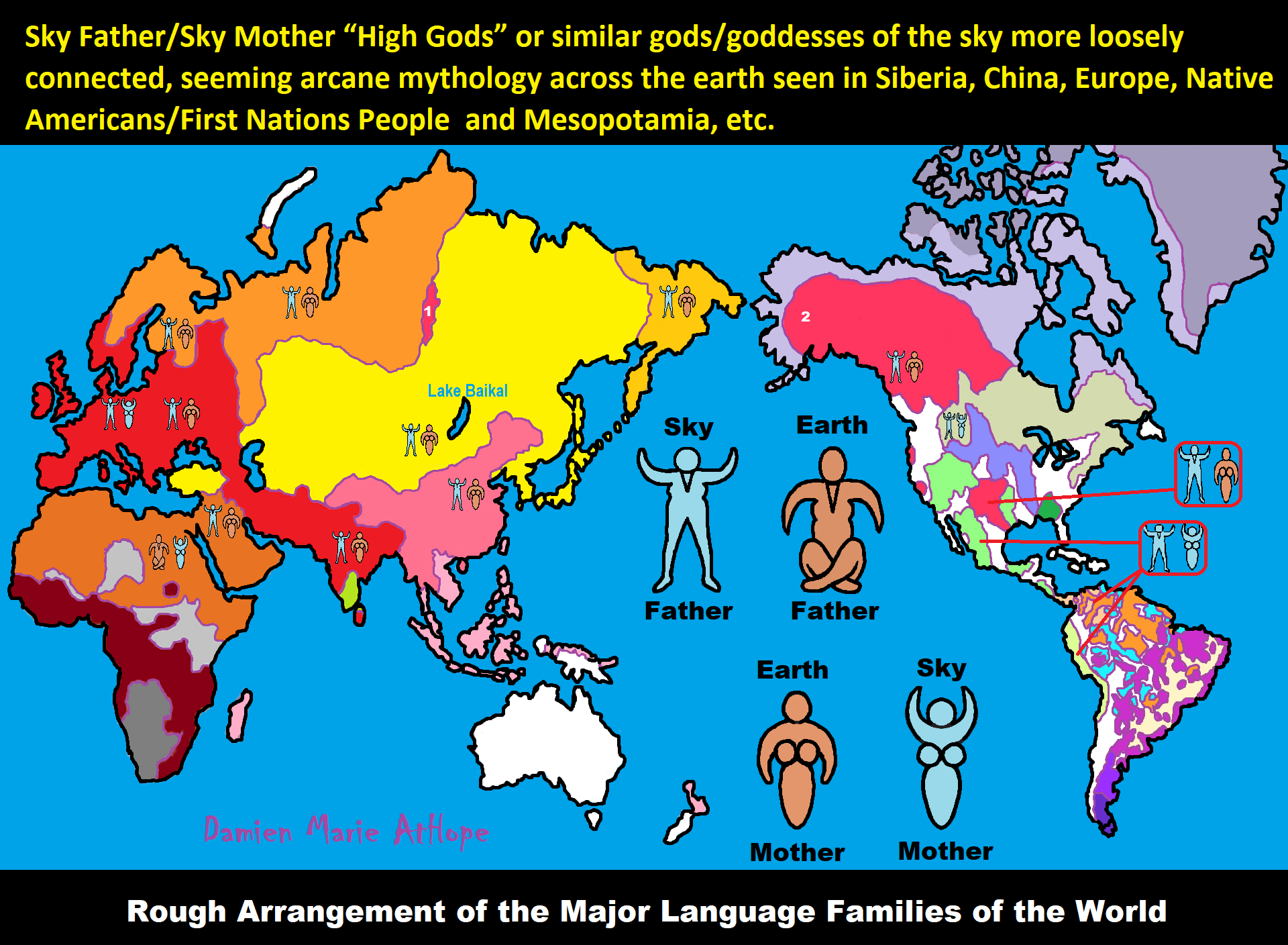
ref, ref, ref, ref, ref, ref, ref, ref, ref, ref, ref, ref, ref, ref, ref, ref, ref
“These ideas are my speculations from the evidence.”
I am still researching the “god‘s origins” all over the world. So you know, it is very complicated but I am smart and willing to look, DEEP, if necessary, which going very deep does seem to be needed here, when trying to actually understand the evolution of gods and goddesses. I am sure of a few things and less sure of others, but even in stuff I am not fully grasping I still am slowly figuring it out, to explain it to others. But as I research more I am understanding things a little better, though I am still working on understanding it all or something close and thus always figuring out more.
Sky Father/Sky God?
“Egyptian: (Nut) Sky Mother and (Geb) Earth Father” (Egypt is different but similar)
Turkic/Mongolic: (Tengri/Tenger Etseg) Sky Father and (Eje/Gazar Eej) Earth Mother *Transeurasian*
Hawaiian: (Wākea) Sky Father and (Papahānaumoku) Earth Mother *Austronesian*
New Zealand/ Māori: (Ranginui) Sky Father and (Papatūānuku) Earth Mother *Austronesian*
Proto-Indo-European: (Dyḗus/Dyḗus ph₂tḗr) Sky Father and (Dʰéǵʰōm/Pleth₂wih₁) Earth Mother
Indo-Aryan: (Dyaus Pita) Sky Father and (Prithvi Mata) Earth Mother *Indo-European*
Italic: (Jupiter) Sky Father and (Juno) Sky Mother *Indo-European*
Etruscan: (Tinia) Sky Father and (Uni) Sky Mother *Tyrsenian/Italy Pre–Indo-European*
Hellenic/Greek: (Zeus) Sky Father and (Hera) Sky Mother who started as an “Earth Goddess” *Indo-European*
Nordic: (Dagr) Sky Father and (Nótt) Sky Mother *Indo-European*
Slavic: (Perun) Sky Father and (Mokosh) Earth Mother *Indo-European*
Illyrian: (Deipaturos) Sky Father and (Messapic Damatura’s “earth-mother” maybe) Earth Mother *Indo-European*
Albanian: (Zojz) Sky Father and (?) *Indo-European*
Baltic: (Perkūnas) Sky Father and (Saulė) Sky Mother *Indo-European*
Germanic: (Týr) Sky Father and (?) *Indo-European*
Colombian-Muisca: (Bochica) Sky Father and (Huythaca) Sky Mother *Chibchan*
Aztec: (Quetzalcoatl) Sky Father and (Xochiquetzal) Sky Mother *Uto-Aztecan*
Incan: (Viracocha) Sky Father and (Mama Runtucaya) Sky Mother *Quechuan*
China: (Tian/Shangdi) Sky Father and (Dì) Earth Mother *Sino-Tibetan*
Sumerian, Assyrian and Babylonian: (An/Anu) Sky Father and (Ki) Earth Mother
Finnish: (Ukko) Sky Father and (Akka) Earth Mother *Finno-Ugric*
Sami: (Horagalles) Sky Father and (Ravdna) Earth Mother *Finno-Ugric*
Puebloan-Zuni: (Ápoyan Ta’chu) Sky Father and (Áwitelin Tsíta) Earth Mother
Puebloan-Hopi: (Tawa) Sky Father and (Kokyangwuti/Spider Woman/Grandmother) Earth Mother *Uto-Aztecan*
Puebloan-Navajo: (Tsohanoai) Sky Father and (Estsanatlehi) Earth Mother *Na-Dene*
ref, ref, ref, ref, ref, ref, ref, ref, ref, ref, ref, ref, ref, ref, ref, ref, ref, ref, ref, ref, ref, ref, ref, ref, ref, ref, ref
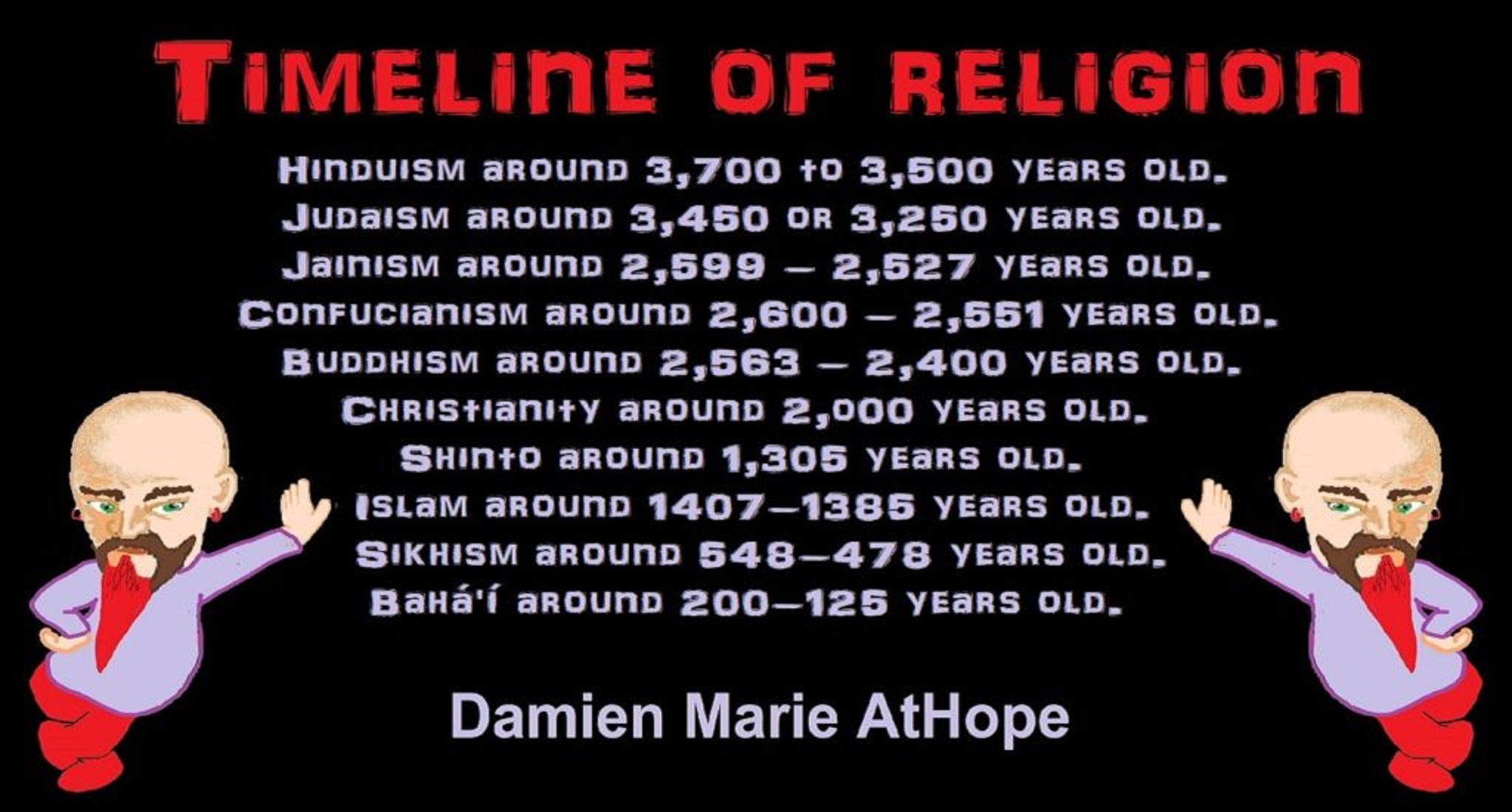
Hinduism around 3,700 to 3,500 years old. ref
Judaism around 3,450 or 3,250 years old. (The first writing in the bible was “Paleo-Hebrew” dated to around 3,000 years ago Khirbet Qeiyafa is the site of an ancient fortress city overlooking the Elah Valley. And many believe the religious Jewish texts were completed around 2,500) ref, ref
Judaism is around 3,450 or 3,250 years old. (“Paleo-Hebrew” 3,000 years ago and Torah 2,500 years ago)
“Judaism is an Abrahamic, its roots as an organized religion in the Middle East during the Bronze Age. Some scholars argue that modern Judaism evolved from Yahwism, the religion of ancient Israel and Judah, by the late 6th century BCE, and is thus considered to be one of the oldest monotheistic religions.” ref
“Yahwism is the name given by modern scholars to the religion of ancient Israel, essentially polytheistic, with a plethora of gods and goddesses. Heading the pantheon was Yahweh, the national god of the Israelite kingdoms of Israel and Judah, with his consort, the goddess Asherah; below them were second-tier gods and goddesses such as Baal, Shamash, Yarikh, Mot, and Astarte, all of whom had their own priests and prophets and numbered royalty among their devotees, and a third and fourth tier of minor divine beings, including the mal’ak, the messengers of the higher gods, who in later times became the angels of Judaism, Christianity and Islam. Yahweh, however, was not the ‘original’ god of Israel “Isra-El”; it is El, the head of the Canaanite pantheon, whose name forms the basis of the name “Israel”, and none of the Old Testament patriarchs, the tribes of Israel, the Judges, or the earliest monarchs, have a Yahwistic theophoric name (i.e., one incorporating the name of Yahweh).” ref
“El is a Northwest Semitic word meaning “god” or “deity“, or referring (as a proper name) to any one of multiple major ancient Near Eastern deities. A rarer form, ‘ila, represents the predicate form in Old Akkadian and in Amorite. The word is derived from the Proto-Semitic *ʔil-, meaning “god”. Specific deities known as ‘El or ‘Il include the supreme god of the ancient Canaanite religion and the supreme god of East Semitic speakers in Mesopotamia’s Early Dynastic Period. ʼĒl is listed at the head of many pantheons. In some Canaanite and Ugaritic sources, ʼĒl played a role as father of the gods, of creation, or both. For example, in the Ugaritic texts, ʾil mlk is understood to mean “ʼĒl the King” but ʾil hd as “the god Hadad“. The Semitic root ʾlh (Arabic ʾilāh, Aramaic ʾAlāh, ʾElāh, Hebrew ʾelōah) may be ʾl with a parasitic h, and ʾl may be an abbreviated form of ʾlh. In Ugaritic the plural form meaning “gods” is ʾilhm, equivalent to Hebrew ʾelōhîm “powers”. In the Hebrew texts this word is interpreted as being semantically singular for “god” by biblical commentators. However the documentary hypothesis for the Old Testament (corresponds to the Jewish Torah) developed originally in the 1870s, identifies these that different authors – the Jahwist, Elohist, Deuteronomist, and the Priestly source – were responsible for editing stories from a polytheistic religion into those of a monotheistic religion. Inconsistencies that arise between monotheism and polytheism in the texts are reflective of this hypothesis.” ref
Jainism around 2,599 – 2,527 years old. ref
Confucianism around 2,600 – 2,551 years old. ref
Buddhism around 2,563/2,480 – 2,483/2,400 years old. ref
Christianity around 2,o00 years old. ref
Shinto around 1,305 years old. ref
Islam around 1407–1385 years old. ref

Knowledge to Ponder:
Stars/Astrology:
- Possibly, around 30,000 years ago (in simpler form) to 6,000 years ago, Stars/Astrology are connected to Ancestors, Spirit Animals, and Deities.
- The star also seems to be a possible proto-star for Star of Ishtar, Star of Inanna, or Star of Venus.
- Around 7,000 to 6,000 years ago, Star Constellations/Astrology have connections to the “Kurgan phenomenon” of below-ground “mound” stone/wood burial structures and “Dolmen phenomenon” of above-ground stone burial structures.
- Around 6,500–5,800 years ago, The Northern Levant migrations into Jordon and Israel in the Southern Levant brought new cultural and religious transfer from Turkey and Iran.
- “The Ghassulian Star,” a mysterious 6,000-year-old mural from Jordan may have connections to the European paganstic kurgan/dolmens phenomenon.
“Astrology is a range of divinatory practices, recognized as pseudoscientific since the 18th century, that claim to discern information about human affairs and terrestrial events by studying the apparent positions of celestial objects. Different cultures have employed forms of astrology since at least the 2nd millennium BCE, these practices having originated in calendrical systems used to predict seasonal shifts and to interpret celestial cycles as signs of divine communications. Most, if not all, cultures have attached importance to what they observed in the sky, and some—such as the Hindus, Chinese, and the Maya—developed elaborate systems for predicting terrestrial events from celestial observations. Western astrology, one of the oldest astrological systems still in use, can trace its roots to 19th–17th century BCE Mesopotamia, from where it spread to Ancient Greece, Rome, the Islamicate world and eventually Central and Western Europe. Contemporary Western astrology is often associated with systems of horoscopes that purport to explain aspects of a person’s personality and predict significant events in their lives based on the positions of celestial objects; the majority of professional astrologers rely on such systems.” ref
Around 5,500 years ago, Science evolves, The first evidence of science was 5,500 years ago and was demonstrated by a body of empirical, theoretical, and practical knowledge about the natural world. ref
Around 5,000 years ago, Origin of Logics is a Naturalistic Observation (principles of valid reasoning, inference, & demonstration) ref
Around 4,150 to 4,000 years ago: The earliest surviving versions of the Sumerian Epic of Gilgamesh, which was originally titled “He who Saw the Deep” (Sha naqba īmuru) or “Surpassing All Other Kings” (Shūtur eli sharrī) were written. ref
Hinduism:
- 3,700 years ago or so, the oldest of the Hindu Vedas (scriptures), the Rig Veda was composed.
- 3,500 years ago or so, the Vedic Age began in India after the collapse of the Indus Valley Civilization.
Judaism:
- around 3,000 years ago, the first writing in the bible was “Paleo-Hebrew”
- around 2,500 years ago, many believe the religious Jewish texts were completed
Myths: The bible inspired religion is not just one religion or one myth but a grouping of several religions and myths
- Around 3,450 or 3,250 years ago, according to legend, is the traditionally accepted period in which the Israelite lawgiver, Moses, provided the Ten Commandments.
- Around 2,500 to 2,400 years ago, a collection of ancient religious writings by the Israelites based primarily upon the Hebrew Bible, Tanakh, or Old Testament is the first part of Christianity’s bible.
- Around 2,400 years ago, the most accepted hypothesis is that the canon was formed in stages, first the Pentateuch (Torah).
- Around 2,140 to 2,116 years ago, the Prophets was written during the Hasmonean dynasty, and finally the remaining books.
- Christians traditionally divide the Old Testament into four sections:
- The first five books or Pentateuch (Torah).
- The proposed history books telling the history of the Israelites from their conquest of Canaan to their defeat and exile in Babylon.
- The poetic and proposed “Wisdom books” dealing, in various forms, with questions of good and evil in the world.
- The books of the biblical prophets, warning of the consequences of turning away from God:
- Henotheism:
- Exodus 20:23 “You shall not make other gods besides Me (not saying there are no other gods just not to worship them); gods of silver or gods of gold, you shall not make for yourselves.”
- Polytheism:
- Judges 10:6 “Then the sons of Israel again did evil in the sight of the LORD, served the Baals and the Ashtaroth, the gods of Aram, the gods of Sidon, the gods of Moab, the gods of the sons of Ammon, and the gods of the Philistines; thus they forsook the LORD and did not serve Him.”
- 1 Corinthians 8:5 “For even if there are so-called gods whether in heaven or on earth, as indeed there are many gods and many lords.”
- Monotheism:
- Isaiah 43:10 “You are my witnesses,” declares the LORD, “and my servant whom I have chosen, so that you may know and believe me and understand that I am he. Before me no god was formed, nor will there be one after me.
Around 2,570 to 2,270 Years Ago, there is a confirmation of atheistic doubting as well as atheistic thinking, mainly by Greek philosophers. However, doubting gods is likely as old as the invention of gods and should destroy the thinking that belief in god(s) is the “default belief”. The Greek word is apistos (a “not” and pistos “faithful,”), thus not faithful or faithless because one is unpersuaded and unconvinced by a god(s) claim. Short Definition: unbelieving, unbeliever, or unbelief.
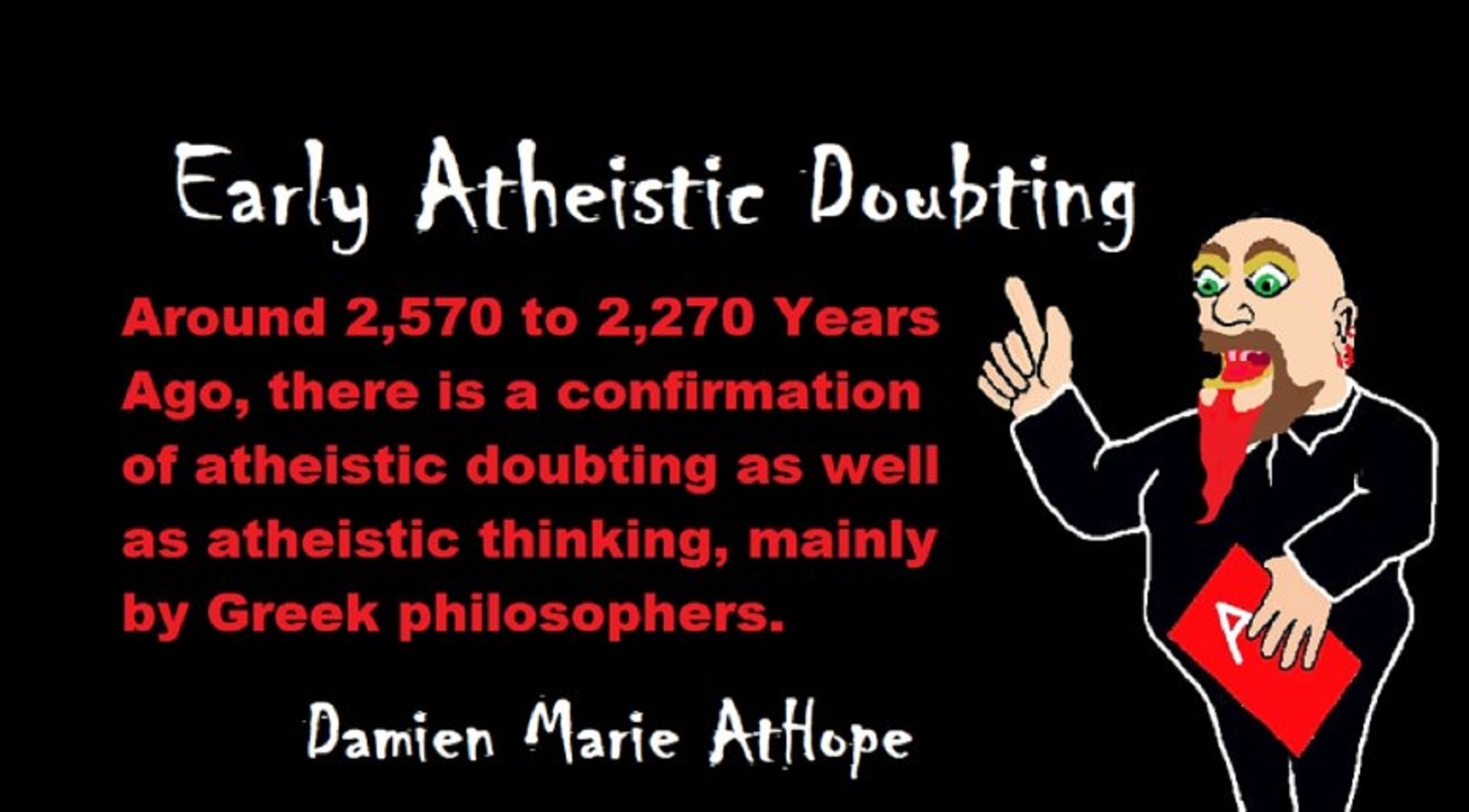
Expressions of Atheistic Thinking:
- Around 2,600 years ago, Ajita Kesakambali, ancient Indian philosopher, who is the first known proponent of Indian materialism. ref
- Around 2,535 to 2,475 years ago, Heraclitus, Greek pre-Socratic philosopher, a native of the Greek city Ephesus, Ionia, on the coast of Anatolia, also known as Asia Minor or modern Turkey. ref
- Around 2,500 to 2,400 years ago, according to The Story of Civilization book series certain African pygmy tribes have no identifiable gods, spirits, or religious beliefs or rituals, and even what burials accrue are without ceremony. ref
- Around 2,490 to 2,430 years ago, Empedocles, Greek pre-Socratic philosopher and a citizen of Agrigentum, a Greek city in Sicily. ref
- Around 2,460 to 2,370 years ago, Democritus, Greek pre-Socratic philosopher considered to be the “father of modern science” possibly had some disbelief amounting to atheism. ref
- Around 2,399 years ago or so, Socrates, a famous Greek philosopher was tried for sinfulness by teaching doubt of state gods. ref
- Around 2,341 to 2,270 years ago, Epicurus, a Greek philosopher known for composing atheistic critics and famously stated, “Is God willing to prevent evil, but not able? Then he is not omnipotent. Is he able, but not willing? Then he is malevolent. Is he both able and willing? Then whence cometh evil? Is he neither able nor willing? Then why call him god?” ref
This last expression by Epicurus, seems to be an expression of Axiological Atheism. To understand and utilize value or actually possess “Value Conscious/Consciousness” to both give a strong moral “axiological” argument (the problem of evil) as well as use it to fortify humanism and positive ethical persuasion of human helping and care responsibilities. Because value-blindness gives rise to sociopathic/psychopathic evil.
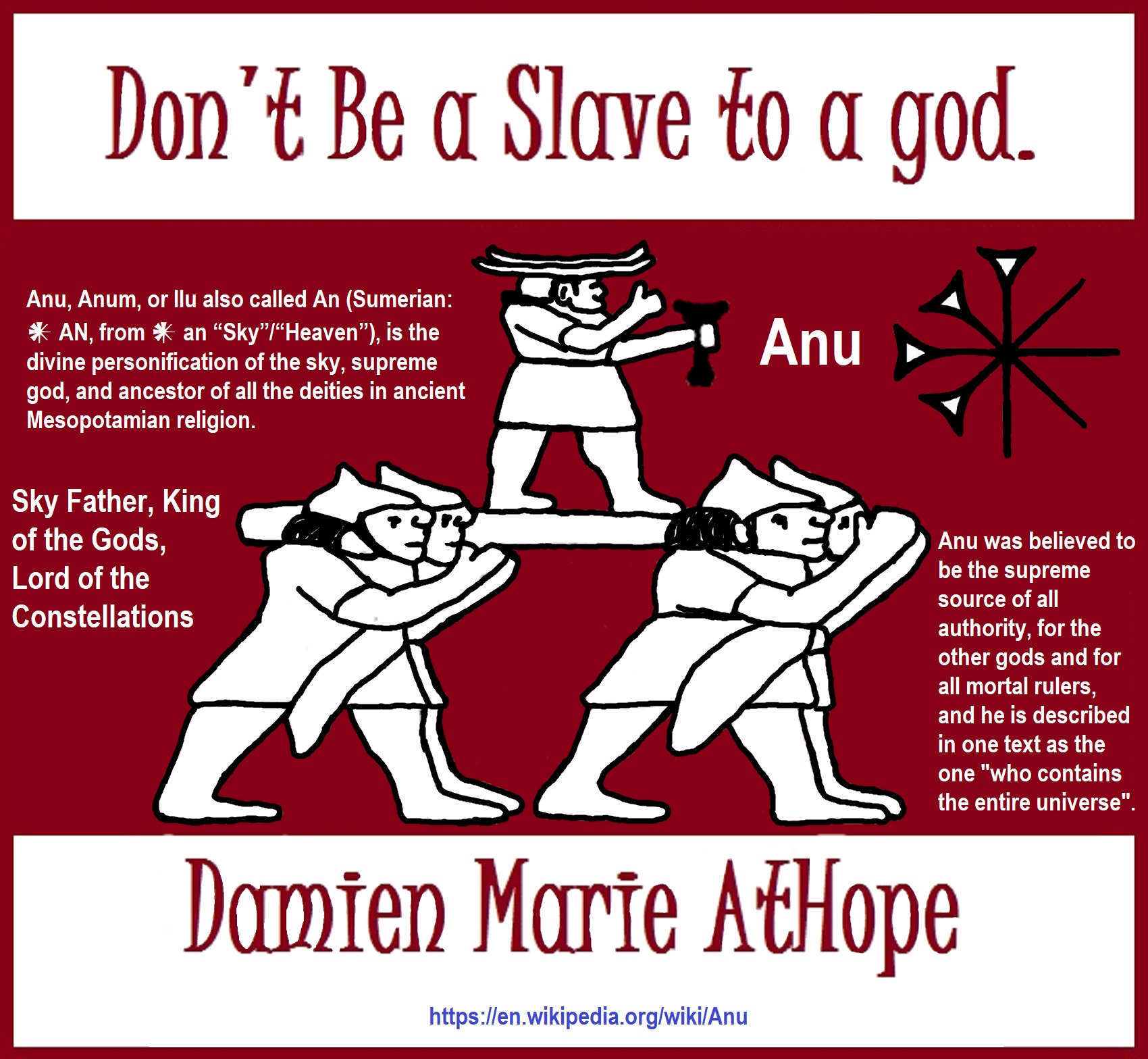
“Theists, there has to be a god, as something can not come from nothing.”
Well, thus something (unknown) happened and then there was something. This does not tell us what the something that may have been involved with something coming from nothing. A supposed first cause, thus something (unknown) happened and then there was something is not an open invitation to claim it as known, neither is it justified to call or label such an unknown as anything, especially an unsubstantiated magical thinking belief born of mythology and religious storytelling.
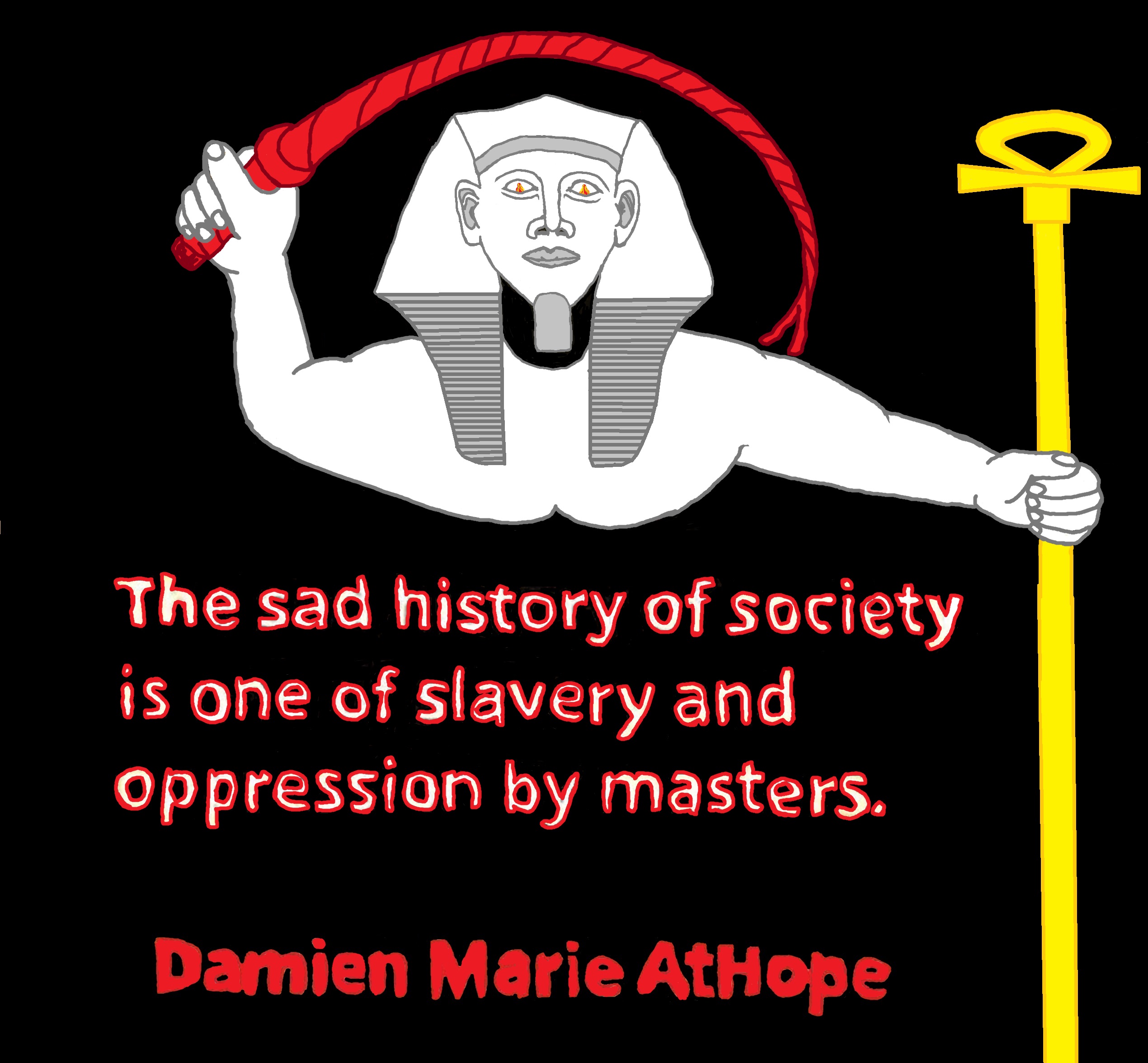
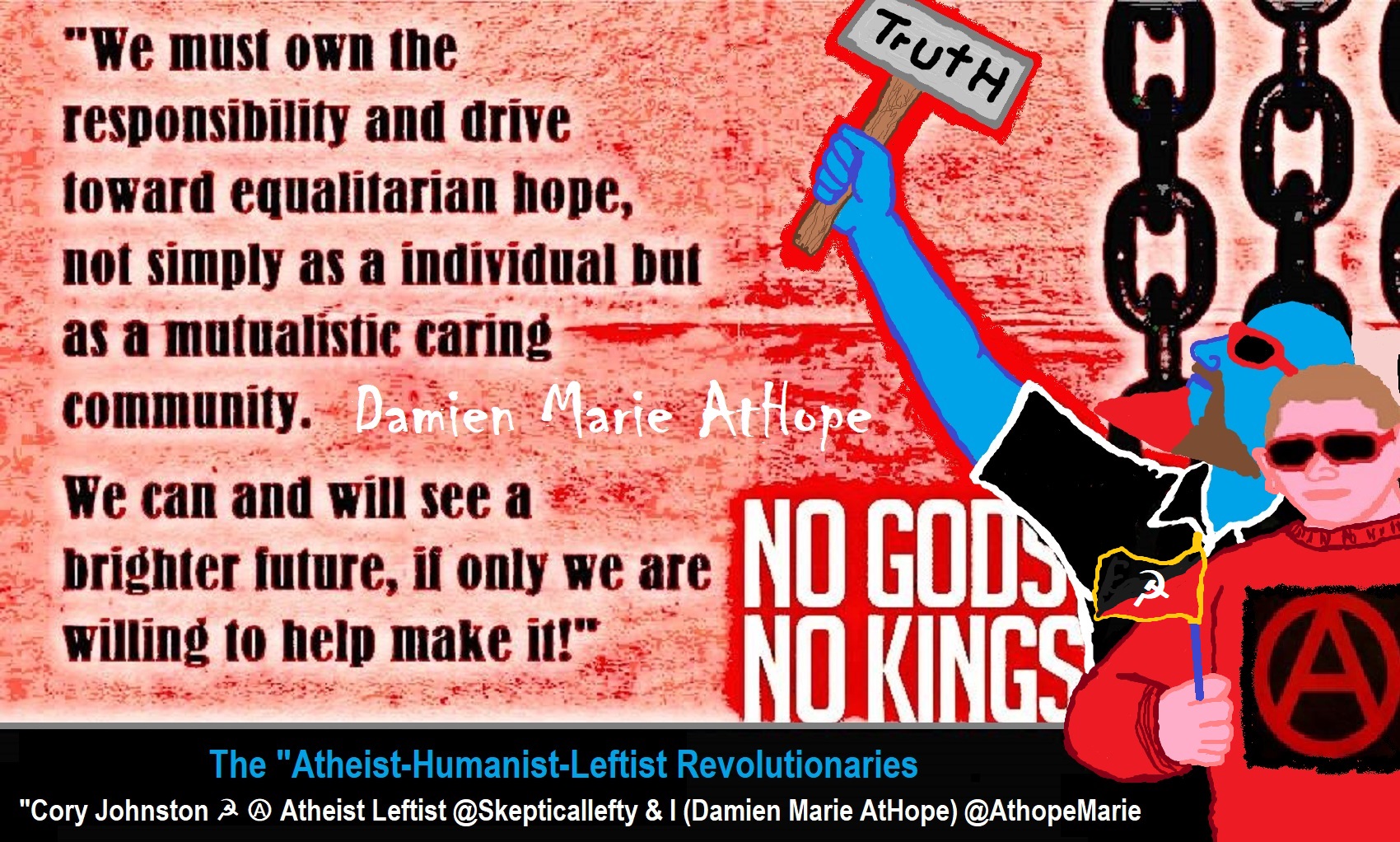
While hallucinogens are associated with shamanism, it is alcohol that is associated with paganism.
The Atheist-Humanist-Leftist Revolutionaries Shows in the prehistory series:
Show two: Pre-animism 300,000 years old and animism 100,000 years old: related to “Anarchism and Socialism”
Show tree: Totemism 50,000 years old: related to “Anarchism and Socialism”
Show four: Shamanism 30,000 years old: related to “Anarchism and Socialism”
Show five: Paganism 12,000 years old: related to “Anarchism and Socialism”
Show six: Emergence of hierarchy, sexism, slavery, and the new male god dominance: Paganism 7,000-5,000 years old: related to “Anarchism and Socialism” (Capitalism) (World War 0) Elite and their slaves!
Prehistory: related to “Anarchism and Socialism” the division of labor, power, rights, and recourses: VIDEO
Pre-animism 300,000 years old and animism 100,000 years old: related to “Anarchism and Socialism”: VIDEO
Totemism 50,000 years old: related to “Anarchism and Socialism”: VIDEO
Shamanism 30,000 years old: related to “Anarchism and Socialism”: VIDEO
Paganism 12,000 years old: related to “Anarchism and Socialism” (Pre-Capitalism): VIDEO
Paganism 7,000-5,000 years old: related to “Anarchism and Socialism” (Capitalism) (World War 0) Elite and their slaves: VIEDO
Paganism 5,000 years old: progressed organized religion and the state: related to “Anarchism and Socialism” (Kings and the Rise of the State): VIEDO
Paganism 4,000 years old: related to “Anarchism and Socialism” (First Moralistic gods, then the Origin time of Monotheism): VIEDO
I do not hate simply because I challenge and expose myths or lies any more than others being thought of as loving simply because of the protection and hiding from challenge their favored myths or lies.
The truth is best championed in the sunlight of challenge.
An archaeologist once said to me “Damien religion and culture are very different”
My response, So are you saying that was always that way, such as would you say Native Americans’ cultures are separate from their religions? And do you think it always was the way you believe?
I had said that religion was a cultural product. That is still how I see it and there are other archaeologists that think close to me as well. Gods too are the myths of cultures that did not understand science or the world around them, seeing magic/supernatural everywhere.
I personally think there is a goddess and not enough evidence to support a male god at Çatalhöyük but if there was both a male and female god and goddess then I know the kind of gods they were like Proto-Indo-European mythology.
This series idea was addressed in, Anarchist Teaching as Free Public Education or Free Education in the Public: VIDEO
Our 12 video series: Organized Oppression: Mesopotamian State Force and the Politics of power (9,000-4,000 years ago), is adapted from: The Complete and Concise History of the Sumerians and Early Bronze Age Mesopotamia (7000-2000 BC): https://www.youtube.com/watch?v=szFjxmY7jQA by “History with Cy“
Show #1: Mesopotamian State Force and the Politics of Power (Samarra, Halaf, Ubaid)
Show #2: Mesopotamian State Force and the Politics of Power
Show #3: Mesopotamian State Force and the Politics of Power (Uruk and the First Cities)
Show #4: Mesopotamian State Force and the Politics of Power (First Kings)
Show #5: Mesopotamian State Force and the Politics of Power (Early Dynastic Period)
Show #6: Mesopotamian State Force and the Politics of Power
Show #7: Mesopotamian State Force and the Politics of Power (Sargon and Akkadian Rule)
Show #9: Mesopotamian State Force and the Politics of Power (Gudea of Lagash and Utu-hegal)
Show #12: Mesopotamian State Force and the Politics of Power (Aftermath and Legacy of Sumer)
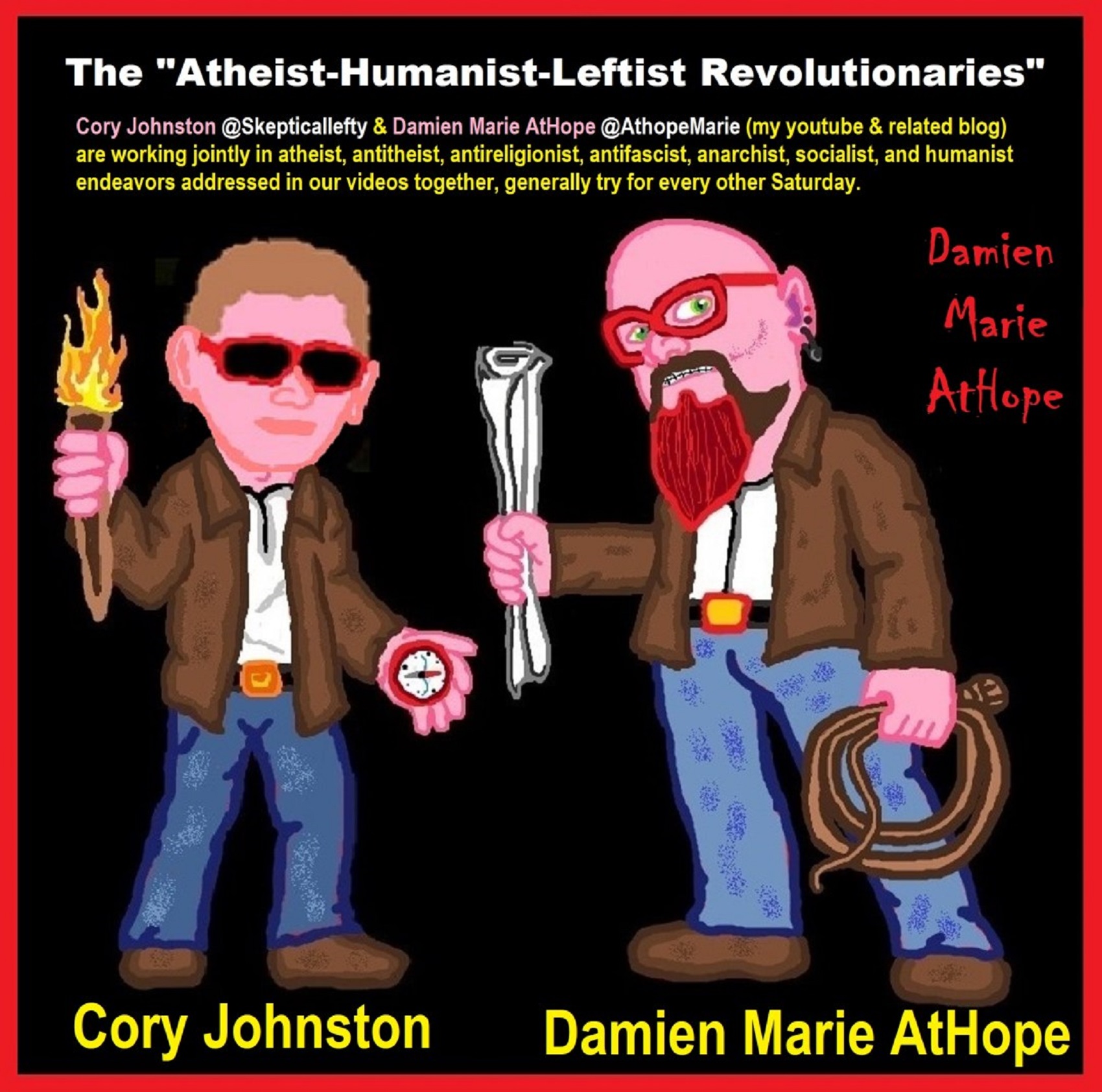
The “Atheist-Humanist-Leftist Revolutionaries”
Cory Johnston ☭ Ⓐ Atheist Leftist @Skepticallefty & I (Damien Marie AtHope) @AthopeMarie (my YouTube & related blog) are working jointly in atheist, antitheist, antireligionist, antifascist, anarchist, socialist, and humanist endeavors in our videos together, generally, every other Saturday.
Why Does Power Bring Responsibility?
Think, how often is it the powerless that start wars, oppress others, or commit genocide? So, I guess the question is to us all, to ask, how can power not carry responsibility in a humanity concept? I know I see the deep ethical responsibility that if there is power their must be a humanistic responsibility of ethical and empathic stewardship of that power. Will I be brave enough to be kind? Will I possess enough courage to be compassionate? Will my valor reach its height of empathy? I as everyone, earns our justified respect by our actions, that are good, ethical, just, protecting, and kind. Do I have enough self-respect to put my love for humanity’s flushing, over being brought down by some of its bad actors? May we all be the ones doing good actions in the world, to help human flourishing.
I create the world I want to live in, striving for flourishing. Which is not a place but a positive potential involvement and promotion; a life of humanist goal precision. To master oneself, also means mastering positive prosocial behaviors needed for human flourishing. I may have lost a god myth as an atheist, but I am happy to tell you, my friend, it is exactly because of that, leaving the mental terrorizer, god belief, that I truly regained my connected ethical as well as kind humanity.
Cory and I will talk about prehistory and theism, addressing the relevance to atheism, anarchism, and socialism.
At the same time as the rise of the male god, 7,000 years ago, there was also the very time there was the rise of violence, war, and clans to kingdoms, then empires, then states. It is all connected back to 7,000 years ago, and it moved across the world.
Cory Johnston: https://damienmarieathope.com/2021/04/cory-johnston-mind-of-a-skeptical-leftist/?v=32aec8db952d
The Mind of a Skeptical Leftist (YouTube)
Cory Johnston: Mind of a Skeptical Leftist @Skepticallefty
The Mind of a Skeptical Leftist By Cory Johnston: “Promoting critical thinking, social justice, and left-wing politics by covering current events and talking to a variety of people. Cory Johnston has been thoughtfully talking to people and attempting to promote critical thinking, social justice, and left-wing politics.” http://anchor.fm/skepticalleft
Cory needs our support. We rise by helping each other.
Cory Johnston ☭ Ⓐ @Skepticallefty Evidence-based atheist leftist (he/him) Producer, host, and co-host of 4 podcasts @skeptarchy @skpoliticspod and @AthopeMarie
Damien Marie AtHope (“At Hope”) Axiological Atheist, Anti-theist, Anti-religionist, Secular Humanist. Rationalist, Writer, Artist, Poet, Philosopher, Advocate, Activist, Psychology, and Armchair Archaeology/Anthropology/Historian.
Damien is interested in: Freedom, Liberty, Justice, Equality, Ethics, Humanism, Science, Atheism, Antiteism, Antireligionism, Ignosticism, Left-Libertarianism, Anarchism, Socialism, Mutualism, Axiology, Metaphysics, LGBTQI, Philosophy, Advocacy, Activism, Mental Health, Psychology, Archaeology, Social Work, Sexual Rights, Marriage Rights, Woman’s Rights, Gender Rights, Child Rights, Secular Rights, Race Equality, Ageism/Disability Equality, Etc. And a far-leftist, “Anarcho-Humanist.”
I am not a good fit in the atheist movement that is mostly pro-capitalist, I am anti-capitalist. Mostly pro-skeptic, I am a rationalist not valuing skepticism. Mostly pro-agnostic, I am anti-agnostic. Mostly limited to anti-Abrahamic religions, I am an anti-religionist.
To me, the “male god” seems to have either emerged or become prominent around 7,000 years ago, whereas the now favored monotheism “male god” is more like 4,000 years ago or so. To me, the “female goddess” seems to have either emerged or become prominent around 11,000-10,000 years ago or so, losing the majority of its once prominence around 2,000 years ago due largely to the now favored monotheism “male god” that grow in prominence after 4,000 years ago or so.
My Thought on the Evolution of Gods?
Animal protector deities from old totems/spirit animal beliefs come first to me, 13,000/12,000 years ago, then women as deities 11,000/10,000 years ago, then male gods around 7,000/8,000 years ago. Moralistic gods around 5,000/4,000 years ago, and monotheistic gods around 4,000/3,000 years ago.
To me, animal gods were likely first related to totemism animals around 13,000 to 12,000 years ago or older. Female as goddesses was next to me, 11,000 to 10,000 years ago or so with the emergence of agriculture. Then male gods come about 8,000 to 7,000 years ago with clan wars. Many monotheism-themed religions started in henotheism, emerging out of polytheism/paganism.
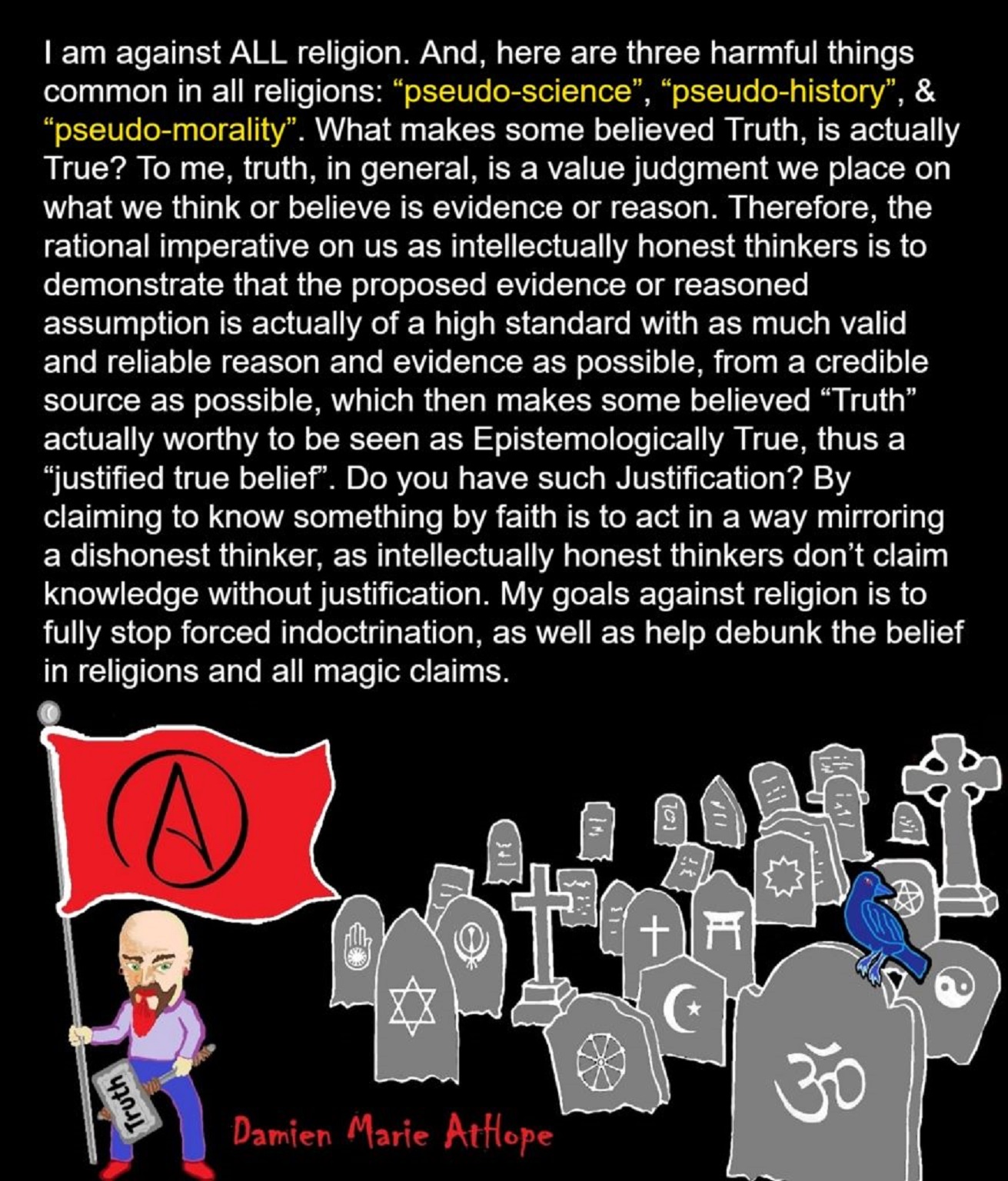
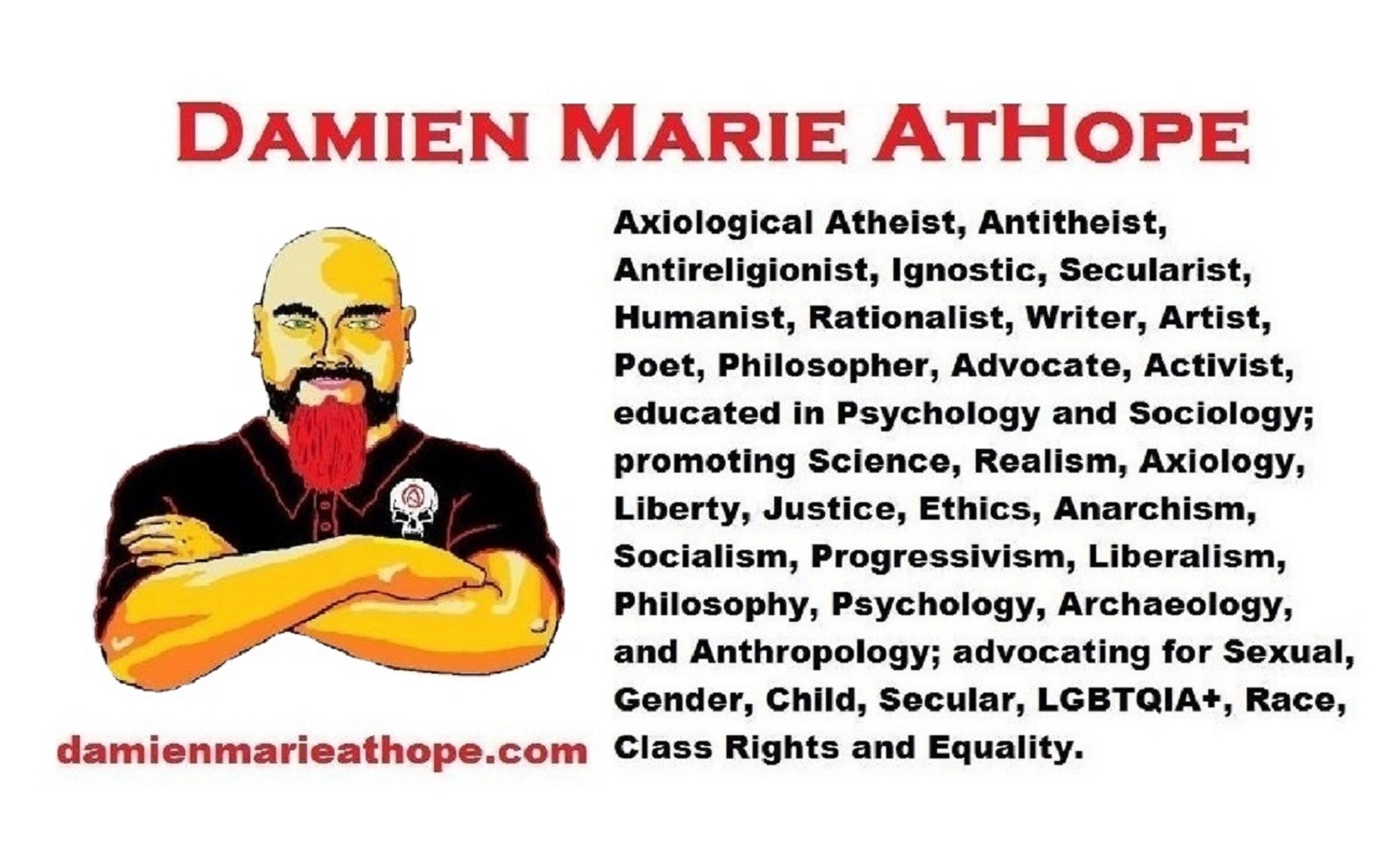
Damien Marie AtHope (Said as “At” “Hope”)/(Autodidact Polymath but not good at math):
Axiological Atheist, Anti-theist, Anti-religionist, Secular Humanist, Rationalist, Writer, Artist, Jeweler, Poet, “autodidact” Philosopher, schooled in Psychology, and “autodidact” Armchair Archaeology/Anthropology/Pre-Historian (Knowledgeable in the range of: 1 million to 5,000/4,000 years ago). I am an anarchist socialist politically. Reasons for or Types of Atheism
My Website, My Blog, & Short-writing or Quotes, My YouTube, Twitter: @AthopeMarie, and My Email: damien.marie.athope@gmail.com


